https://www.blackgate.com/
New Treasures and Interview: C.S.E. Cooney’s Saint Death’s Herald
Black Gate’s interview series on “Beauty in Weird Fiction” queries authors/artists about their muses and methods to make ‘repulsive things’ become ‘attractive.’ We’ve hosted C.S. Friedman, Carol Berg, Darrell Schweitzer, Anna Smith Spark, and Janet E Morris (full list of 29 interviews, with Black Gate hosting since 2018).
This round features C. S. E. Cooney (CSEC), who is no stranger to Black Gate [link to listings]. She is a two-time World Fantasy Award-winning author: first, for Bone Swans: Stories, and most recently for Saint Death’s Daughter. Previously on Black Gate, an all-star crew heralded its release with a video cast including readings of Saint Death’s Daughter by C.S.E. Cooney.
Forthcoming in April 2025 is Saint Death’s Herald, the second in the Saint Death series. In this post, we reveal exclusive details, CSEC’s creative process, and hint of Book #3’s contents! Read this and her contagious energy will infect you! Cripes, simply by doing this interview, I was infected with a buttery aura! Read more and learn C.S.E. Cooney’s real identity and code name too (Tiger of the gods? Or is it Lainey!)
An Interview with Saint Death’s Daughter (a.k.a. C.S.E. Cooney)SEL: Saint Death’s Daughter was released in 2022, and we’ll dig into that momentarily. Mark Rigney interviewed you a decade ago Black Gate (2014 link). How have you changed as an author since then? Were you inspired by your Lord Dunsany readings?
Re-reading that 2014 interview is hilarious. And exuberant. And painful. Oof. That line towards the end about Howard making me read Lord Dunsany? Seth, I have to say that right now, I just want Howard alive again, and making me read anything at all. That’s what I want.
[SEL Sidebar: Howard Andrew Jones, Black Gate print magazine editor, longtime author, and friend/mentor to countless writers, passed away this January after battling aggressive brain cancer. CSEC led the charge with a GoFundMe campaign for his family (with help from a crew including the just-mentioned Mark Rigney), and Black Gate has hosted several tributes (i.e., from John O’Neill, Jason Ray Carney, & Bob Byrne); as one of HAJ’s Skull Interns, I am capturing links to many more memorials. Peace to our dear friend.]
Otherwise, sadly: I don’t recall much about my Lord Dunsany readings. I didn’t even remember that reading Dunsany made me want to be referred to as “the tiger of the gods.” Now, why didn’t that catch on, I wonder? You may henceforth refer to me in this interview as “tiger of the gods,” please.
Have I changed as an author since then? Yes. Yes, I’m not as fast as I was ten years ago, and everything about the world seems harder, and sadder. I think it was always hard and sad, but I’m feeling it more now, I guess.
But also… also, it’s all so much more interesting.
Over the last ten years, I’d experienced such burnout, such weariness and bitterness about the craft, that at one point I announced I wasn’t going to write again until I wanted to write. My friends and family were afraid I was serious. (I was.) They were like, “Claire, what are you doing?”
But I really just wanted to want to write. Was any of the work even worth it if I didn’t want it anymore?
And it took a few weeks of me staring out a window, giving myself permission not to write. But then, suddenly and spontaneously one morning, I had one of those magical “what if” thoughts. That was something that hadn’t happened in literally years of revision and submission and revision and submission. The next morning, that “what if” had built into a whole dang story idea. So I sat down and started writing it out long hand — something I’d also not done in years. The experience was so pleasurable, so permissive, and so, I don’t know. Healing.
The whole world seemed new. Writing was possible again. Phew! I’d made it through the wasteland and to the other side.
Since then, the whole creative process just keeps getting weirder and more wonderful. Concentrating on the unique bizarreness of process has really opened me up to so many branching avenues of boundless curiosity.
Now I know: if I need to stop writing for a while, I will. (After I meet my deadlines, of course. That’s what a professional does.)
For me, the sensual ritual of writing has become the point. And community. Community is the point.
What else has changed? I’ve never done so much body mirroring while writing in my life: writing in silent zooms, or with people in the room. I’ve never done so much timed writing. I even started listening to music while writing — which I never used to do. I still can’t listen to anything with words (some Hildegard von Bingen chanting aside). I started listening to fantasy gaming soundtracks, because if I listen to movie soundtracks, I just have that movie’s story and dialogue running through my brain. But since I’ve not played most fantasy games, that’s not a problem. (I can’t, for example, listen to the Baldur’s Gate soundtrack, because I did play that. Which was awesome.)
I know this now: even when I’m sad, and tired, and lacking all motivation, I still want to want to write. All the rest is hacking my brain to get the motor running. Music, company, handwriting, candlelight… all of those rituals put me in a more celebratory and ludic headspace for writing.
What’s the same? Well… every time I have to write something new, it’s still like learning how to write all over again. Some of the same skills apply, sure, but I’m constantly learning how to write something I couldn’t even fathom before I started.
Like fight scenes. Fight scenes are so hard.
“Henceforth refer to me in this interview as ‘Tiger of the Gods’ ” — C.S.E. Cooney Saint Death’s Daughter (2023 World Fantasy Winner) Blurb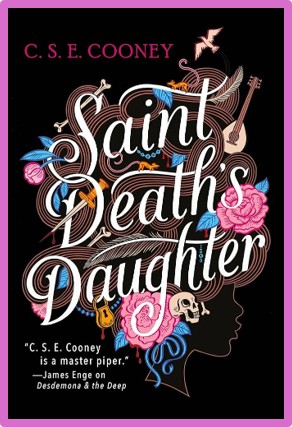
Nothing complicates life like Death.
Lanie Stones, the daughter of the Royal Assassin and Chief Executioner of Liriat, has never led a normal life. Born with a gift for necromancy and a literal allergy to violence, she was raised in isolation in the family’s crumbling mansion by her oldest friend, the ancient revenant Goody Graves.
When her parents are murdered, it falls on Lanie and her cheerfully psychotic sister Nita to settle their extensive debts or lose their ancestral home — and Goody with it. Appeals to Liriat’s ruler to protect them fall on indifferent ears… until she, too, is murdered, throwing the nation’s future into doubt.
Hunted by Liriat’s enemies, hounded by her family’s creditors and terrorised by the ghost of her great-grandfather, Lanie will need more than luck to get through the next few months — but when the goddess of Death is on your side, anything is possible.
At first glance, the summary of Saint Death’s Daughter sounds like a horror adventure, but it reads more like a comedic/fun, coming-of-age story. How would you describe the book to new readers?TIGER OF THE GODS: Generally, I give this elevator pitch: “Girl grows up in a family of assassins, but is allergic to violence. Her allergy indicates that one day, if she survives long enough, her aversion to violence will be so strong, she’ll be able to RAISE THE DEAD.”
Boom! Necromancy book, baby.
For comp titles, I say something along these lines: “Like if Terry Pratchett and the Addams Family had a necromancer baby who really liked pink frilly dresses and cutie patootie mouse skeletons.”
Those are light, easy ways about talking about my book. My book which is, in reality… much weirder.
BUT! I really don’t want to intimidate people. I want to invite people.
I also like to describe Saint Death’s Daughter as a Bildungsroman — a coming-of-age story. Now, I know that all YA books must perforce be coming-of-age stories. That’s the genre. It’s just that, at no point in the drafting process, did I imagine I was writing YA with Saint Death’s Daughter. But it is still a Bildungsroman.
I am, as I was ten years ago, still under the influence of Lois McMaster Bujold. I wanted to write a character like Bujold’s Miles Vorkosigan. The first few novellas about him may have covered his childhood, but over time, we get to experience him at many ages.
Saint Death’s Daughter is just Lanie Stones’s first book. It’s just one point in the timeline of her full life — perhaps not even the most important part. I imagine her in her thirties. (Sexy beast!) Her forties! (Whoa, what a powerhouse!) I imagine her as an old woman — with even more wisdom and compassion and mischief, and far, far more powerful. (Also, probably a foodie.) I imagine her on her deathbed. I imagine future scholars writing about her as a historical figure of a certain time and place that is perhaps no more. (This makes footnotes very fun.)
SEL: Discuss the media of necromancy which feels very artistic, especially the paint-like, colored essences of panthuama and ectenica.TIGER OF THE GODS: I made up the word “panthauma” out of the words “pan” (all) and “thaumaturgy” (miracle or marvel-working). I wanted a word for sorcery that was slightly alien, so I could apply my own set of rules to it without previous reader bias. But I also wanted, in addition to that whiff of mysterious, a sense of familiarity, linguistically-speaking.
And then I wanted a new word for “death magic” that wasn’t just, you know “death magic.” “Necromancy” is the obvious word, and I do use it in the book. But its actual etymology has more to do with divining via the dead than raising them up. (All the “-mancy” words have to do with divination.) So I wanted necromancy to be a specific kind of death magic, not the word for death magic.
I wanted a new word, something more flexible, less familiar. A word that evoked ghosts! And also super fun to say. So I took a closer look at our word “ectoplasm,” and then just sort of f*&%ed with it to make “ectenica.” Just say it aloud. All those clicky consonants!
Lanie’s a bit of a synesthete, in that she associates smells and colors with magic; that’s her brain trying to process the unimaginable. So, for panthauma, when the gods are drawing close and lighting up the world with Their attention, her vision goes bright-yellow with hard edges, like faceted topaz, and her body responds with a kind of champagne-y, effervescent reaction. Her sensual reaction to ectenica is much colder. She perceived it as a sort of starry blue. And the smell of her god, and of death magic, is always some variation of citrus. Other gods have other smells. I think, to some degree, most of the sorcerers/saints in my world have synesthesia.
SEL: Celerity Stones, one of Lanie’s aunts, was also a traditional artist, and her portfolio included portraiture like “Barely There: The Exquisite Art of Excoriation, With (Predominantly) Live Models”. I’d love to see her collection. Can you tell us more about Celerity’s inspiration and art?Celerity had been much in demand for her pen and ink drawings, her sanguine sketches, her oils, watercolors, and illuminated calligraphy. Later, she won renown as an anatomical scientist. Very precise with spreader, was never easy to ignore her most famous work, The Flayed Ideal, which hung on the wall of Stones Gallery and had a way of glaring at you. Its exposed and accusatory eyeballs, rendered in oil on canvas with exquisite delicacy, followed you around the room — and very often out the door and down the hall.
— from Saint Death’s Daughter
TIGER OF THE GODS: You know those stories we have of anatomists and resurrection men in prior centuries who’d illegally dig up bodies in order to study them, to become better doctors? (I’m glad that the laws — and some minds — have changed to allow for voluntary donation in such endeavors, but for a while it was considered absolutely heinous.) And you know all those stories about how powerful people in history — doctors, surgeons, psychologists, prisons, military — exploited marginalized communities, sometimes going so far as to medically experiment on people without their informed consent, for purposes of their own research?
That’s my inspiration for Celerity Stones.
She was not a good person. She was talented and precise and obsessed with her work. But she — like the whole toxic Stones family — hurt people to achieve her greatness.
One of the reasons that the Stones family ultimately falls is that cruelty like that is not sustainable, however it sometimes seems to advance society in the moment. Undoing the Stones’s legacy, and especially the glamorization of the violent family narrative, is something that Lanie has to consciously learn how to do as she gets older.
SEL: Every time I’ve seen you at Gen Con, you are wearing impressive regalia. Do you craft the costumes? Do they represent characters?TIGER OF THE GODS: I don’t craft costumes, per se. Like, I don’t think of myself as dressing up as certain characters. But I do dress according to my mood that day — or the mood I’d like to have. Heck, I just like dressing up. When I was a kid I had a “dress-up trunk” and I just preferred every secondhand prom dress and thrift store “glass slipper” (plastic with rhinestones) and dilapidated tiara to any of my school uniforms, softball jerseys, or neon skorts in my regular wardrobe. All these years later, I still do. Only now MOST of my closet is “dress-up” trunk.
These days, if I have to dress to go somewhere where there’s an expectation of dress code, that’s when I feel like I’m in costume. Like, when I go into the booth for audiobook narration, I have to wear “soft clothes.” I think of them as “ninja clothes,” but a friend of mine said it just looked like I was wearing pajamas. But you can’t wear anything that tinkles or rustles or chimes!
I was watching a “maximalist” influencer talking on Instagram about how the act of getting dressed is a creative process. And when you put together an outfit (or “fit” as the kids are calling it) to completion, you get that little bump of dopamine, like when you finish a puzzle or complete a recipe or win a game. Creative clothing is a small, achievable goal, and it makes me happy. Maybe, in some ways, I’ve been sartorially self-medicating since childhood!
Saint Death’s Herald BlurbMuch-anticipated follow-up to the whimsical, joyous, zombie-packed World Fantasy Award-winning Saint Death’s Daughter
Lanie Stones is the necromancer that Death has been praying for.
Heartbroken, exiled from her homeland as a traitor, Lanie Stones would rather take refuge in good books and delicate pastries than hunt a deathless abomination, but that is the duty she has chosen.
The abomination in question happens to be her own great-grandfather, the powerful necromancer Irradiant Stones. Grandpa Rad has escaped from his prison and stolen a body, and is heading to the icy country of Skakhmat where he died, to finish the genocide he started. Fortunately for her, Lanie has her powerful death magic, including the power to sing the restless dead to their eternal slumber; and she has her new family by her side.
Grandpa Rad may have finally met his match.
Saint Death’s Herald (preorder link) is coming in April 2025. What can we reveal? Anything special we can say about this, only heralded via Black Gate?TIGER OF THE GODS: Oh, gosh. Well. A Black Gate exclusive, eh?
Well, here’s the thing. I LOVE spoilers. I don’t even call them spoilers. I call them SPICERS. But not everybody (not even most people) think of them that way. So, with the caveat that those people who consider any information at all a SPOILER, perhaps they could skip this part?
Hush, come close! I’ll tell you, dear Black Gate readers, that Lanie Stones has only grown in power since Saint Death’s Daughter. I’ll tell you that when she enters fully into sympathy with a dead object, she can… SHARE PARTS OF ITS SHAPE.
She is also learning how to communicate through the dead — so if she has a… a toe bone, for example, from a particular corpse, and if you have a different toe bone from that same corpse, she’ll be able to call you. Like a one-way cell-phone.
My plan is, for Book 3, that Lanie will be so good at sharing shapes with the dead, that she can basically take on and maintain the appearance of any dead creature whose accident (physical material) she is in contact with. This makes going undercover to investigate crimes against the death god (totally random plot idea, not the basis for Book 3 at all, doo-dee-doo) much easier.
Can you discuss the cover art creation and artist?TIGER OF THE GODS: Oh, this is the wonderful, wonderful Kate Forrester! Fantasy readers will already know and love her work from such glorious novels as Zen Cho’s The True Queen and Theodora Goss’s Extraordinary Adventures of the Athena Club trilogy. Basically, for Book 1, my editor Kate Coe consulted me about different cover artist options, and some ideas for the art.
When Kate Forrester was chosen, Kate Coe and I generated a few wild cover ideas to throw her way. Then Forrester came up with the wonderful silhouette idea. My editor asked if I could send the artist a few elements from the book that the silhouette could have trapped in her hair.
Then, for Saint Death’s Herald, my editor David Moore arranged the same sort of information exchange. In Book 2, the silhouette is facing the opposite direction, with different elements caught in her hair. The cover was done long before the book was done — so I had to make sure that my final draft included all the visual cues that I had originally suggested when I was still in the early stages of writing! Phew!
I wonder what Book 3 will look like? Forward facing? Or two silhouettes facing in opposite directions? That would be kind of cool: especially if Lanie spends most of the book incognito — as both herself and not herself!
But that’s years away.
“For me, the sensual ritual of writing has become the point. And community. Community is the point…even when I’m sad, and tired, and lacking all motivation, I still want to want to write” – C.S.E. CooneyI adore your character names. For example, the protagonist & heroine “Lanie Stones” has a formal name of “Miscellaneous Stones”; and her contentious grandfather Irradiant ‘Grandpa Rad’ Stones. Can we contract you to assign us pseudonyms with all the grandeur your characters’ names have? I’d love to lure you into calling me names.
Tiger: That sounds like SO MUCH WORK! But it reminds me of the Fairy Tale Heroines workshop that The Carterhaugh School of Folklore and the Fantastic runs. One of the last things everyone does is assign themselves a “fairy tale heroine” (or hero/non-binary) name. But to do this, here are some questions: What’s your favorite animal? What kind of magic user would you be? If you could choose one of these to be: human, gentry (fairy folk), or goblin, which one would you be? If you were to choose one of the 12 gods from Saint Death’s Daughter, which would you choose? What’s your favorite obscure or forgotten word?
SEL: Eh gad, return fire. Those are hard questions! Fairy and “humors” (alchemical medicinal version) … and I am still learning the 12 gods of your stories. I’m too young and ignorant to recall them all and choose (I’m not worthy). I do love Lainey and her scarecrow though.
Tiger: Okay, then, so if you were a Stones, you’d probably be named Butter-of-Antimony Stones, son of Alkahest and Argyropoeia Stones…. Friends would call you “Bu” for short. (We won’t get into what your enemies call you.) And if you were a gentry, you probably would be named Crasis, a cloudskin (sometimes “cloud — skin” and sometimes “clouds-kin”) who can transform into whatever shape they please, though you will be insubstantial as vapor.
SEL: Okay, I want to know your secret Stoneses name too.
Tiger: Miscellaneous, of course!
BU: You are an award-winning poet (Rhysling Award-winning poem “The Sea King’s Second Bride” included in How to Flirt in Faerieland and Other Wild Rhymes), and have written plays. The previous Black Gate interview mentioned you also sing! Please discuss how expression works across media.TIGER OF THE GODS: Oh, gosh. I’m just drawn to some kinds of media over others. Like, I don’t have any current desire to write a screenplay or a graphic novel or MG/YA. But I often get the itch to write plays and musicals and poetry.
I just wrote a 10-minute play to submit to a local theatre festival for fun, and it felt so good to stretch those playwriting muscles again. My husband Carlos wrote one too! We both submitted to the same festival. Whatever happens now, at least we’ll have done something that challenged us artistically and brought us delight.
Re: musicals and albums: for the past few years, as time allows, I’ve been collaborating with Tina Connolly and Dr. Mary Crowell on a 6-episode musical theatre podcast called The Devil and Lady Midnight. And in 2023, I mounted a short, collaborative musical called Ballads from Distant Stars, with songs by myself, Amal El-Mohtar, and Caitlyn Paxson (with occasional melodies and harmonies by my brother Jeremy Cooney and Dr. Mary Crowell).
Eventually, I’d love to figure out how to bring both of the projects to full audio production. I’ll probably record Ballads from a Distant Star myself, with the help of my awesome musician brothers, and helpmate husband — like I did with my Brimstone Rhine album and EPs. However, The Devil and Lady Midnight will be a lot more complicated and expensive — but super rewarding if we can do the work!
What I’ve learned over the last 10 years about making albums and theatre: without an infrastructure already in place, a space to perform in, and people wanting to produce the work for you, you have to build that infrastructure from scratch. So there’s either a lot of crowdfunding involved, so you can hire people who already know what they’re doing to help you, or you’d better be ready to go full autodidact and learn how to do it all yourself. Whichever way you go, there’s still a cost: in time, in equipment, in the goodwill of the community, etc.
I try to find collaborators who are interested in making art for art’s sake with me. It’s not like I think we shouldn’t get paid, but I don’t really go into a creative project dreaming about all the money it might rake in. That said, I’m interested in collaborative partners who, once the creative process part is done, are also interested in taking that piece of polished art to production or publication — either via crowdfunding, bootstrapping, submitting, or grant-writing. Because it’s really daunting to try to run that gauntlet alone.
I also adore writing poetry. I stopped for a while — though in that lacuna, I did start writing songs — and now that I’m writing poetry again, I’ve got enough for a collection. I’m calling it The Day I Superglued the Moon: 10 Years in the Life of a Speculative Poet. It’s massive. It needs curation. I don’t know what to do with it. Self-publish? Ask my agent to submit it? Approach a small press?
Meanwhile, I feel so raw and tender and personal about it, because it’s poetry! so I keep avoiding doing anything at all. For now.
BU: ‘Macabre and beautiful’ (and fun) has even taken root in a game! You and your husband Carlos Hernandez co-designed a table-top roleplaying game called Negocios Infernales, Kickstarted October 2023. What is this game about? Does it inspire storytelling? Weirdly beautiful stories?“In the initial design, taking this all into account: here’s what we did. One of Claire’s favorite games is Mysterium, which she loves in part for its gorgeous, surreal cards that have this melancholy timbre to them. You can look at the cards and be inspired, even outside of the game. So I thought: What about instead of dice and all the rules that govern them, you have a deck of beautiful cards, maybe a little macabre, but also inspiring? It’s always very simple to determine success or failure in Negocios, as easy as Candyland. If your card matches one of the cards on your character sheet, success. If it doesn’t, not success! And everything else you just get to make up.” – Cultureslate Interview, Carlos Hernandez quoted
TIGER OF THE GODS: Co-designing a narrative game was a wild departure from my personal normal. And I’m so grateful that Carlos nudged me in that direction, because it opened up the whole world of gaming to me — board games, TTRPGs, and video games!
Carlos is a game designer, and when we first got together, he said I was perfect, I was MORE than perfect; maybe my only flaws were that I don’t like coffee and I don’t really play games.
Dear Black Gate Readers, I now like espresso. Okay, just a little bit of an espresso—¡un pocito espressito!—once every few months, but I can honestly say I like it.
And now, I also like games. But I didn’t always. In fact, I liked board games much better than TTRPGs when we first started playing together, for all that I’m an actor and a writer, and by my nature should be a shoe-in for roleplaying games. But I’d sort of had a “meh” view of TTRPGs, due to some less than stellar experiences, so Carlos suggested we design one together that I’d actually like.
We designed a game that has some moving pieces and some timed elements (like a board game), that’s big on character creation and world building and plot development, that’s easy for beginners, but also incredibly rich for experienced players. It’s so much fun, and so weird, and so moving.
Negocios Infernales’s tag line is: “The Spanish Inquisition… INTERRUPTED by aliens!”
Imagine a fantasy world — Gloriana — much like Earth (Gloriana’s more of a superplanet that’s mostly water, and it has two suns, but bear with me here). Now imagine a country called “Espada”—Spanish for “blade” — which is a lot like our Spain in the 15th century. The queen, Reina Resoluta, is about to sign religious persecution into law. Then… benevolent, enlightened aliens intervene! They offer cosmic powers in exchange for a zero-genocide policy on Espada.
Of course, the Espadans mistake the aliens for devils (because their deelie boppers look like horns), and while they do strike a deal for “magic powers,” they think their bargain is an infernal one.
So you play a “wizard” with “magical powers,” certain that you’ll be damned for all time for it. It is a game of cosmic irony.
One of the best things about it is our “Deck of Destiny.” It’s a 70-card oracle deck, and it’s our main mechanic for character creation, world-building, magic checks, inspiration, all of that.
But separate from the roleplaying game, we use the Deck of Destiny to run what we call “Infernal Salons,” where we invite writers and artists of every stripe to pull a card prompt or three. We set a timer. Everyone writes something, no matter what form it takes. And then, whoever wants to, shares aloud. This creates such fantastic, generative, creative nights. Many published stories and poems have come out of these salons, both for Carlos and myself, and also for many of the people who’ve participated. The “Infernal Salons may be my favorite thing that has come from designing this game.
Negocios Infernales is available for pre-order right now from Outland Entertainment, and should be in our backers’ hands in a few months — if the International Shipping gods are kind.
C. S. E. CooneyC. S. E. Cooney (she/her) is a two-time World Fantasy Award-winning author: for novel Saint Death’s Daughter, and collection Bone Swans, Stories. Other work includes The Twice-Drowned Saint, Dark Breakers, and Desdemona and the Deep. Forthcoming in 2025 is Saint Death’s Herald, second in the Saint Death Series. As a voice actor, Cooney has narrated over 120 audiobooks, and short fiction for podcasts like Uncanny Magazine, Beneath Ceaseless Skies, Tales to Terrify, and Podcastle. In March 2023, she produced her collaborative sci-fi musical, Ballads from a Distant Star, at New York City’s Arts on Site. (Find her music at Bandcamp under Brimstone Rhine.) Forthcoming from Outland Entertainment is the GM-less TTRPG Negocios Infernales (“the Spanish Inquisition… INTERRUPTED by aliens!”), co-designed with her husband, writer and game-designer Carlos Hernandez. Find her website and Substack newsletter via her Linktree or try “csecooney” on various social media platforms.
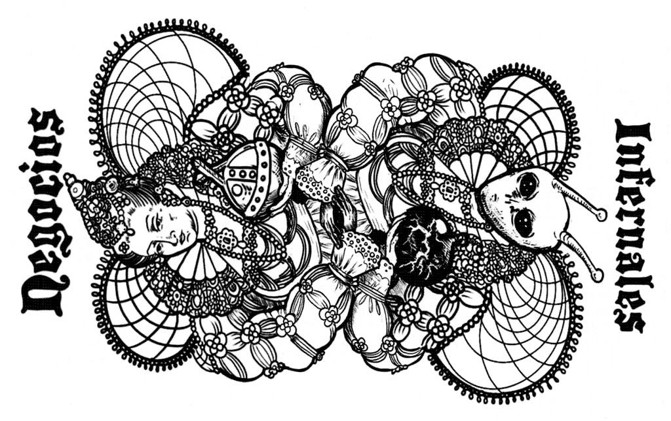 Other Weird and Beautiful Interviews #Weird Beauty Interviews on Black Gate:
Other Weird and Beautiful Interviews #Weird Beauty Interviews on Black Gate:
- Darrel Schweitzer THE BEAUTY IN HORROR AND SADNESS: AN INTERVIEW WITH DARRELL SCHWEITZER 2018
- Sebastian Jones THE BEAUTY IN LIFE AND DEATH: AN INTERVIEW WITH SEBASTIAN JONES 2018
- Charles Gramlich THE BEAUTIFUL AND THE REPELLENT: AN INTERVIEW WITH CHARLES A. GRAMLICH 2019
- Anna Smith Spark DISGUST AND DESIRE: AN INTERVIEW WITH ANNA SMITH SPARK 2019
- Carol Berg ACCESSIBLE DARK FANTASY: AN INTERVIEW WITH CAROL BERG 2019
- Byron Leavitt GOD, DARKNESS, & WONDER: AN INTERVIEW WITH BYRON LEAVITT 2021
- Philip Emery THE AESTHETICS OF SWORD & SORCERY: AN INTERVIEW WITH PHILIP EMERY 2021
- C. Dean Andersson DEAN ANDERSSON TRIBUTE INTERVIEW AND TOUR GUIDE OF HEL: BLOODSONG AND FREEDOM! (2021 repost of 2014)
- Jason Ray Carney SUBLIME, CRUEL BEAUTY: AN INTERVIEW WITH JASON RAY CARNEY(2021)
- Stephen Leigh IMMORTAL MUSE BY STEPHEN LEIGH: REVIEW, INTERVIEW, AND PRELUDE TO A SECRET CHAPTER(2021)
- John C. Hocking BEAUTIFUL PLAGUES: AN INTERVIEW WITH JOHN C. HOCKING (2022)
- Matt Stern BEAUTIFUL AND REPULSIVE BUTTERFLIES: AN INTERVIEW WITH M. STERN(2022)
- Joe Bonadonna MAKING WEIRD FICTION FUN: GRILLING DORGO THE DOWSER! 2022
- C.S. Friedman. BEAUTY AND NIGHTMARES ON ALIENS WORLDS: INTERVIEWING C. S. FRIEDMAN2023
- John R Fultz BEAUTIFUL DARK WORLDS: AN INTERVIEW WITH JOHN R. FULTZ(reboot of 2017 interview)
- John R Fultz, THE REVELATIONS OF ZANGBY JOHN R. FULTZ: READ THE FOREWORD AND INTERVIEW (2023)
- Robert Allen Lupton (2024) https://www.blackgate.com/2024/05/26/horror-and-beauty-in-edgar-rice-burroughs-work-an-interview-with-robert-allen-lupton/
- C.S.E. Cooney (2025) You are here!
- Interviews prior 2018 (i.e., with Janet E. Morris, Richard Lee Byers, Aliya Whitely …and many more) are on S.E. Lindberg’s website
S.E. Lindberg is a Managing Editor at Black Gate, regularly reviewing books and interviewing authors on the topic of “Beauty & Art in Weird-Fantasy Fiction.” He is also the lead moderator of the Goodreads Sword & Sorcery Group and an intern for Tales from the Magician’s Skull magazine. As for crafting stories, he has contributed eight entries across Perseid Press’s Heroes in Hell and Heroika series, and has an entry in Weirdbook Annual #3: Zombies. He independently publishes novels under the banner Dyscrasia Fiction; short stories of Dyscrasia Fiction have appeared in Whetstone, Swords & Sorcery online magazine, Rogues In the House Podcast’s A Book of Blades Vol I and Vol II, DMR’s Terra Incognita, and the 9th issue of Tales From the Magician’s Skull.
What I’ve Been Listening To: February, 2025
 I haven’t shared what I’ve been listening to, since November. How have you lasted this long??? Let’s rectify that right now, shall we?
I haven’t shared what I’ve been listening to, since November. How have you lasted this long??? Let’s rectify that right now, shall we?
ISAAC STEELE & THE FOREVER MAN – Daniel Rigby
This is the first of two originals produced by Audible as The Isaac Steele Chronicles – it’s not a print or digital book turned into an audiobook.
Rigby wrote it, and he narrates as well. He sounds a lot like Cary Elwes, which totally works for me (you want a great audiobook – Elwes’ memoir about the making of The Princess Bride, with several cast members reading their own parts, is superb).
It’s NSFW – I don’t play this one out loud in the office. I’d say ‘raunchy.’ So, take that for what it is.
Steele works for Greatest Britain’s Department of Clarification. He’s basically a police detective for the intergalactic British government. Greatest Britain is about as beloved as Britain was during the Colonial Era. Steele is never the most popular guy in the room. He also drinks, does drugs, has unresolved parental issues, and he’s not exactly a stickler for the rules. A scifi version of the hardboiled private eye trope.
He can be his own worst enemy, but there are plenty of other people, robots, and monsters, willing to make his life worse for him. He has a robotic partner, Timothy, who sulks in his tent like Achilles, after getting benched on the case. Steele is less than gracious in welcoming his new, temporary partner.
This is campy fun, without being silly. I can imagine that there are some seriously devoted fans, on board for more.
 It came out in 2021, and a sequel, Isaac Steele and the Best Idea in the Universe, followed up in 2024. I’m gonna listen to that after I finish this first one.
It came out in 2021, and a sequel, Isaac Steele and the Best Idea in the Universe, followed up in 2024. I’m gonna listen to that after I finish this first one.
Also, I listened to Larry Correia’s three-book Lost Planet Homicide series. I don’t care how you feel about him, or David Eddings, or Josh Whedon (I’m re-watching Firefly right now: man, Fox messed up with that one), or Orson Scott Card, or Neil Gaiman, or whoever. We all make our own decisions on what we watch and read (and what Eddings did hung a bit over my re-read of The Belgariad, which I still love). And the Hugos matter not a whit in my life. If you are bothered I listened to Correia, just move along, or quit reading me, or whatever. Let’s be adults.
Lost Planet Homicide is the title of the first book of the series of the same name. It’s a hardboiled cop (detective) book set in space. It’s definitely tongue-in-cheek, and I get if some people think it’s too over-the-top. But it’s intended to be, and I think it’s more homage than parody.
A colony ship went off course and ended up a thousand light years from Earth. Croatan has five mountain peaks the rise above a fatal cloud of acid that blankets the world. This is not a fun place. Corporations and criminal syndicates call the shots. Murder can be bought off usually. When it can’t, DCI Lutero Cade is called in to…gasp…actually solve the crime! If you think Chandler’s Philip Marlowe and Bay City was cynical, welcome to Five Peaks.
The stakes are epic, and the stories link together, but also stand-alone. Oliver Wyman does hardboiled PI pretty well. Good choice.
I’m a fan of Isaac Asimov’s R. Daneel Olivaw books (I wrote about them here). So, while I don’t do much scifi (which relegates me to the kiddie table at Black Gate gatherings), I don’t mind scifi cop/PI stuff. Both of these were fun listens, with different vibes.
MALIBU BURNING – Lee GoldbergI’m a huge fan of Lee Goldberg’s Monk books. I’ve also listened to all but the most recent Eve Ronin novel, and that is a terrific buddy cop series, set in Hollywood. It occasionally borders on as dark as I get (for a hardboiled fan, I’m a little squeamish), but never goes too far. Can’t wait to get to the most recent one, Dream Town.
Anywhoo, book three of his Sharpe & Walker series is coming in April. Walter Sharpe is an arson investigator, and his new partner is former US marshal Andrew Walker. And this 2023 title about central CA on fire, certainly is timely.
Lee was a terrific screenwriter. Go look up his IMDB page. He and his writing partner William Rabkin penned a couple excellent episodes for A&E’s A Nero Wolfe Mystery. But now Lee is a regular tenant on the NY Times’ best-seller list. He writes fast-paced, absorbing thrillers and crime dramas. I haven’t even managed to get around to his hit series co-written with Janet Evanovich.
I think you could pick any of his series’ (and you can never go wrong with Monk!) and be glad you did. I’m a fan of pulpster Stewart Sterling (real-name, Prentice Winchell). Which includes his Fire Marshal Pedley books (NY Harbor cop Steve Kosko is also fine ‘unconventional’ hardboiled PI). So, a current series, about an arson investigator, written by a top flight novelist, is right up my alley. Definitely recommended.
A POINT OF LAW – John Maddox RobertsBook ten of thirteen in Roberts’ fantastic SPQR series of mysteries set in Ancient Rome. I’ve talked about them here. I absolutely love these stories, and John Lee is the perfect narrator. Click on the link for more info. I have not been disappointed with a single book so far, and I am spacing out the remaining three (Roberts died last year).
He was long working on the next book in the series. I hope they decide to find somebody of quality and have them finish it (Scott Oden?). But I’m really glad I discovered these, late to the party as I was. It sparked an interest in Ancient Rome stuff again. For example, I went and read Michael Kurland’s Roman mysteries short story collection.
ROMAN BLOOD – Steven Saylor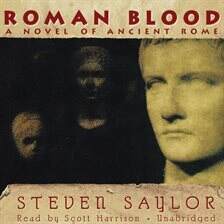 I have written about Saylor’s fictional recounting of the real-life Austin Servant Girl Annihilator. You read that, RIGHT? Saylor is best known for his Roma Sub Rosa mysteries set in…you guessed it, Ancient Rome!
I have written about Saylor’s fictional recounting of the real-life Austin Servant Girl Annihilator. You read that, RIGHT? Saylor is best known for his Roma Sub Rosa mysteries set in…you guessed it, Ancient Rome!
With the Roberts audiobooks fanning the flames; and having read Kurland’s stories: I was ready for more. Saylor was a no brainer.
He has written over a dozen books featuring Gordianus the Finder. Now, he ‘went back’ and wrote a prequel trilogy. I tried to start the first one, The Seven Wonders. Stephen Plunkett was unlistenable. It felt like he was trying to read the entire thing in a monotone. I had to quit.
However, I still wanted to give Saylor a try, so I got the first ‘proper’ Gordianus book, Roman Blood. Scott Harrison was much better as a narrator. I completed it and immediately moved on to Arms of Nemesis.
I like Gordianus. He’s not a public office holder doing official investigations, like Decius Caeceillius Metellus the younger. Gordianus is essentially a private eye. His bartering to get a bigger fee early in book two was amusing. As with most private eyes, he finds himself in peril more than once. And he ruffles important feathers.
I like the authenticity of the Roman world in Saylor’s and Roberts’ books. It really creates a vivid background. And while I love my Hammett and Nebel, the ancient world setting is pretty cool. Roman Blood taker place in 80 AD, in Rome.
I definitely recommend checking out Saylor, and Roberts, if this kind of thing appeals to you.
THE TROJAN WAR: A NEW HISTORY – Barry StraussSo, last week’s post was all about my life-long love of the Trojan War. Which is rooted in the Iliad. I listened to this non-fiction book on the topic, which got me fired up to write last week’s entry. This was a g
I am not really interested in the spate of Trojan War novels (especially the romance ones. Ugh). Though I mentioned last week, being a huge Rex Stout fan, I like The Great Legend. I’ve long intended to read some David Gemmell, and his trilogy of Trojan War novels seems like a no-brainer for that.
But I’m into the original myth, and the study of the war, and the real-life history around it.
Been awhile since I did a non-fiction book. I learned some things. It mixed content from The Iliad, with information related to it. I learned about battering rams (apparently the real ones weren’t like Grond…), sea power, the Greek city-states: just lots of interesting info. And, I always like hearing about Iliad stuff.
This was a good listen, letting me revisit the Trojan War. Sitting and reading this would have been more difficult, for a couple reasons. But the audiobook totally worked.
What I’ve Been Listening To: November, 2024
What I’ve Been Listening To: Sepetember, 2024
What I’ve Been Listening To: August, 2024
What I’ve Been Listening To: July, 2024
What I’ve Been Listening To: September 2022
May I Read You This Book?

Bob Byrne’s ‘A (Black) Gat in the Hand’ made its Black Gate debut in 2018 and has returned every summer since.
His ‘The Public Life of Sherlock Holmes’ column ran every Monday morning at Black Gate from March, 2014 through March, 2017. And he irregularly posts on Rex Stout’s gargantuan detective in ‘Nero Wolfe’s Brownstone.’ He is a member of the Praed Street Irregulars, founded www.SolarPons.com (the only website dedicated to the ‘Sherlock Holmes of Praed Street’).
He organized Black Gate’s award-nominated ‘Discovering Robert E. Howard’ series, as well as the award-winning ‘Hither Came Conan’ series. Which is now part of THE Definitive guide to Conan. He also organized 2023’s ‘Talking Tolkien.’
He has contributed stories to The MX Book of New Sherlock Holmes Stories — Parts III, IV, V, VI, XXI, and XXXIII.
He has written introductions for Steeger Books, and appeared in several magazines, including Black Mask, Sherlock Holmes Mystery Magazine, The Strand Magazine, and Sherlock Magazine.
Alternate Londons, the Future of Lotteries, and Colony Ships: January-February Print Magazines
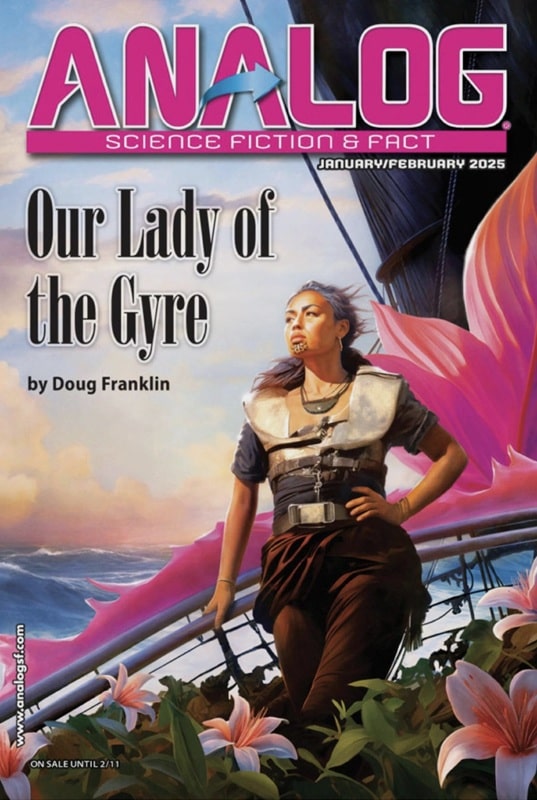
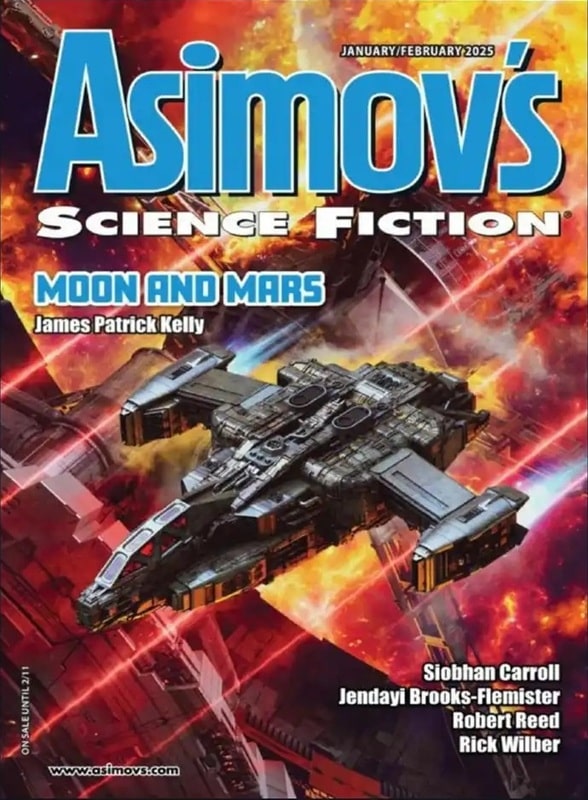
January-February 2025 issues of Analog Science Fiction & Fact and Asimov’s Science
Fiction. Cover art by Tomislav Tikulin (for “Our Lady of the Gyre”) and Shutterstock
Still no sign of the next issue of The Magazine of Fantasy & Science Fiction, which is disheartening. That leaves us with only two issues published last year (Winter 2024 and Summer 2024), and no hint when the next one might arrive. I’m hearing rumors that the magazine has been sold, but I’ve been unable to confirm that, so for now it’s just gossip.
But we’ve got issues of Asimov’s Science Fiction and Analog Science Fiction & Fact in hand, and they’re just as enticing as usual, with contributions from John Shirley, Sean McMullen, Mark W. Teidemann, Steve Rasnic Tem, Paul Di Filippo, Sakinah Hofler, James Van Pelt, James Patrick Kelly, Siobhan Carroll, Robert Reed, Faith Merino, Matthew Kressel, Rick Wilber, Jane Yolen, Kendall Evans, and many more.
The issues contain a new Great Ship tale by Robert Reed, a new Unsettled Worlds story by Siobhan Carroll (which Sam Tomaino calls a “suspenseful, exciting tale”), a new novelette “Rejuve Blues” from John Shirley (which Victoria Silverwolf labels “a suspenseful crime story and psychological study”), and the last installment in James Patrick Kelly’s trio of stories about Marishka Volochkova, “Moon and Mars,” which Sam proclaims is “probably another Nebula nominee.”
Victoria Silverwolf at Tangent Online enjoyed in the latest Analog.
“Our Lady of the Gyre” by Doug Franklin mostly takes place aboard a sea vessel that fights excess carbon dioxide in the atmosphere via bioengineered diatoms. The protagonist, who communicates with an artificial intelligence orbiting the Earth, takes two young people on his ship and faces a dangerous storm… a very dense work of fiction that requires careful reading. At first, it is difficult to tell what’s happening or what this future world is like, but patient readers will be rewarded with a vivid and imaginative tale with appealing characters.
The novelette “Rejuve Blues” by John Shirley features an elderly couple who win a lottery that offers them the chance to be young again. The man runs into trouble with criminals, while the woman, thinking he has left her, returns to her former activity as a fighter against the Taliban. The author creates a complex and convincing future that is neither utopian nor dystopian… a suspenseful crime story and psychological study.
The main character in “Go Your Own Way” by Chris Barnham accidentally discovers a way to travel into alternate versions of London, some very similar to the familiar one and others wildly different. He falls in love in one of these parallel worlds, but the arrival of an alternate version of himself causes complications. The plot is that of the eternal triangle, in which two of the people involved are the same person. (One might call it an isosceles triangle.) The various parallel Londons are described only briefly, and are far more interesting than the love story…
In the novelette “Prince of Spirals” by Sean McMullen, conspirators kidnap a forensic anthropologist and force him to study samples from the skeletons of two bodies thought to be the so-called Princes in the Tower, heirs to King Edward IV of England… The motive is to determine if either Prince survived to have descendants, giving members of the conspiracy a claim to the throne… This is a suspenseful crime story, with intriguing speculative technology and an interesting look at the techniques used by forensic anthropologists.
At first, “Quest of the Sette Comuni” by Paul Di Filippo seems like pure fantasy, as a female satyr and a golem set out to rescue a princess from a wizard, in order to free their master from his imprisonment by a sea-dwelling queen. It soon becomes clear that the golem is actually a machine and the other characters are the result of advanced biotechnology. The setting is richly imagined, from an underwater Venice inhabited by amphibious humans to an antagonist who has made himself resemble the Jabberwock from Lewis Carroll’s famous nonsense poem. Although not a comedy, the story has sufficient amount of subtle wit to draw the reader into its colorful world.
The magazine concludes with the novella “Apartment Wars” by Vera Brook. The setting is Poland in 1979. The widow of a scientist faces the possibility that she will be forced out of her relatively large apartment by the government because she lives alone. She expects her daughter and son-in-law to arrive soon as permanent guests, justifying her need for the place, but time is running out. Meanwhile, the abusive boyfriend of a neighbor threatens to expose her situation to the authorities… The situation takes a dramatic turn when the widow discovers an extraordinary device built by her husband.
Read Victoria’s complete review here.
The new Asimov’s is thoughtfully reviewed by Mina at Tangent Online. Here’s a sample.
“In the Splinterlands the Crows Fly Blind” by Siobhan Carroll takes patience to read. The world building is complex and initially confusing. The protagonist, Charlie, sets off to find his missing brother, Gabe, as well as Gabe’s girlfriend. There are some groovy invented words like Universe-shard, atmotech, Crowmind, Crowdogs and Vestigium — along with words from what seems to be a Cree dialect — they do eventually all make sense. Charlie finds himself a hero as he saves his fragment of world from destruction by the carelessness of “some rich guy stepping on butterflies.” Worth persisting.
“Five Hundred KPH Toward Heaven” by Matthew Kressel is set just after the heyday of lifts into space, reminiscent of train travel. They are being replaced by much faster, cheaper ships. In a final ascent party, Terese reminisces with other lift pilots and ponders on what is being lost — a sense of wonder and a sense of connection — “sometimes there’s benefits to going slow.”
“Shadow of Shadows” by Frank Ward is a pleasure to read because, once you reach the end, the title hits you with its full poignancy. This reader appreciates when an author does this so well. A washed-up research physicist stands at the threshold of finally finding proof for his theory of a “Many Worlds Interpretation.” The proof of alternate universes is, however, not without pain. A tale that explores not just quantum theory but also its emotional repercussions. I would read this twice.
The tension build-up in “What the Frog’s Eye Tells the Frog’s Brain” by Beston Barnett is incredible. One can only say: bravo! In this story, a desperate scientist, being interrogated and tortured by an AI courageously sets out to trick it into shutting down. The references to Linux, Hexspeak and ASCII are very satisfying for this linguist, for AI does indeed have its own language.
“My Biggest Fan” by Faith Merino is a creepy and ultimately sad tale. The narrator grows up seeing the same woman and hearing the same tune at regular intervals; but she is always a different age. She leaves him notes signed “your biggest fan.” When he finally understands why their trajectories keep overlapping, it’s tool late: they have become each other’s hell, as Sartre would say. Quantum particles meet stalker meet Greek tragedy.
In “Moon and Mars” by James Patrick Kelly, Moon-settler Mariska is part of the crew on the Natividad, a colonists’ ship she has joined to be with her Martian boyfriend, Elan. It soon becomes apparent that those with vested interests in the anti-matter that will power the ship through a wormhole to the Destination planet on the other side are trying to stop the mission. Mariska, her mother and Elan are all part of a group determined to take off early before the mission can be stopped. The race against time is gripping…. A great read.
Read Mina’s full review here.
Here’s all the details on the latest SF print mags.
[Click the images for bigger versions.]
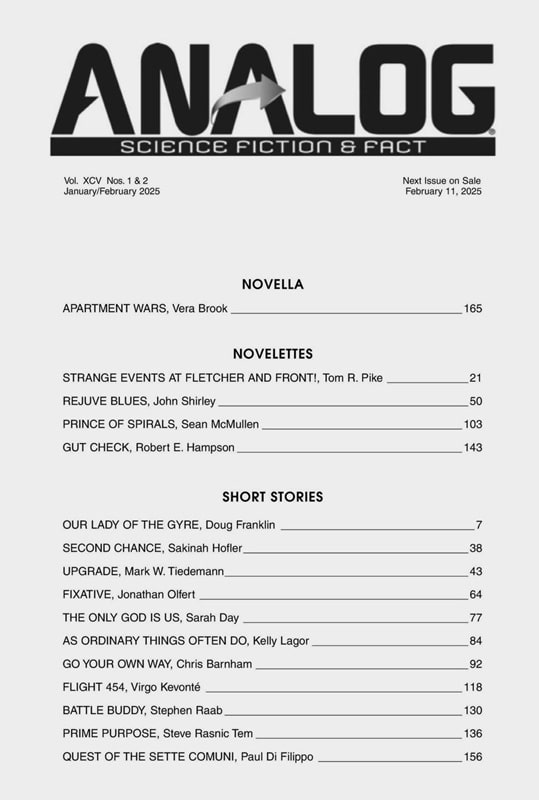
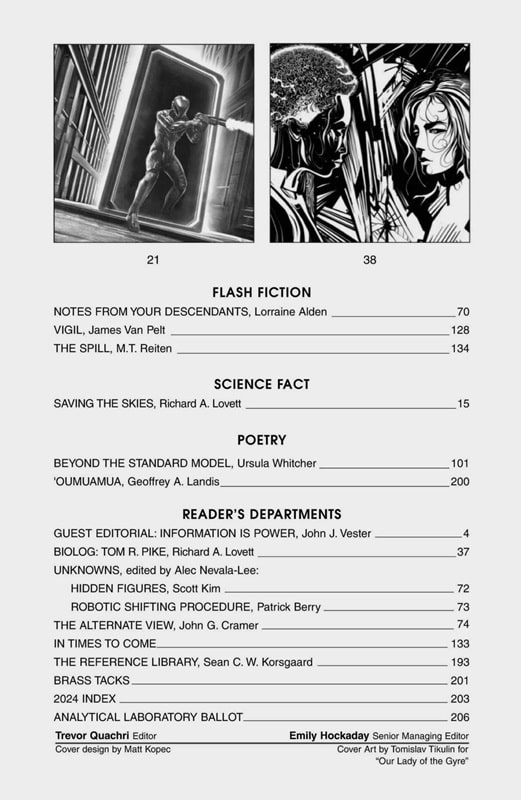
Contents of the January-February 2025 issue of Analog Science Fiction
Editor Trevor Quachri gives us a tantalizing summary of the current issue online, as usual. Sadly, I didn’t think to grab a copy before the latest issues dropped. Next time.
Here’s the full TOC.
Novella
“Apartment Wars” by Vera Brook
Novelettes
“Strange Events at Fletcher and Front!” by Tom R. Pike
“Rejuve Blues” by John Shirley
“Prince of Spirals” by Sean McMullen
“Gut Check” by Robert E. Hampson
Short Stories
“Our Lady of the Gyre” by Doug Franklin
“Second Chance” by Sakinah Hofler
“Upgrade” by Mark W. Teidemann
“Fixative” by Jonathan Olfert
“The Only God is Us” by Sarah Day
“As Ordinary Things Often Do” by Kelly Lagor
“Go Your Own Way” by Chris Barnham
“Flight 454” by Virgo Kevonté
“Battle Buddy” by Stephen Raab
“Prime Purpose” by Steve Rasnic Tem
“Quest of the Sette Comuni” by Paul Di Filippo
Flash Fiction
“Notes From Your Descendants” by Lorraine Alden
“Vigil” by James Van Pelt
“The Spill” by M.T. Reiten
Science Fact
Saving the Skies: How One Small City in Arizona is Pointing the Way to a Better (Darker) Way, by Richard A. Lovett
Poetry
Beyond the Standard Model by Ursula Whitcher
‘Oumuamua by Geoffrey A. Landis
Reader’s Departments
Guest Editorial: Information is Power by John J. Vester
Biolog: Tom R. Pike by Richard A. Lovett
Unknowns, edited by Alec Nevala-Lee:
Hidden Figures by Scott Kim
Robotic Shifting Procedure by Patrick Berry
The Alternate View by John G. Cramer
In Times to Come
The Reference Library by Sean C.W. Korsgaard
Brass Tacks
2024 Index
Upcoming Events by Anthony Lewis
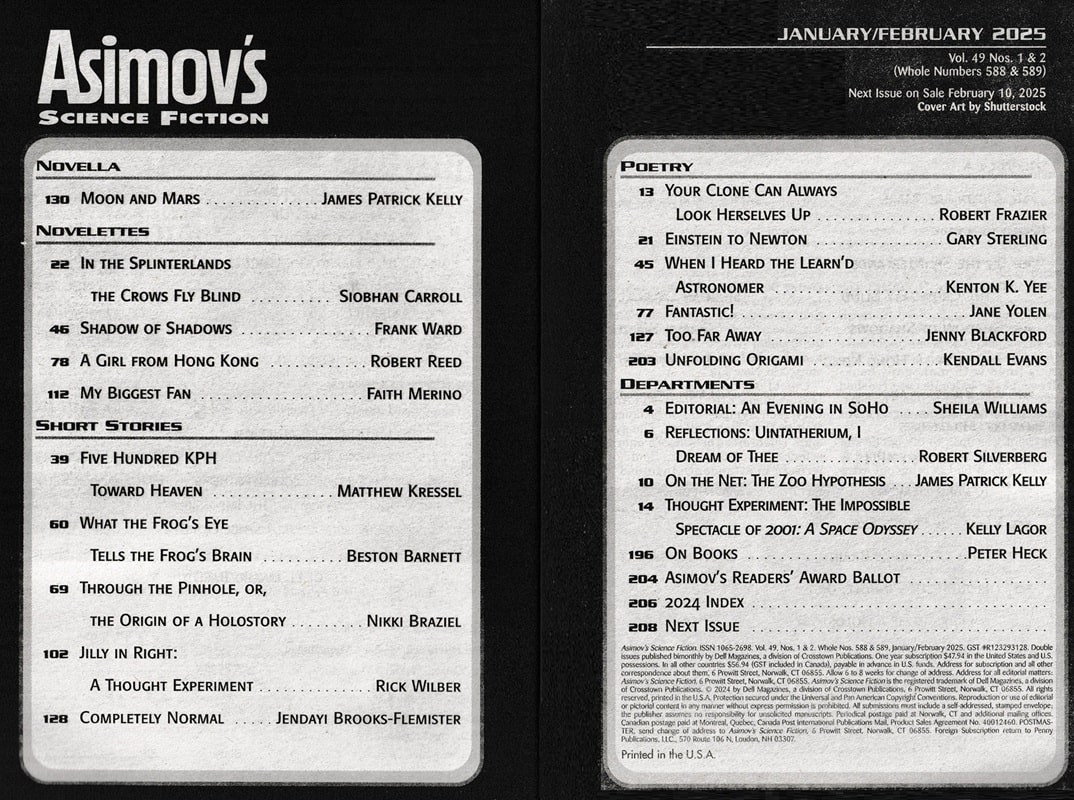 Contents of the January-February 2025 issue of Asimov’s Science Fiction
Asimov’s Science Fiction
Contents of the January-February 2025 issue of Asimov’s Science Fiction
Asimov’s Science Fiction
Sheila Williams provides a handy summary of the latest issue of Asimov’s at the website. But I missed it this month. Next time I’ll remember before it’s gone.
Here’s the complete Table of Contents.
Novella
“Moon and Mars” by James Patrick Kelly
Novelettes
“In the Splinterlands, the Crows Fly Blind” by Siobhan Carroll
“Shadow of Shadows” by Frank Ward
“A Girl from Hong Kong” by Robert Reed
“My Biggest Fan” by Faith Merino
Short Stories
“Five Hundred KPH Toward Heaven” by Matthew Kressel
“What the Frog’s Eye Tells the Frog’s Brain” by Beston Barnett
“Through the Pinhole, Or, the Origin of a Holostory” by Nikki Braziel
“Jilly in Right: A Thought Experiment” by Rick Wilber
“Completely Normal” by Jendayi Brooks-Flemister
Poetry
Your Clone Can Always Look Herselves Up by Robert Frazier
Einstein to Newton by Gary Sterling
When I Heard the Learn’d Astronomer by Kenton K. Yee
Fantastic! by Jane Yolen
Too Far Away by Jenny Blackford
Unfolding Origami by Kendall Evans
Departments
Editorial: An Evening in SoHo by Sheila Williams
Reflections: Uintatherium, I Dream of Thee by Robert Silverberg
On the Net: The Zoo Hypothesis by James Patrick Kelly
Thought Experiment: The Impossible Spectacle of 2001: A Space Odyssey by Kelly Lagor
On Books by Peter Heck
Asimov’s Readers’ Award Ballot
2024 Index
Next Issue
Analog, Asimov’s Science Fiction and The Magazine of Fantasy & Science Fiction are available wherever magazines are sold, and at various online outlets. Buy single issues and subscriptions at the links below.
Asimov’s Science Fiction (208 pages, $8.99 per issue, one year sub $47.97 in the US) — edited by Sheila Williams
Analog Science Fiction and Fact (208 pages, $8.99 per issue, one year sub $47.97 in the US) — edited by Trevor Quachri
The Magazine of Fantasy & Science Fiction (256 pages, $10.99 per issue, one year sub $65.94 in the US) — edited by Sheree Renée Thomas
The January-February issues of Asimov’s and Analog were on sale until February 11. See our coverage of the November-December issues here, and all our recent magazine coverage here.
What a Croc, Part III
 Black Water: Abyss (Altitude Film Entertainment, July 10, 2020)
Black Water: Abyss (Altitude Film Entertainment, July 10, 2020)
My next watch-a-thon is a favorite genre: crocs and gators. Unfortunately, this means the pickings are a bit slim, as I’ve already seen most of them, but I’ve managed to dig up 15 so far (supplemented with a Gila Monster and a couple of Komodos), and I’m sure the intended list of 20 will materialize as streaming services start suggesting titles.
What a Croc #14: Black Water: Abyss (2020) CrackleCroc or gator? Crocodile!
Real or faker? Some pretty great CG.
Any good? I do like me an Aussie croc flick, and this is one of them. The premise is simple: stick some folks in a cave, flood it, trap them, let loose a big croc. The spaces are tight, the tension is taut, and the croc has the good sense to eat the cast in order of character development.*
There’s a bit of relationship drama in the mix between meals, but at the end of the day it’s just a murky cocktail of Rogue and The Decent, but doesn’t come close to being as good as either. Still, I didn’t hate it, and it was well produced, so I’ll grade it a little higher.
7/10
*Now where have I seen that poster design before…?

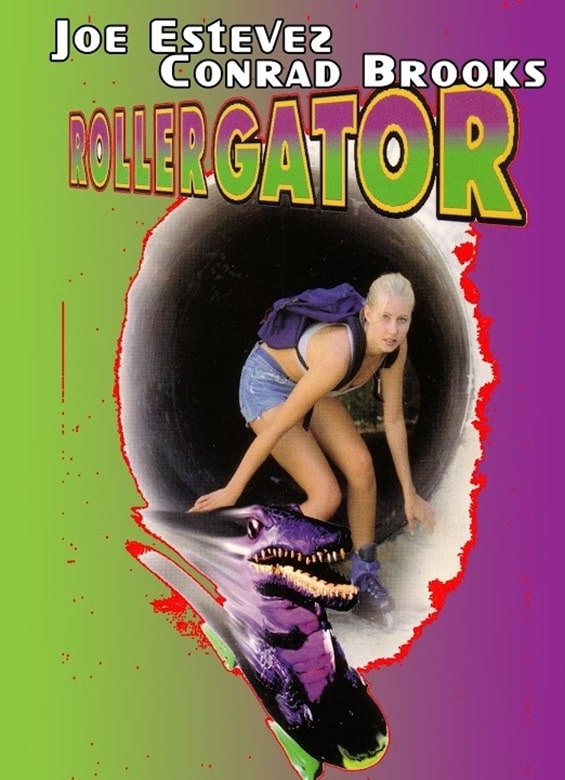
Lake Placid: The Final Chapter (Syfy, September 29, 2012) and Rollergator (RiffTrax, 1996)
Croc or gator? Alligator(s)!
Real or faker? All terrible CG.
Any good? I still have fond memories of the first time I watched Lake Placid — I was totally unprepared for the all round brilliance of it, from the writing and the cast to the effects and direction. Sadly, each successive sequel has been horrendous, and this one, the incorrectly named ‘Final Chapter’ is the penultimate nail in the coffin.*
As you can tell from the ‘quality’ poster, the story is trite, the characters uninteresting and the effects garbage — the only redeeming features might be Robert England (hamming it up in another gator flick), and Yancy Butler (wasted here as she reprises her role as a two-pack-a-day-voiced rogue ranger). The most egregious aspect of this one though, is the directing and editing. There’s only one director who can get away with that many crash zooms, and his name is Sam Raimi.
Raimi did not direct this.
4/10
*I just discovered there are actually TWO more Lake Placid films after this one. Not that it makes this any easier.
What a Croc #16: Rollergator (1996) TubiCroc or gator? Gator. Small. Purple.
Real or faker? A hand puppet.
Any good? I tried to find the original version of this, but had to settle for the Rifftrax version. Shocking admission: I don’t find Rifftrax particularly funny (not a huge fan of MST3K either) and they just paved the way for stuff like CinemaSins and every other armchair critic who thinks they’re funny. I am fully aware of the staggering hypocrisy of this statement, but there you go.
Anyway, in this film a roller skating woman meets a small, jive talking gator and tries to get him out of the carnival and back to the swamp. Presumably written by a third-grader, it’s utter crap. Not even funny or surreal enough to be a guilty pleasure — just a miserable, miserable slog.
1/10
 Mega Shark vs. Crocosaurus (The Asylum, December 21, 2010)
What a Croc #17: Mega Shark vs. Crocosaurus (2010) YouTube
Mega Shark vs. Crocosaurus (The Asylum, December 21, 2010)
What a Croc #17: Mega Shark vs. Crocosaurus (2010) YouTube
Croc or gator? Croc. Osaurus.
Real or faker? Rubbish CG.
Any good? You know what the answer is going to be, so let’s just cut to the chase. Robert Picardo is a fine actor, he voiced the male, culturally-obsessed alien in Joe Dante’s Explorers and I love him for that. He’s also good in everything else, but I guess he needed a new deck, because he’s in this.
Gary Stretch is also in this. British boxing fans may remember the name, the rest of you will just know him as a punching bag-faced enigma with the looks of a leading man and the mystery of a Swiffer. Sarah Lieving stars opposite him as a potentially badass special investigator who is relegated to scowling boobily at the rest of the cast while flying a pretend helicopter.
The story is rote, the direction and editing are dull and the effects are tragic. The titular creatures (especially the giant croc) are rendered in spectacular blur-o-vision, unhindered by weight or physics. I feel neither joy nor despair at having watched this film, I’m just languishing in a limbo populated by cookie cutters, tight vests and pixels.
4/10

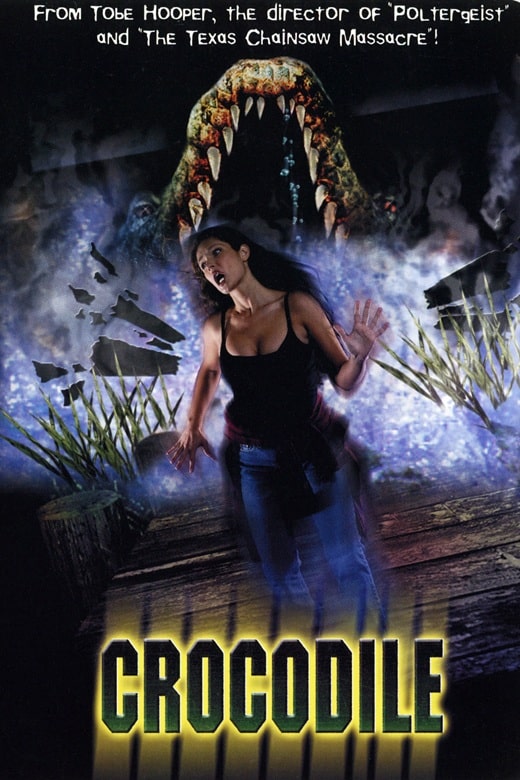
Croczilla (Beijing Enlight Pictures, 2012) and Crocodile (Lions Gate, August 26, 2000)
Croc or gator? Crocodile. Big boi.
Real or faker? Fairly decent CG (in parts).
Any good? I started watching this one quite early on in the watch-a-thon, and thought it had promise, so saved it to end on a high note. It is indeed fun, however, I would sorely love to see a subtitled version, as the English dubbing on this Chinese movie is horrendous.
Promoted as China’s ‘first monster movie’, a claim that has been made on several of the films I’ve watched from China, Croczilla is meant to be a tongue-in-cheek flick. For this reason, the actors ham it up to the level of cartoon characters, and the English V.O. artists were apparently told to do the same, because the dubbing is ear-splittingly intolerable, especially the voice of Barbie Hsu’s character, which threatened to shatter every window in the house.
Aside from the audio hell, it’s a jolly romp, with a 36 ft croc on the rampage in Hangzhou, its belly full of Yuan (about a million worth, or 100,000 Euros as the shrill dubbing informs us). The cast is likeable (although the gangsters are a trifle over the top), and the croc itself is a nice bit of CG. It’s a great model, and for the most part animated well, but some of the interactions with its environment weren’t great. Overall, I enjoyed it, and that’s what matters, so there.
7/10
What a Croc #19: Crocodile (2000) CrackleCroc or gator? Crocodile.
Real or faker? Some OK animatronics and rubbish CG.
Any good? Apparently, when I said Eaten Alive was the only Tobe Hooper film I hadn’t seen, I had forgotten about this one — and I wish it had remained forgotten. I was initially excited when I saw Hooper’s name, doubly so when I saw the effects were done by Nicotero and Berger, but it seems there was no budget for effects and Hooper couldn’t give two shits about the film.
Nobody brings anything fresh to the production, it’s the same tired old story of unlikeable frat kids getting drunk and horny in a swamp, and the only reason to watch is to see how they get dispatched. Unfortunately, save for a couple of fun shots of folks sliding down a gullet, it’s all a bit ham-fisted, and the CG croc suffers from the same weightlessness as all the other low-budget beasts of the era. A shame.
5/10
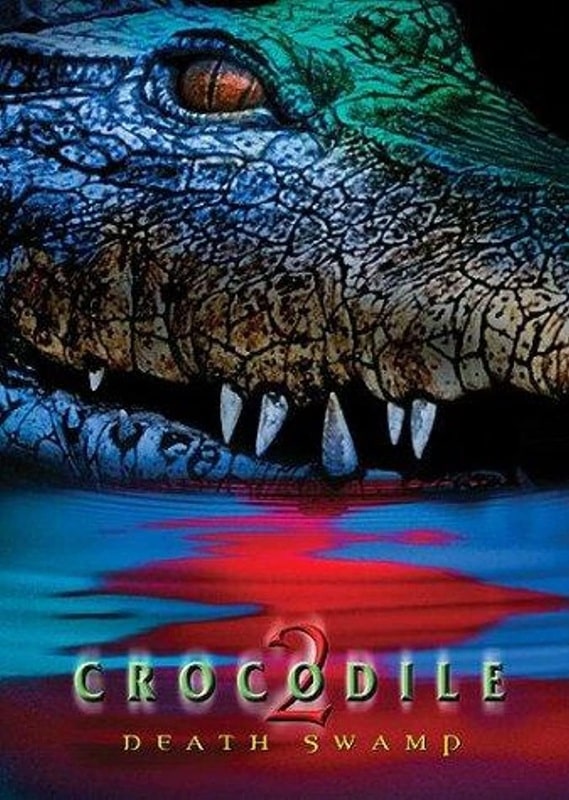 Crocodile 2: Death Swamp (Nu Image Films, August 1, 2002)
What a Croc #20: Crocodile 2: Death Swamp (2002) Crackle
Crocodile 2: Death Swamp (Nu Image Films, August 1, 2002)
What a Croc #20: Crocodile 2: Death Swamp (2002) Crackle
Croc or gator? Crocodile. Again.
Real or faker? Some pretty great animatronics.
Any good? Hot on the heels of the disappointment of Crocodile comes Crocodile 2, which chose to ignore sequel conventions and be titled Crocodiles. Also surprisingly, it is that rare breed, the superior sequel, and I had a lot of fun with it.
No hackneyed ‘hot kids in a swamp’ plot, this one is full of bank robberies, plane crashes and helicopter hijinks. The bad guys are extremely potty-mouthed and awful enough to cheer when they get eaten, and the plucky protagonists put up a fair fight. The effects are actually pretty gruesome, and the croc itself is one of the better ones I’ve seen. Good heavens, I do believe I’ve ended on a high note!
8/10
That’s the crocs and gators done. Next up, werewolves!
Previous Murkey Movie surveys from Neil Baker include:
What a Croc, Part I
What a Croc, Part II
Prehistrionics
Jumping the Shark
Alien Overlords
Biggus Footus
I Like Big Bugs and I Cannot Lie
The Weird, Weird West
Warrior Women Watch-a-thon
Neil Baker’s last article for us was What a Croc, Part II. Neil spends his days watching dodgy movies, most of them terrible, in the hope that you might be inspired to watch them too. He is often asked why he doesn’t watch ‘proper’ films, and he honestly doesn’t have a good answer. He is an author, illustrator, outdoor educator and owner of April Moon Books (AprilMoonBooks.com).
The Fiction of Edgar Rice Burroughs, Part III: The Westerns and The Mucker
 Westerns by Edgar Rice Burroughs: The Bandit of Hell’s Bend and The Deputy Sheriff of Commanche County (Ace Books); Apache Devil and The War Chief (Ballantine Books). Covers by Boris Vallejo, the Brothers Hildebrandt, and Frank McCarthy.
Westerns by Edgar Rice Burroughs: The Bandit of Hell’s Bend and The Deputy Sheriff of Commanche County (Ace Books); Apache Devil and The War Chief (Ballantine Books). Covers by Boris Vallejo, the Brothers Hildebrandt, and Frank McCarthy.
Like many pulp writers of his day, ERB dipped his toes into the western genre. He wrote four: two pretty standard ones and two that incorporate the Native American experience. He knew something of what he wrote, having worked on his brother’s ranch in Idaho at age 16, and having served with the 7th cavalry in Arizona in the late 1890s.
His first standard western was The Bandit of Hell’s Bend (1924), followed by The Deputy Sheriff of Commanche County in 1940. Both of my copies are later printings from Ace with very cool Boris illustrations. I like these better than many of Boris’s paintings because they seem less static. He does a good job of portraying action here.
In Bandit, we have a disgraced ranch foreman and a young woman who has inherited the ranch, and various villains who want to steal the ranch from her because they know there’s silver on it. The foreman, Bull, has to rise to the occasion. There’s great action and pretty good plotting, although you’ll probably figure it out pretty soon. And, as always, ERB creates sympathetic heroes and dastardly villains.
In Deputy Sheriff, a cowboy named Buck Mason is suspected of a murder he didn’t commit, and he has to run and hide until he has a chance to prove his innocence. This plot is not as good as Bandit but it gets the job done to showcase ERB’s lightning paced tale.
ERB’s other two westerns are connected and center very strongly on the Native American experience. The hero, though, is a white boy who is taken captive by Apaches and raised as Geronimo’s adopted son. He is given the Apache name of Shoz-Dijiji (Black Bear), for having killed one at a young age, and he grows up hating whites.
These books are The War Chief (1927), and Apache Devil (1933). Although there are some stereotypical elements to these books, they show that ERB had very strong sympathies for the Apache and disapproved of the way they had been treated by whites.
I found all of these books well worth reading, though the Apache books have stayed with me the longest. The cover art for The War Chief is magnificent and is by Frank McCarthy. The Apache Devil cover looks to be signed by Hildebrandt.
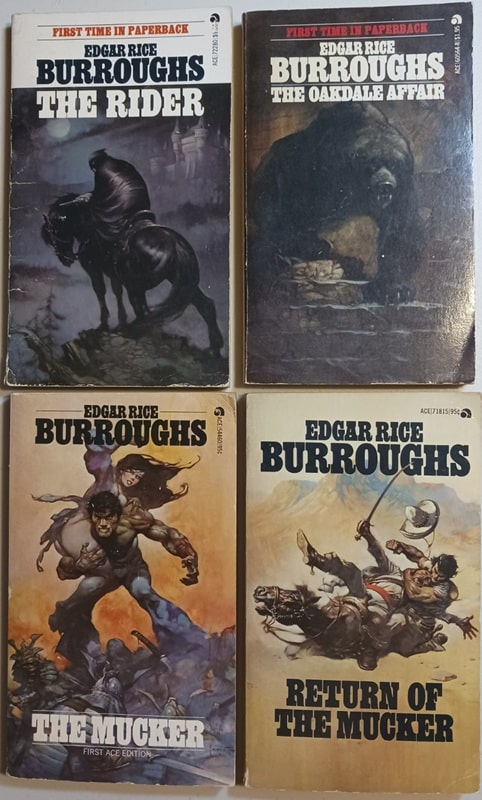 The Rider, The Oakdale Affair, The Mucker, and Return of the Mucker (Ace Books). Covers by Frank Frazetta.
The Rider, The Oakdale Affair, The Mucker, and Return of the Mucker (Ace Books). Covers by Frank Frazetta.
ERB wrote a three book series generally called The Mucker. They were first published in magazines in the mid to late 1910s, but I have much later reprints, of course, from the 1970s. All of mine, shown here, are from Ace books with Frazetta covers. I particularly like the first book cover, although all are cool.
The Mucker (1914). Billy Byrne is born on the mean streets of Chicago and grows up a criminal. After being accused of murder, he flees to San Francisco and ends up shanghaied. A shipwreck leaves him and a beautiful high society girl stranded in an east Asian jungle and she needs rescuing. I really liked the development of the character here. Through love, Billy learns how to be a decent human being and becomes quite a hero.
The Return of the Mucker (1916). This book finds Billy trying to clear himself of his previous murder charges and failing. He ends up in Mexico in the midst of a revolution. And it so happens that his love interest from the first book, Barbara, is also there. The Mucker was a very fine novel but the sequel is pretty weak. Coincidences pile upon coincidences until it’s pretty hard to suspend belief. But it still has the action rolling. This one could easily be counted as one of his westerns given the setting.
The Oakdale Affair (1918). I’m not sure what ERB was striving for with this book. It’s got mystery elements, gothic elements, horror elements, western type elements. He put everything and the kitchen sink into this one. But it worked and I enjoyed it. It is only peripherally related to the Mucker stories in that it features a hobo character that appeared in The Return of the Mucker.
I included ERB’s The Rider here because of the Frazetta cover and because it was at one point published in a double with The Oakdale Affair. But it’s not part of the Mucker series. It involves a bandit called “The Rider” who exchanges places with a prince (Boris) who is about to be married to the princess of another European duchy (neither of whom want to marry the other). Chaos ensues. ERB crammed a lot of action and plot twists into this short work.
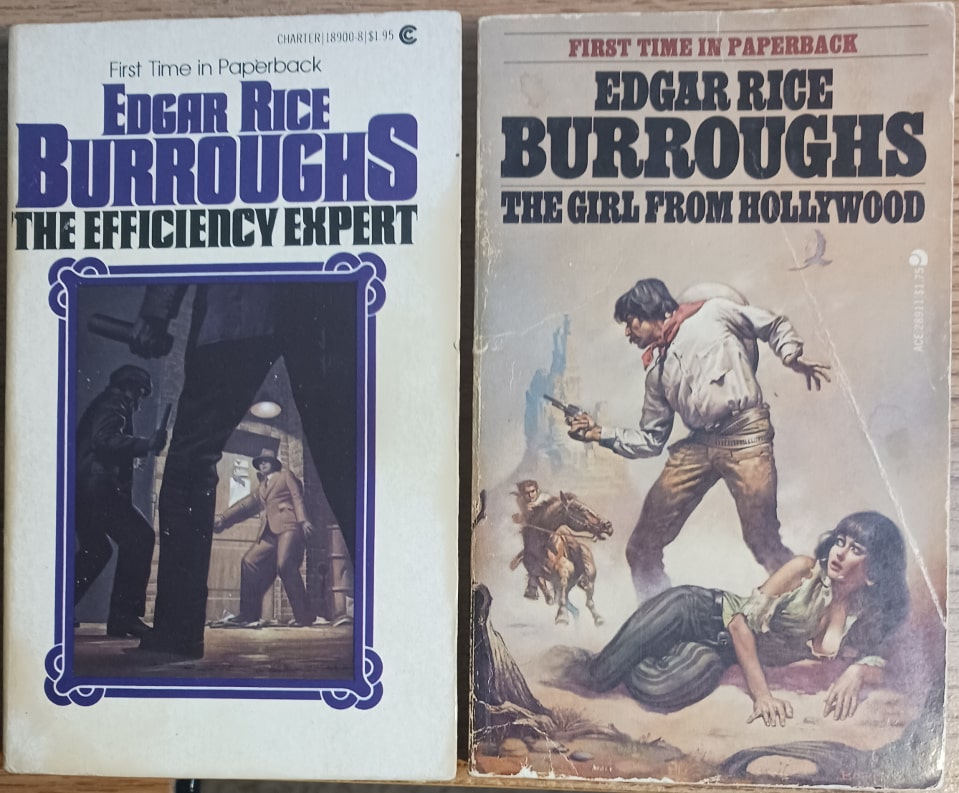 The Efficiency Expert (Charter, 1979) and The Girl From Hollywood (Ace Books, 1977). Covers by John Rush and Boris Vallejo
The Efficiency Expert (Charter, 1979) and The Girl From Hollywood (Ace Books, 1977). Covers by John Rush and Boris Vallejo
My favorite genres are Fantasy, SF, Westerns, Horror, and Thrillers. I don’t read a lot of straight mysteries and read relatively little “mundane” fiction. By mundane, I mean fiction set in a modern world where the happenings are portrayed as realistic. After reading ERB’s westerns and everything he wrote with fantastic elements, I was left with three books: The Girl from Hollywood, The Efficiency Expert, and The Girl From Farris’s.
They were also among the more difficult ERB books to find and were expensive, but I wanted them because they were… well, ERB. I got both Girl and Efficiency in 1970’s paperback form but couldn’t get Farris and finally ordered it in a modern paperback printed from public domain materials. Here are my capsule reviews.
The Girl from Hollywood (ACE, 1977, Boris Cover) is not quite a western. It takes place in the 1920s, but much is set in a western landscape and involves many western tropes. The plot involves a fine western family whose lives become entangled with Hollywood types. Some of these are basically good and recover from their evil natures while others never do.
As is typical of ERB’s work, there are coincidences that help the plot along, and there’s actually very little action compared to his typical story. However, the sheer narrative drive that ERB was able to bring to his tales keeps you reading. I finished it in one day, if not quite one sitting. Not my favorite work by him by far, but still enjoyable.
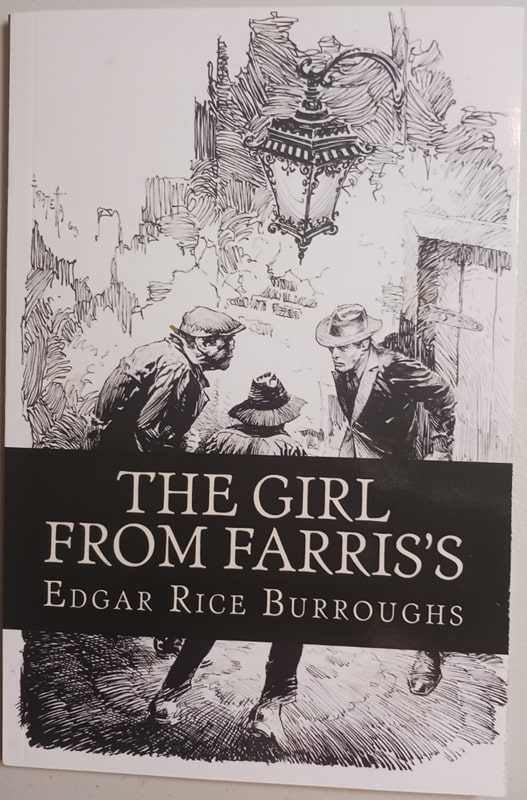 The Girl from Farris’s (CreateSpace edition, 2017). Cover by Frank Frazetta
The Girl from Farris’s (CreateSpace edition, 2017). Cover by Frank Frazetta
The Girl from Farris’s (Public Domain, from CreateSpace, 2017). The cover is by Frank Frazetta. An editorial note names Taylor Anderson as editor, and claims the publisher is Odin’s Library Classics. The text appears to be intact but the print is small and there are no indented paragraphs. I actually read this in ebook version, though, so I’ll just stick it on my shelves. I rather like the cover but don’t know where it came from.
“Farris’s” is a house of ill repute and June Lathrop a lady of the evening who is trying to escape it. She meets a young man — Ogden Secor — who wants to help her and fate keeps throwing them together. It’s a tale of redemption, which is an element in all three of these novels. One particularly interesting point is that Ogden is a failed Chicago businessman who tries to make a new life for himself in Idaho. ERB himself fled the business world of Chicago for his brother’s Idaho ranch. They say, “write what you know.”
The Efficiency Expert (Charter, 1979, cover by John Rush) is the last Burroughs book I’ve read, and very nearly the last one to exist that I hadn’t read. I left these three to last thinking they weren’t much up my alley. None of them have any fantastic elements. Efficiency Expert is a straightforward and realistically based story of a young man of quality who is down on his luck but never succumbs to corruption and wins out in the end. I was engrossed throughout. There’s certainly plenty of coincidence featured in the plot but I didn’t mind it much and even without a lot of action happening, it had narrative drive and kept my attention.
I’d rate Efficiency the best of the three, followed by Hollywood and Farris’s.
We’ll wrap up Burroughs next time with a look at his Hollow Earth tales.
Previous installments in this series include:
The Fiction of Edgar Rice Burroughs, Part I: Sword and Planet
The Fiction of Edgar Rice Burroughs, Part II: Tarzan and The Land That Time Forgot
Charles Gramlich administers The Swords & Planet League group on Facebook, where this post first appeared. His last article for Black Gate was The Fiction of Edgar Rice Burroughs, Part II: Tarzan and The Land That Time Forgot.
Goth Chick News: (Another) Throwback Thursday – Johnny Depp, Roman Polanski, and The Club Dumas
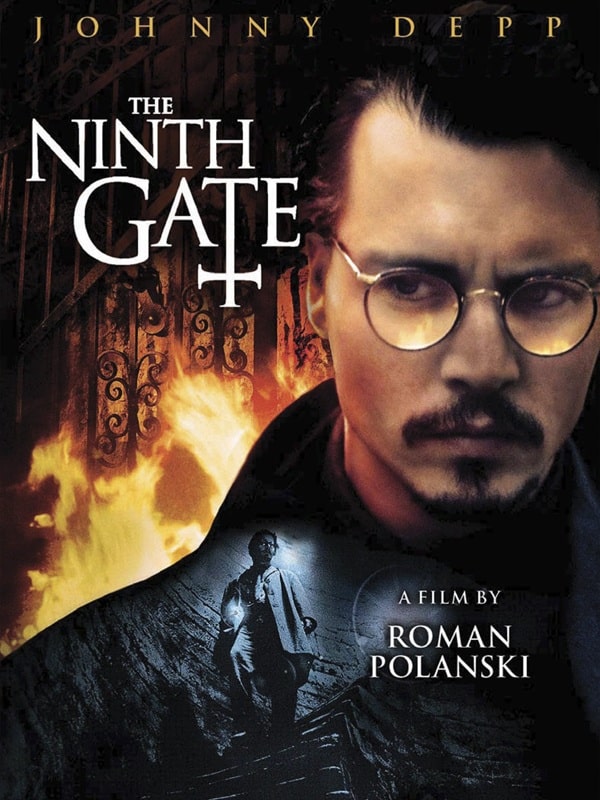 The Ninth Gate (Summit Entertainment, 1999)
The Ninth Gate (Summit Entertainment, 1999)
Last week’s article on Angel Heart not only resulted in a lot of fun and insightful comments from all of you, but it got me thinking about another film that I appreciate in a similar way. It will be twenty-six years old next month and having given it a re-watch last weekend, I wondered what your thoughts would be on this one.
The Ninth Gate, directed by Roman Polanski and starring Johnny Depp, was released in March 1999. Polanski was co-writer on the screenplay which was loosely (and I do mean loosely) adapted from the book, The Club Dumas (1993) by Arturo Pérez-Reverte.
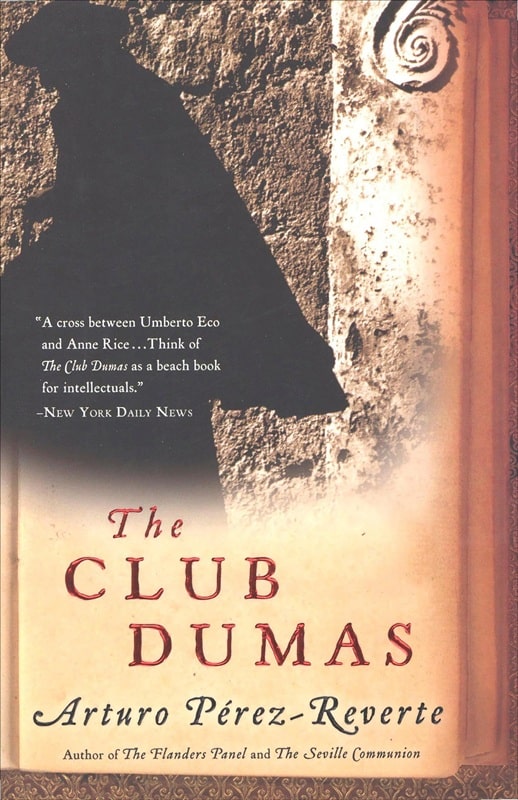 The Club Dumas by Arturo Pérez-Reverte (HarperVia, May 1, 2006)
The Club Dumas by Arturo Pérez-Reverte (HarperVia, May 1, 2006)
In the film, Dean Corso (Depp) is a New York book dealer with a reputation for unscrupulous methods. When Boris Balkan (Frank Langella), a wealthy collector of rare books on the occult, hires him to authenticate a mysterious tome called The Nine Gates of the Kingdom of Shadows, Corso embarks on a journey across Europe.
The book, rumored to summon the devil when used correctly, exists in three copies, but only one is authentic. Corso’s task is to examine the three editions and uncover the truth. As Corso delves deeper into his investigation, strange deaths and supernatural occurrences begin to haunt his steps. Along the way, he is joined by a mysterious woman (Emmanuelle Seigner), whose true nature seems tied to the book’s sinister secrets.
In parallel with Angel Heart, The Ninth Gate presents a dark journey into the unknown by a skeptical protagonist who is in over his head but doesn’t know it. The memorable visuals created by Darius Khondji, who is known for his work on Se7en, are well synchronized with the puzzle elements of the story and Polanski’s signature direction is evident as well. From dusty bookstores to candlelit castles, the cinematography oozes occult suspense all over the place.
I frankly love The Ninth Gate all the way up until its final few moments.
[Minor spoilers ahead.]
The film does a fabulous slow burn to what can only be described as an enigmatic conclusion, and this is why Angel Heart is still my favorite of the two films. While we aren’t at all confused as to what will become of Harry Angel, The Ninth Gate leaves viewers in the maddening position of wondering whether Dean Corso has unlocked forbidden knowledge, become ensnared in a deadly conspiracy, or gone to literal Hell – maybe all three. I remember screaming “NO!” at the screen when the credits rolled since all the fabulous creepiness that built through the entire film, simply went off a cliff at the very end, without resolution.
 Johnny Depp in The Ninth Gate
Johnny Depp in The Ninth Gate
That sent me straight to the source material to see if Polanski was being a jerk by leaving us with such an unsatisfactory conclusion. I immediately went out and bought a copy of The Club Dumas assuming that it would fill in some, if not all, of the missing pieces.
Nope.
While The Ninth Gate is based on The Club Dumas, it omits substantial portions of the novel, particularly a subplot about a lost chapter of The Three Musketeers. The film focuses solely on the occult storyline, which, by the way, is a sub, SUB plot of the book. If anything, the ending of the book was even more obtuse, with themes centered on literary puzzles and human obsession rather than a definitive supernatural climax.
Interestingly, the titular tome at the center of the film, called De Umbrarum Regni Novem Portis, or The Nine Gates of the Kingdom of Shadows, is a fictional text. Its design plays a significant role in the plot, with eerie and violent illustrations which are gruesomely brought to life in the form of the demise of several characters. The engravings within The Nine Gates book, which were painstakingly designed for the film, serve as the visual centerpiece of the story. Each engraving contains subtle differences across the editions, forming cryptic clues for Corso and the audience to unravel. For movie prop collectors, it is a highly recognizable and sought-after addition.
 Emmanuelle Seigner and Johnny Depp in The Ninth Gate
Emmanuelle Seigner and Johnny Depp in The Ninth Gate
I used to have visions of owning my own copy of The Nine Gates, however, a well-made replica with a leather cover can go for upwards of $1200 or more. If you’re interested in a more attainable version, an engineer named Michael F. Haspil has created a detailed tutorial including the printable text and illustrations you’ll need to build one yourself, which you can find here.
Ultimately, The Ninth Gate received mixed reviews at the box office and made a rather crappy $58M against a $38M budget – so basically a bomb by Hollywood standards. Though critics praised its style, it was criticized for its pacing and lack of resolution. Despite that, The Ninth Gate has aged well with viewers like me who enjoy slow-burning mysteries and subtle horror. Depp delivers a restrained performance, grounding the fantastical story in a world of skepticism and pragmatism, while Frank Langella’s portrayal of Boris Balkan adds recognizable vice as a man consumed by his quest for power, at the peril of his soul.
The Ninth Gate’s blend of literary intrigue and supernatural tension makes it a film that (mostly) stands up over time. Whether you’re a fan of Polanski’s work, a lover of occult mysteries, or simply curious about the interplay between literature and cinema, The Ninth Gate is worth revisiting.
Thoughts?
Reading for the End of the World Redux
Eight years ago, in the wake of the 2016 election, I penned a piece for Black Gate that I called “Reading for the End of the World”, in which I listed a dozen books I thought ideal for helping us get through the four years of turmoil and uncertainty that loomed ahead. I wrote it, posted it, and moved on with my life, little suspecting that coping with that particular cultural earthquake was not a one-time job like getting a vasectomy, but would instead turn out to be an onerous recurring chore like mowing the lawn or doing the laundry.
Well, if He did it again, I suppose I should too. Therefore, once again, “In the spirit of the incipient panic, withered expectations, and rampant paranoia that seem to dominate our current national life, I offer twelve books to get you through the next four years (however long they may actually last): a reading list for the New Normal.” (Groundhog Day is a movie, not a book; that’s why it’s not here.) In 2017 I hoped that the books I discussed would provide some much-needed insight or diversion, and that’s my hope for these twelve additional volumes. Some things have changed after the passage of eight years, however, so now I suppose I should also state that these books were neither written nor selected with the help of A.I. (Of course, that just begs the larger question — how do you know that “Thomas Parker” is a real person? Short answer: you don’t. Then again, I don’t know if any of you are real people, either.)
1. All the King’s Men by Robert Penn Warren, 1946
Generally considered the greatest American political novel (though Robert Penn Warren denied that he had any explicit political intent in writing it), All the King’s Men follows the rise and fall of Willie Stark, who begins as an idealistic backcountry lawyer and ends as the extraordinarily powerful and ruthless governor of his state. That state is Louisiana, and Willie Stark bears more than a coincidental resemblance to the real-life governor of Louisiana from 1928 to 1932, Huey Long, who maintained an iron grip on the state even after he left the Baton Rouge statehouse to become a United States Senator and presidential aspirant. Long’s career ended with his assassination in 1935, just as Willie Stark’s life is also cut short by an assassin’s bullet. However, the book is more than just a political roman à clef, more than an incisive portrait of an unscrupulous demagogue or a warning about the dangers such a person can pose for a democracy; fundamentally, it’s meditation on the mysterious conjunctions of character and history, and an examination of the myriad ways personal (and often petty) passions mesh in unforeseen and unpredictable ways, powering the huge, seemingly impersonal processes we all find ourselves caught up in. All the King’s Men (which has been filmed twice, first in 1949, winning Broderick Crawford a Best Actor Oscar for his Category 5 portrayal of Willie Stark, and less successfully in 2006, this time with Sean Penn in the lead role) is a book which will always have something to say to those who want to gain some measure of understanding (if not tranquility) by taking a step back and viewing the storm from a distance.
2. Stayin’ Alive: The 1970’s and the Last Days of the Working Class by Jefferson Cowie, 2010
Stayin’ Alive (the irony of the title becomes increasingly apparent through the course of the book) sheds a bright light on our current condition by chronicling how “The social and political spaces for the collective concerns of working people — the majority of the citizenry — disappeared from American civic life when the nation moved from manufacturing to finance, from troubled hope to jaded ennui, from the compromises and constraints of industrial pluralism to the jungle of the marketplace.” The progression of the key players — labor leaders like Jimmy Hoffa and George Meany and politicians like Hubert Humphrey, Robert and Edward Kennedy, Richard Nixon, George McGovern, George Wallace, Jimmy Carter, and Ronald Reagan — illustrates the shift from a working class that defined itself by its material conditions (wages, benefits, working conditions, freedom to unionize) to one that defined itself by positions on so-called “cultural” issues (busing, abortion, “patriotism” loosely defined.) Cowie also has time to look at television, movies and music, from Bruce Springsteen’s album Born to Run, with its message that working class life can’t be transformed but only escaped, to the film Dog Day Afternoon, which says that even escape is impossible. The book’s analysis is brilliant and persuasive, and though Cowie tries to hold out some hope for the future, the picture painted is a bleak one, depicting as it does a landscape of diminished economic opportunity, truncated rights, and withered hope — pretty much the world we live in today, which is a direct result of the 70’s, a decade by the end of which “working people would possess less place and meaningful identity within civic life than at any time since the industrial revolution.”
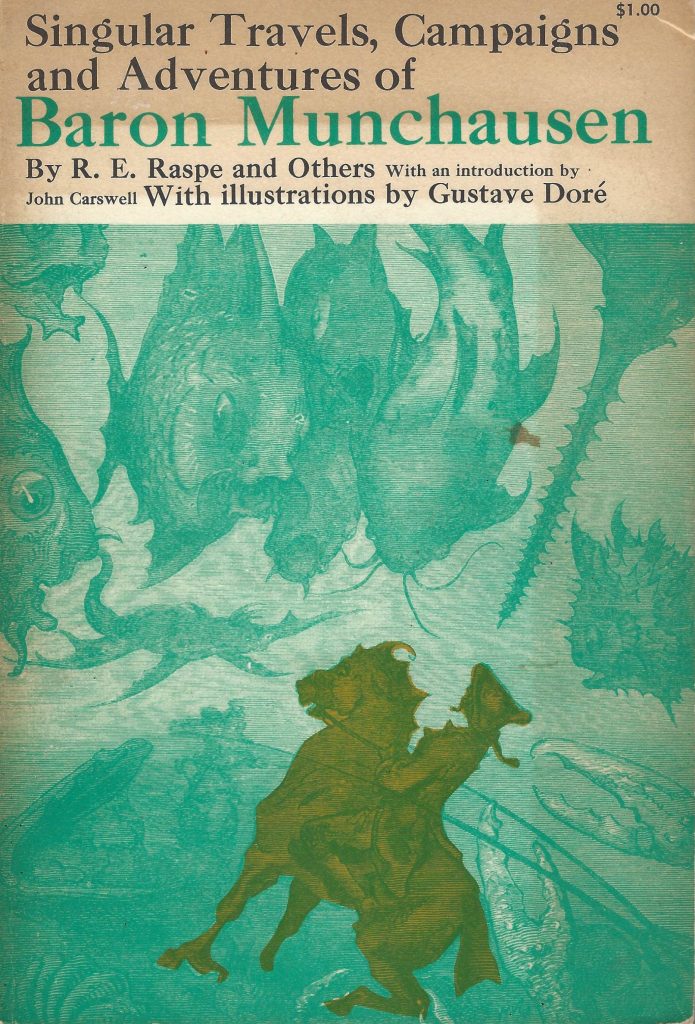 3.Singular Travels, Campaigns and Adventures of Baron Munchausen by R.E. Raspe and Others, 1948
3.Singular Travels, Campaigns and Adventures of Baron Munchausen by R.E. Raspe and Others, 1948
Think carefully before you answer — who is the greatest liar in history? You’re right, of course — it’s Baron Munchausen! In the picaresque novel by Rudolph Erich Raspe, first published in 1785, the nobleman is a nonstop raconteur, spinning stories of his adventures and exploits as a military man and world traveler. Such memoirs were fairly common in the eighteenth century, but few ex-soldiers ever (successfully!) wrestled a forty-foot crocodile, visited the moon by climbing up a beanstalk, rode a flying cannonball over enemy lines, or got swallowed by a great fish while bathing in the Mediterranean (Munchausen freed himself by dancing the hornpipe in the creature’s stomach, which caused it to thrash about and head for the surface, thus attracting the attention of a ship, which harpooned it, hauled it on board, and began cutting it up. “As soon as I perceived a glimmering of light I called out lustily to be released from a situation in which I was now almost suffocated. It is impossible for me to do justice to the degree and kind of astonishment which sat upon every countenance at hearing a human voice issue from a fish, but more so at seeing a naked man walk upright out of his body: in short, gentlemen, I told them the whole story, as I have told you, whilst amazement struck them dumb.”) The actual Baron Munchausen, who fought for Russia in various campaigns against the Turks, spent his retirement entertaining people by telling tall tales about his exploits. Raspe heard some of these yarns and put them into his book along with other outrageous lies of his own invention, which infuriated and humiliated the real Baron, who was driven into seclusion by the ridicule of all Europe. To think that sheer embarrassment could make someone retire from public life; 1785 was a long time ago, was it not? (If you want to read these wildly entertaining adventures, make sure you get an edition that has the original illustrations by Gustave Doré; they are just as funny and delightful as the Baron’s fabulations.)
4. The Iron Dream by Norman Spinrad, 1972
Alternate-history stories come in many varieties, from The Man in the High Castle to Bring the Jubilee to Pavane to Harry Turtledove’s infinitely expanding oeuvre, but few of them are as audacious and original as Norman Spinrad’s foray into the genre, The Iron Dream. The inside-cover blurb lets you know what you’re in for: “Let Adolf Hitler transport you to a far-future Earth, where only FEREC JAGGAR and his mighty weapon, the Steel Commander, stand between the remnants of true humanity and annihilation at the hands of the totally evil Dominators and the mindless mutant hordes they completely control.” That pretty much sums up the plot of the novel (which, once you get past the book’s cover, actually turns out to be titled Lord of the Swastika), and the alternate-history aspect is taken care of by an “About the Author” note at the beginning of the book and an “Afterword to the Second Edition” at the end, purportedly written in 1959 by a New York University academic named Homer Whipple. The bio tells us that after serving in the Great War and briefly dabbling in “radical politics”, Adolf Hitler emigrated to New York in 1919, where he first became a successful science fiction illustrator (for Amazing, no less) and then a science fiction writer himself, the author of such classics as Savior from Space, The Thousand Year Rule, The Master Race, and Tomorrow the World. In the afterword, Whipple chronicles Hitler’s literary career up until his death in 1953, afterwards analyzing Lord of the Swastika and finding in its fetishistic imagery the source of the book’s lasting appeal to hardcore science fiction fans, who awarded Hitler a posthumous Hugo in 1954… so what we have here is not a novel about an alternate history — it’s a novel from an alternate history. How is Lord of the Swastika? (Spinrad reportedly wanted the book to be published under that title, with only Hitler’s name on the cover, but was stymied by his publisher.) Well, based on my own reading about Der Führer (primarily the Bullock and Kershaw biographies, Speer’s memoirs, and Richard Evans’ history of the Third Reich), Spinrad is disquietingly successful at transmogrifying Hitler’s pathological obsessions and rigid, paranoid worldview into pulp science fiction, and one of the most remarkable things about the book is its uncomfortably pointed demonstration of how perfectly the themes and devices of pulp sf suit a violent, authoritarian imagination. In any case, being locked up inside Adolf’s head, even for satirical purposes, isn’t all that enjoyable, and well before the book ends, distaste begins to outweigh novelty, and you’re eager for the “author” to… well, blow his brains out. Spinrad may have been just a little too clever, and The Iron Dream might be one of those books that would be twice as effective at half the length. Still, it’s quite a ride, and I can’t think of another novel like it.
5. Spider Kiss by Harlan Ellison, 1961
Harlan Ellison was one of our best short story writers, but he produced only a few genuine novels. Among that handful, though, is one of his best works, his rock-and-roll novel Spider Kiss (which was originally published by Gold Medal — the mark of quality! — as Rockabilly). Country boy Luther Sellars has an abundance of musical ability and a limitless desire to push, claw, and gouge his way to the top, a vicious, elemental drive unmediated by any trace of scruple. After changing his name to Stag Preston, he succeeds in climbing to the pinnacle of pop music success, becoming the idol of millions. Stag’s unholy combination of ferocious ambition, demonic talent, and unbridled appetite (especially his sexual one) finally lead to his downfall, and after his scandalous excesses (which include some genuine and serious crimes) send him careening to the bottom, he ends his days playing is a sleazy strip joint, far from the big money and the bright lights, mercifully forgotten. Ellison clearly knew the great 1957 Elia Kazan film A Face in the Crowd, in which Andy Griffith excels as Larry “Lonesome” Rhodes, a folksy entertainer whose good old boy demeanor conceals a very nasty streak and who plays out a rise-and-fall story very similar to Stag’s. Stag is, if anything, even worse than Rhodes, and the book is a riveting portrait of a driven and near-sociopathic personality. Ellison later retrofitted many elements of Stag’s character and story onto his script for the 1966 film The Oscar (in which the amoral user is an actor named Frank Fane), a movie so godawful it’s divine.
6. 85 Days: The Last Campaign of Robert Kennedy by Jules Whitcover, 1969
We’ve gotten used to some wild presidential elections over the last decade and a half, but few campaigns in American history were as chaotic, divisive, and ultimately tragic as the one all the way back in 1968. When President Lyndon Johnson announced that he was not going to run for re-election, Robert Kennedy at first publicly said that he wasn’t going to seek the nomination himself, a decision that went against all of his political instincts. It galled him to leave the field to Hubert Humphrey (Johnson’s vice-president and a man likely to continue LBJ’s war policies) and the upstart anti-war candidate Eugene McCarthy, but when McCarthy’s surprising early success showed the potential strength of an anti-Vietnam War candidate, Kennedy threw his hat into the ring. A frantic campaign followed, with RFK scrambling to put together an organization, enter primaries, and make up an enormous amount of lost ground. Along the way, Kennedy earned the animus of McCarthy (for stealing his thunder — and his young, anti-war voters) and Johnson (for opposing his policies), made Kennedy history by losing one primary (Oregon), gained some momentum by winning others (South Dakota, Nebraska), and was called on to help the country weather the shock of the Martin Luther King jr. assassination, a bare eight weeks before his own death at the hands of Sirhan Sirhan on the night he won his greatest victory in California — all in eighty-five days (three weeks less than Vice President Harris had in her own truncated campaign). Whitcover’s book is a definitive account of one of the most dramatic political contests in our history, a kind of combat-photographer snapshot taken at a moment when the country seemed hurtling toward the apocalypse — and not for the last time.
7. The Last Policeman Trilogy (The Last Policeman, Countdown City, World of Trouble) by Ben H. Winters, 2012-2014
If you think things are bad now, take heart — they could be worse. The world could be ending literally rather than metaphorically; there could be a ginormous asteroid on a collision course with earth that will extinguish human civilization on impact, which is the situation faced by Hank Palace at the beginning of The Last Policeman trilogy. The first volume, The Last Policeman, begins with the asteroid (named “Maia”) still six months away and the chances of impact rising but still less than one hundred percent. Before the end of the book, doom has become a mathematical certainty and Palace and everyone else on earth are faced with the Big Question — what do you do when everything is coming to an end? You keep doing your job, of course; it’s that or go crazy in one of a thousand different ways. There’s no shortage of people going that route, but Palace chooses the first option; despite knowing how ultimately futile his efforts are, he continues to get up every morning and show up for work as a Concord, New Hampshire police detective, spending his dwindling stock of days trying to keep his small part of the world from falling to pieces. Through the course of the three books, Palace investigates murders (in a world where the innocent and the guilty alike are about to experience maximum punishment) and a strange disappearance (in a world where increasing numbers of people are walking away from the rubble that’s all that’s left of pre-Maia society) and most personally, trying to find his troubled sister Nico, who has vanished into the chaos; he has some things to settle with her before the end. What does any of it matter? Well, Winters has said the theme of the trilogy is, “Why does anybody do anything?” Each volume (almost each chapter in each volume, in fact) is more involving than the one that preceded it (increasing tension is built into the premise) and aside from being a gripping read, the series really does prompt reflection on the meaning of human actions when the actors are faced with unavoidable death — which we all are, asteroid or no asteroid.
8. 1876 by Gore Vidal, 1976
Electoral chicanery is as old as the republic itself, and who better to describe perhaps the greatest example of it in our history than Gore Vidal, America’s premier historical novelist? In this, the third novel in his six-volume Narratives of Empire series (following Burr and Lincoln in internal chronology), Vidal fictionalizes the centennial election of 1876, when the presidency was stolen from the Democratic candidate Samuel Tilden (remember him? Of course you don’t!) by the Republican Rutherford B. Hayes, or at least by his faction. Post-Civil War bitterness (the tactic of “waving the bloody shirt” to brand all Democrats as crypto-Confederate traitors reached new heights during the contest) led to outrageous underhandedness and outright fraud across multiple states. In South Carolina, for example, 101 percent of all eligible voters voted (take that, electoral apathy!) and many of the things that we’ve become drearily familiar with reared their ugly heads, such as disputed electors, confusing or deceptive ballot designs, and rancorous squabbles about the counting and certifying of electoral votes. With Inauguration Day approaching and the results a snarl beyond untangling, Congress headed off increasing financial and political chaos (to say nothing of threats of violence — Hayes’ home was shot at shortly after Election Day) by creating a special bipartisan electoral commission to reach some kind of resolution, with the result that the Republican candidate became the nineteenth President of the United States… by one electoral vote. (Tilden’s consolation prize was winning the popular vote; I’m sure that kept him warm at night.) All of Vidal’s virtues are on display here; no one depicted drawing-room politics (or any other kind, for that matter) with more elegant irony or acerbic wit. This Jamesian comedy of manners has the kind of effortless style that makes it easy to miss the cold-steel scalpel in the author’s hand, and he uses the knife to mercilessly dissect the corruptions and hypocrisies of Hayes’ and Tilden’s time, and, by implication, our own.
9. The Autumn of the Patriarch by Gabriel García Márquez, 1975
In The Autumn of the Patriarch Gabriel García Márquez uses the techniques of magical realism that he employed in One Hundred Years of Solitude to portray the life and (maybe) death of the archetypal figure of a military tyrant or Caudillo, embodied in a nameless Caribbean dictator. Instead of using the tools of objective realism to depict the surface of his dictator’s reign, García Márquez employs symbol, metaphor and dream to place us in the lightless mind of his radically isolated protagonist. The book (the English translation is by Gregory Rabassa, who also did the magnificent translation of One Hundred Years of Solitude) is not for the faint of heart — it has one sentence that’s fifty pages long. Most of the novel consists of a stream of consciousness that runs so deep you can easily drown in it, but the method yields dividends that couldn’t have been gained in any other way; in one extraordinary, hallucinatory scene, in his greed and callousness the monomaniacal “General of the Universe” (his official title) sells off the Caribbean Sea to the Americans who keep his regime propped up; the Gringos send helicopters to fly off huge sections of the Sea, which has been cut up into numbered squares, leaving only a desiccated, sea-bottom desert behind. The book exuberantly chronicles the General’s flagrant excesses — political, military, familial, financial, rhetorical, sexual — but García Márquez’s greatest triumph is that his art moves us beyond mere externals, imprisoning us in the free-floating abattoir that must have been the mind of a Somoza, a Stalin, a Franco, a Mao.
10. Advise and Consent by Allen Drury, 1959
Though the current confirmation battles roiling the Hallowed Halls of the Capitol may seem especially contentious and nasty, the process of getting even a mildly questionable nominee through the Senate has always been a bloodsport. If you doubt that, just read Allen Drury’s Pulitzer Prize-winning novel, Advise and Consent. (The title comes from Article II, Section 2, of the Constitution, which gives the President the power to appoint various federal officers and officials with the “Advice and Consent of the Senate.”) When liberal golden boy Robert Leffingwell is nominated by the president for Secretary of State, the confirmation process is expected to go smoothly, and it does — until a witness surfaces with evidence that Leffingwell had once been a communist (a charge that the nominee has unequivocally denied under oath). Those in favor of Leffingwell (a group that still includes the president) and those opposed to him begin to frantically maneuver for advantage, working night and day to discredit whatever evidence and witnesses are presented by the other side. Before the drama’s end, the president himself will be involved in blackmailing Utah Senator Brig Anderson, who has proof that Leffingwell’s testimony was a lie. Anderson had a homosexual encounter in his past, and the prospect of that incident becoming public knowledge drives him to commit suicide in his Senate office (a plausible outcome in 1959 — and something very much like it had actually happened in 1954). In the wake of this tragedy, the evidence against Leffingwell gets out, along with the president’s role in its suppression, with the result that the nomination goes down to a decisive defeat. Allen Drury (whom Richard Nixon believed to be secretly gay himself) was a seasoned Washington reporter who knew all the back-room details of how the sausage was made, and after over sixty years, Advise and Consent still deserves its reputation as one of the greatest of American political novels. Drury must have agreed — he wrote five more books carrying the story and characters forward into a shrewdly speculative political future. Otto Preminger directed an excellent film version in 1962, with Henry Fonda as the flawed nominee and Charles Laughton (in his final role) as Senator Seab Cooley, Leffingwell’s most intractable opponent.
11. The Loneliest Campaign: The Truman Victory of 1948 by Irwin Ross, 1968
Everyone loves an incredible comeback staged by a tenacious underdog, right? Well, um… maybe not everybody. But if you crave a candidate wielding a pugnacious (and sometimes profane) campaigning style to present himself as a battler for the common man against out-of-touch elites, if you delight in baffling and egregious polling errors, if you yearn to see a complacent national press stunned by an unexpected outcome that they find simply incomprehensible, then have I got a story for you! No, not that one; it’s not necessary to look back just a month or two, because our grandparents (or great-grandparents!) saw it first back in 1948, when Harry Truman, unanimously written off by the media as a comically inept buffoon, came roaring from behind to defeat supposed shoo-in Thomas E. Dewey for the presidency. Truman, the low-class ward-heeler, the Missouri machine politician who was tapped for vice-president when Franklin D. Roosevelt decided to jettison his previous running mate, the increasingly problematic Henry Wallace, became president when FDR died three months into his fourth term. Shackled by foreign policy problems and an unstable economy, Truman (often derided as “His Accidency”) ended his slightly-shortened first term with near-historically low approval ratings. Good thing polls are never wrong. Dewey, brimming with confidence, decided that it wasn’t necessary to win the presidency; he just had to be careful not to lose it. He therefore confined himself to bland, noncommittal statements that were so general as to be essentially meaningless. The Louisville Carrier-Journal mercilessly (but accurately) said that Dewey’s major speeches “can be boiled down to these historic four sentences: Agriculture is important. Our rivers are full of fish. You cannot have freedom without liberty. Our future lies ahead.” Truman, meanwhile, fought his way off the ropes with a no-holds-barred, bare-knuckle exuberance that, fairly or not, laid all of the country’s ills squarely at the feet of Dewey’s Republican Party. When the dust settled, Harry Truman had won one of the unlikeliest second terms in American history, though it’s probably dropped from first place to second in that regard. The Loneliest Campaign is an engaging look at one of the most colorful presidential contests ever, and the book’s conclusion, written in 1968 about the election of 1948, is just as valuable today: “In the end, the most salutary consequence of 1948 was probably a renewed awareness of the contingent quality of events, of the unpredictability of both leadership in a democracy and of the choices that voters make in the privacy of the voting booth. Not for a long time afterward were politicians likely to take the American voter for granted.” We can hope that recent events have provided a much-needed refresher course in that uncomfortable truth.
12. The Road by Cormac McCarthy, 2006
What do you do when nothing is left of all that you and those who went before you have built but charred rubble and blackened ashes? You hold on tightly to the one most precious to you and make your way through whatever lies ahead one day at a time, trying to keep alive a spark of belief that one day, things will get better. In Cormac McCarthy’s post-apocalyptic novel, a father and a son (we never learn their names; in this place names are needless encumbrances, relics of a dead past) painfully make their way through a shattered world, looking for somewhere they can rest and find peace, knowing that such a place almost certainly doesn’t exist. We don’t know what happened to the world and neither do they. What does it matter? The only reality is trying to keep their bodies and souls alive in a world implacably inimical to both. Most of the devices of the standard post-apocalyptic story are here, images and incidents that have become familiar (even shopworn) through their use in countless books, movies and television shows: searching for uncontaminated water or a slightly better piece of clothing, picking through dead buildings for canned food, exchanging a word or two with other scarecrow-like wayfarers, the dazed, the dead-eyed, the demented, and hiding from other creatures that were once human but that the universal catastrophe has rendered nothing but feral beasts without mercy or compassion. As they push their shopping-cart (their most precious possession, bearing the few pitiful belongings that are everything they own) through this hellscape, “carrying the fire” (an image for preserving and protecting the human that recurs through much of McCarthy’s work), the vision is almost unendurable in its pitiless extremity — but only almost. It is true that no blows are softened, but we are kept going by two things: the bleached beauty of McCarthy’s extraordinary prose and the desperate love of the father and son, who are, quite literally, all the world to each other. Along the way, we get things no other writer could have given us, like the scene where the pair briefly take refuge in a well-stocked underground bunker that they discover, where the father gives his child a drink, a draught from a world and a life that have vanished forever — Coca-Cola. The father’s delight at his son’s stunned amazement at this drink that seems almost alive, followed immediately by his sadness at knowing that his boy will never taste it again, are emotionally overwhelming, as is the book as a whole. The Road will make you weep; it will make your heart ache unbearably before breaking it in pieces, but this bleak journey ends with the fire still burning; at the end, against all odds, the father has passed the flame on by saving his son, and when you finish this remarkable novel, you will feel that light and heat burning anew in yourself.
Of the twelve books I’ve listed here, only The Loneliest Campaign is currently out of print, but it’s relatively easy to find used on Ebay or from other sources; the other books are all readily available in physical or electronic formats.
So, (again repeating my words of eight years ago), “there you have it: a dozen histories, actual and alternate, maps of action or aids to contemplation, to help you get through all the days of farce and folly that lay ahead, as we do our best to cope with the real history that we’re all trapped in.”
Oh, one more thing — I’m damn sure not doing this again in 2028 (or, God help us, 2032)!
Thomas Parker is a native Southern Californian and a lifelong science fiction, fantasy, and mystery fan. When not corrupting the next generation as a fourth grade teacher, he collects Roger Corman movies, Silver Age comic books, Ace doubles, and despairing looks from his wife. His last article for us was Say It Ain’t So
In Defence of Purple Prose
 Image by Gerd Altmann from Pixabay
Image by Gerd Altmann from Pixabay
Good afterevenmorn, Readers!
Language is fun. The way words can mean more than one thing, depending on where the stress is placed, or its location in a sentence, and where that sentence lies within the tale. It is a playground. A song devising its own music. A melody murmured that can delight not just the eyes, but the ears. How many have paused a read simply to revel in the words just read? To read and reread a sentence? To bask in the brilliance of a cleverly turned phrase?
 Image by Лариса Мозговая from Pixabay
Image by Лариса Мозговая from Pixabay
Yet so many decry the joy in that play. Brevity, they proclaim, is king. Only he shall rule the pages, painted words slinking away beneath his stern gaze. That is good writing. The only good writing.
In truth, he is but a soldier, which, like his fellows, when craftily deployed becomes a part of a larger song. The short notes like bombs, delivered with precision to inspire fear, or awe. To drag at the breath, stealing it away. To raise the pulse; a rapid fire of words – rat-tattat-tat!
Ah! But the exhaustion of battle needs reprieve. Across the trenched-scarred fields where fearful clouds of pale green gas linger still, hugging the ground as a jealous devotee, there must be some tenderness. Some beauty. Some gentle caress that reveals a painted sky, a lone flower refusing to bow before the fire, to linger ever so longingly on a lover’s heart.

These, too, deserve their time to shine. To dance in the light. Frivolous! come the cries. Pointless! Indulgent! Foolish! What purpose could frills and silks fill that isn’t achieved with more utilitarian cloth?
Beauty, my loves. Beauty is the point. To paint with words. To make poetry of prose. To fill the pages with images that transcend description. To make the words felt instead of merely read. To revel in the wonder of words, and the music they can make if we indulge them ever so slightly. For, before they were written, they were said; every syllable deliberately placed to please, to create a rhythm, to dance with the flames beside which they were uttered.
There is no crime in returning to that fire, though the words reach an audience of naught but one. In reclaiming that dance. In revealing the beauty of words and the myriad of ways they can be put together.

Play, my dears. Play is the point. What fun to toy with meaning and expectation, to weave and weft! To delight in triplets trickling from tickled tongues. To find the fun; to splash in the sun-dappled stream of language and chase the meanings swimming lazily beneath the surface. For language can be such a joy if we let it, if we break free from the tyranny of Brevity for its own sake.
There is no sin in letting the words play. In delighting at their twisting, joyous clamour. To dance with them their strange magical rites.

So many tangled tales have been met with distaste from one, only to be adored by another. Many a phrase has stopped an artist in their tracks, struck by the beauty, only to be scorned by the scholar.
In truth, there is no proper way to present prose. Dance or do not. Play or do not. Let the tyrant Brevity reign over the page, or place him back down into the ranks to work in concert with his fellows, or abandon him altogether. It is all correct. It is all true. It is all right.
But turn not away from the colour purple because some fool said you must. Like Brevity, it has its place and its purpose, even if that purpose is simply to be frivolous, existing for nothing else but the music it makes.
Or maybe even to inflate a word count. Ahem.
Alright, I’m done playing now. Mostly. Though I’ve been terribly tongue-in-cheek with this post, the sentiment is true. I do love reading books where the author has permitted themselves to revel in the language they use; when it’s clear that they’re going not for strict adherence to the rules and order, but to create an image, to paint, to evoke an emotion.
Yes, learn the rules. Of course.
And then smash them to pieces.
Is it possible to mess it up? Yes. Perhaps it doesn’t quite work. But that’s the wonderful thing about words. They’re much like painting in oils. You can massage the colours, work them across the canvas until they form the pleasing shapes you were aiming for. Or simply scrape teh canvas clean and start again. But don’t be so afraid of messing it up that you never attempt to paint at all. Take the time to play with words. Have fun.
Know that there will be a reader who will love your “purple” prose. It will likely be me, since I love how wonderful and musical language can be.
What about you? What writing styles do you like? There are no wrong answers in this case, only differing opinions. And I love hearing them!
When S.M. Carrière isn’t brutally killing your favorite characters, she spends her time teaching martial arts, live streaming video games, and cuddling her cat. In other words, she spends her time teaching others to kill, streaming her digital kills, and a cuddling furry murderer. Her most recent titles include Daughters of Britain, Skylark and Human. Her serial The New Haven Incident is free and goes up every Friday on her blog.
Beware of Greeks Bearing Gifts (and giant wooden horses. I mean, seriously!)
 The story of Troy has been my favorite myth since I was a little kid. Greek mythology is far and away my favorite (Norse is a distant second), and I used to check Bullfinch’s out of my grade school library and lug it home. That was a relatively big book. I have my own copy now, of course.
The story of Troy has been my favorite myth since I was a little kid. Greek mythology is far and away my favorite (Norse is a distant second), and I used to check Bullfinch’s out of my grade school library and lug it home. That was a relatively big book. I have my own copy now, of course.
The worst part, is I always root for the Trojans. It never ends well for them. If they had just listened to Laocoon. Though, Athena definitely made that a dangerous proposition…
I’ve used a couple names from Thieves World over the years, in various online RPGs. But hands down, the Iliad has been my main source. Hector, and some variation of Astyanax (I prefer it with more ‘N’ or ‘X’, has far and away my favorite names for fighters (especially paladins). I’ve used a few others, like Penthesilia, Cassandra, and Deiphobus (Helenus just doesn’t work for me).
Way back in pre-Windows days (I think), there was a really cool computer game that included a Troy section. I think you were Jason with his Argonauts, roaming the world. Age of Empires II (man, I played the heck out of that) included a Troy campaign (except I had to sack Troy. Sniff, sniff). There’s a Total War: Troy (kind of a scaled down TW game) that I don’t have yet. You might have read over the past couple weeks that I’m a huge Total War: Warhammer I/II fan.
I don’t do the Assassin’s Creed series, butt there was an Odyssey game, recently. The Odyssey is essentially a sequel to The Iliad. As is Virgil’s The Aeneid.
I read a few translations over the years. But the only version I do now is Robert Fagles’ audiobook. Which, unfortunately, is abridged. I always try to get unabridged versions of books. But for some reason, they never did an unabridged for Fagles. I don’t know what got left out, but it still totally works for me.
I talked about it here, and Derek Jacobi is absolutely FANTASTIC. Probably the best-read audiobook I’ve ever listened to. They had Ian McKellen do Fagles’ Odyssey, and Simon Callow read The Aeneid (Callow is number two, with McKellan still good, but third). Jacobi is nothing short of brilliant.
As I’ve talked about here at Black Gate before, audiobooks let me get to things I otherwise would not read. Old, and new. About once a year, I listen to The Iliad CDs in my car, during the work commute. Some years, I follow it up with The Odyssey. I don’t do The Aeneid that often, but I have listened to it more than once.
The Iliad and The Odyssey are believed to be written not very long apart; both in Greek. As with some of Paul’s Epistles, some think Homer did not author both. I’m just gonna go with ‘Yes, he did.’ The Aeneid as written some six centuries later, in Latin.
 Highly recommend Fagles’ translation, with Jacobi’s reading. I have him doing some Sherlock Holmes and it’s okay. But he slays The Iliad.
Highly recommend Fagles’ translation, with Jacobi’s reading. I have him doing some Sherlock Holmes and it’s okay. But he slays The Iliad.
The Iliad ends with Hector’s funeral games. Homer recounts some of the events after – including that frigging horse – in The Odyssey.
There were other poems by other poets, about The Trojan War. For example, Arctinus of Miletus wrote the five-book Aethiopis. It started right after The Iliad ended, with the arrival of the the Amazon Queen, Penthesileia
There are six additional poems, but sadly, they’re lost. About thirty lines of Lesches of Pyrrha’s Little Iliad is the largest surviving excerpt of these lost Ilios stories. Along with The Iliad and The Odyssey, they make up The Epic (or Trojan) Cycle. Click here for a short look at the lost poems.
I bought Heinrich Schliemann’s Ilios decades ago. It is not exactly light reading. The Mortal Hero is a nice intro to The Iliad, and I recommend that for somebody wanting to dig into it, without actually reading the epic. Though I think should read Homer.
The Brad Pitt movie, Troy, was a big-budget telling of the story. It took out all the mythology. Maybe that made sense from an on-screen perspective, but I was disappointed. It’s an okay movie. I waited a long time for somebody to make Troy, and to make 42 (the Jackie Robinson story). I much prefer the latter.
I tried to sit through the 2018 mini-series, Troy: Fall of A City. What an unwatchable load of garbage.
On my ever-growing ‘To Write About’ list here at Black Gate, is Rex Stout’s The Great Legend. Stout, of course, created Nero Wolfe, who I have written about extensively here at Black Gate. He took the gods out of the picture, and told an alternate story. I like it.
Stephen Fry has written three apparently ‘different’ books on Greek mythology, with book three on Troy. I’m not interested, and haven’t checked them out.
I’m listening to Barry Strauss’ 2007 book, The Trojan War: A New History. The reader’s voice doesn’t do much for me so it’s gonna be a slow almost 9 hours, but it’s interesting enough, an hour in.
An idea I’ve had,which I won’t commit the time and effort to, is a daily FB series. I would post amusing (to me) daily updates from some embedded poet/journalist:
“And we’ve landed on a rather nice beach. I imagine we’ll wrap this up in a week or two and head back home.”
Or maybe a foot soldier in the Greek ranks:
“Man, Achilles was in a foul mood this morning. That guy needs to lighten up.”
So, this has just been some rambling on something I’ve been interested in for most of my life.

Bob Byrne’s ‘A (Black) Gat in the Hand’ made its Black Gate debut in 2018 and has returned every summer since.
His ‘The Public Life of Sherlock Holmes’ column ran every Monday morning at Black Gate from March, 2014 through March, 2017. And he irregularly posts on Rex Stout’s gargantuan detective in ‘Nero Wolfe’s Brownstone.’ He is a member of the Praed Street Irregulars, founded www.SolarPons.com (the only website dedicated to the ‘Sherlock Holmes of Praed Street’).
He organized Black Gate’s award-nominated ‘Discovering Robert E. Howard’ series, as well as the award-winning ‘Hither Came Conan’ series. Which is now part of THE Definitive guide to Conan. He also organized 2023’s ‘Talking Tolkien.’
He has contributed stories to The MX Book of New Sherlock Holmes Stories — Parts III, IV, V, VI, XXI, and XXXIII.
He has written introductions for Steeger Books, and appeared in several magazines, including Black Mask, Sherlock Holmes Mystery Magazine, The Strand Magazine, and Sherlock Magazine.
Half a Century of Reading Tolkien: Part Two – The Fellowship of the Ring by JRR Tolkien
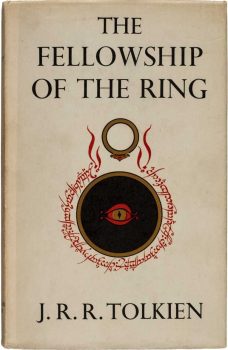 ‘I will take the Ring,’ he said, ‘though I do not know the way.’
‘I will take the Ring,’ he said, ‘though I do not know the way.’
Frodo from The Council of Elrond from The Fellowship of the Ring (1954)
I never saw it, but once upon a time, some hippies and ancillary types were given to emblazoning FRODO LIVES on bedroom walls and the backs of denim jackets. The Lord of the Rings, the literary creation of a conservative Oxford University professor of English Literature and Language, had somehow hit a chord with the nascent counterculture after its publication in 1954/1955. I imagine, in fact, I know, there are all sorts of popular and academic works purporting to explain why this was. I’ve never been interested in them, preferring the books themselves to present the professor’s ideas.
I have my own, if not particularly original, theories. First, it’s a great adventure story featuring a small, ineffectual-seeming hero who stands up to his world’s greatest force of evil. Second, it came to be seen as a sort of rallying cry against the dark powers of the modern world. I don’t know Prof. Tolkien’s politics, though I suspect he was a small-c conservative. It’s clear he viewed the loss of tradition and the dark Satanic mills blotting out the green and pleasant England of his youth were a terrible assault on civilization (this anti-modernist attitude is an important element of Michael Moorcock’s disdain for him). Third, the counterculture’s love for anything pastoral and ante-technological was probably the most important reason for its breakout into the mainstream’s consciousness.
I never discussed it with him, but I feel confident when writing that my father liked The Lord of the Rings primarily for the first reason and somewhat for the second (he was very much a BIG-C conservative) a bit. He most definitely did not like it for the last. When I first read it all that mattered to me was that first reason. With every revisit over the ensuing decades, I’ve discovered something new. That has carried on with my most recent reread.
For the handful of uninitiated out there, The Fellowship of the Ring (comprised of two books, Book I: The Ring Sets Out and Book II: The Ring Goes South), tells of the discovery that the magic ring Bilbo Baggins found in The Hobbit is really the single most evil artifact in the world and the start of the quest to destroy it. Bilbo’s heir, Frodo, and his gardener, Sam Gamgee, at the advice of the wizard Gandalf, set out for Rivendell. Following up on his suspicions about the ring, Gandalf spent over a decade hunting down the true nature of the ring. Finally, he determined Bilbo’s ring was the One Ring, the thing by which the Dark Lord (probably the first of such figures in fantasy fiction), Sauron, could seize control of all Middle-earth.
The four hobbits encounter numerous obstacles along the road to Rivendell of increasing peril. The most dangerous is their pursuit by the Nazgûl (Ring Wraiths). They are Sauron’s greatest servants, corrupted ages ago by lesser rings he made for Men.
In Rivendell, a plan is devised to destroy the Ring by dropping it in Mount Doom, the volcano it was originally forged in and the only thing that can destroy it. A party of nine, chosen from representatives of the different races of Middle-earth and led by Gandalf, set out toward the Dark Lord’s land, Mordor. Of course, things start going wrong right away. Before The Fellowship‘s end, two of the nine companions are dead, and the rest are split into three separate groups. I’ll leave it there. If you’ve read the books, you can fill in the blanks and if you haven’t, well, go fix that giant gap in what you’ve read.
 Moria by Alan Lee
Moria by Alan Lee
The book remains as enthralling to me as did when I first read it nearly fifty years ago. It’s filled with numerous scenes that filled me with awe on the first encounter that has never left me over the years. There are the monolithic Argonath, statues of ancient kings, standing watch over the borders of the kingdom of Gondor and the tree city of Caras Galadhon. The most striking thing was the ancient dwarven city of Khazad-dûm. I knew dwarves lived underground, but I hadn’t imagined anything like Moria. Like the nine companions, the readers are only given glimpses of Moria’s dark passageways, but they’re enough to convey its massiveness and harsh beauty.
Gandalf seemed pleased. ‘I chose the right way,’ he said. ‘At last we are coming to the habitable parts, and I guess that we are not far now from the eastern side. But we are high up, a good deal higher than the Dimrill Gate, unless I am mistaken. From the feeling of the air we must be in a wide hall. I will now risk a little real light.’
He raised his staff, and for a brief instant there was a blaze like a flash of lightning. Great shadows sprang up and fled, and for a second they saw a vast roof far above their heads upheld by many mighty pillars hewn of stone. Before them and on either side stretched a huge empty hall; its black walls, polished and smooth as glass, flashed and glittered. Three other entrances they saw, dark black arches: one straight before them eastwards, and one on either side. Then the light went out.
 Ralphi Bakshi’s rotoscoped Ring Wraith and the hobbits
Ralphi Bakshi’s rotoscoped Ring Wraith and the hobbits
This time around, the outward journey of the hobbits, Frodo, Sam, Merry, and Pippin, from the bucolic seclusion of the Shire, by degrees, into the wider, wilder world they have been largely unaware of caught my eye. The first encounter occurs while still in the Shire when they hear the sound of hooves coming along the road.
The hoofs drew nearer. They had no time to find any hiding-place better than the general darkness under the trees; Sam and Pippin crouched behind a large tree-bole, while Frodo crept back a few yards towards the lane. It showed grey and pale, a line of fading light through the wood. Above it the stars were thick in the dim sky, but there was no moon.
The sound of hoofs stopped. As Frodo watched he saw something dark pass across the lighter space between two trees, and then halt. It looked like the black shade of a horse led by a smaller black shadow. The black shadow stood close to the point where they had left the path, and it swayed from side to side. Frodo thought he heard the sound of snuffling. The shadow bent to the ground, and then began to crawl towards him.
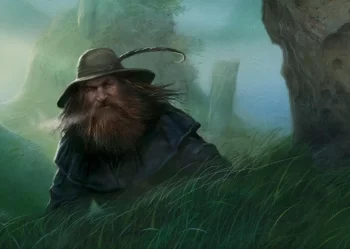 Tom Bombadil by John Howe
Tom Bombadil by John Howe
The second and stranger encounter occurs in the shadowed depths of the Old Forest. Once, many years ago, something from the Forest had somehow pushed back against the invading hobbits. In retaliation, the hobbits burned many of the trees and built a great hedge to keep the rest of them at bay. Once inside the dark woods, the hobbits are lured and trapped by an ancient, malicious willow tree only to be saved by one of the most divisive figures in fantasy – Tom Bombabil. Tom saves the hobbits again, as they continue away from their homes, and are trapped by evil spirits infesting ancient barrows. Their experience in the barrows gives visions to the hobbits, impressing on them the depths and width of the world outside their cozy borders.
This brings me to the second thing I paid more attention to on this reading: the moments of mystery and strangeness. Some hate Bombadil because he’s too frivolous. Others maintain he was just jammed into the story because Tolkien, who’d created the character for an earlier poem, liked him too much. I hold to the theory that for the whole first part of The Fellowship, Tolkien was feeling his way into the story, letting events grow spontaneously and I love the character, silly songs and all.
In the seemingly areligious Middle-earth (that’s a complicated bit of business for some other time, perhaps), Bombabil feels distinctly divine. He is married to the daughter of the river, “knew the dark under the stars when it was fearless – before the Dark Lord came from Outside,” and sings down the very stones of the haunted barrow. When asked about him, Tolkien responded that he was “not an important person – to the narrative” and that “he represents something that I feel important, though I would not be prepared to analyse the feeling precisely. I would not, however, have left him in, if he did not have some kind of function.” He alone, of everyone in Middle-earth, is impervious to the power of the Ring. It doesn’t work for him and he has no desire to own it. I love that there is no explanation for him, an element that doesn’t find an explanation in any of the vast history Tolkien composed for Middle-earth. To quote his wife, when asked who he is, she simply replies, “He is.”
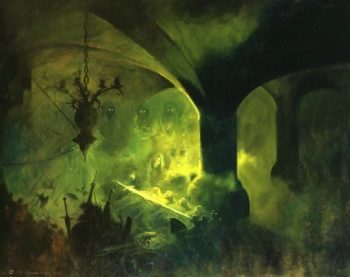 Barrow Wight by Paul Raymond Gregory
Barrow Wight by Paul Raymond Gregory
Being swallowed alive by a willow tree, evil or otherwise, is of course fairy tale strange. The haunted barrows and the capture of the hobbits by the barrow wights are more akin to the Germanic tales that partially inspired Tolkien. Trying to cross the downs, the hobbits find themselves imprisoned within one of the barrows. It is the eeriest point in the entire book, and could easily have been lifted from some skald’s ancient tale sung by the fireside.
As he lay there, thinking and getting a hold of himself, he noticed all at once that the darkness was slowly giving way: a pale greenish light was growing round him. It did not at first show him what kind of a place he was in, for the light seemed to be coming out of himself, and from the floor beside him, and had not yet reached the roof or wall. He turned, and there in the cold glow he saw lying beside him Sam, Pippin, and Merry. They were on their backs, and their faces looked deathly pale; and they were clad in white. About them lay many treasures, of gold maybe, though in that light they looked cold and unlovely. On their heads were circlets, gold chains were about their waists, and on their fingers were many rings. Swords lay by their sides, and shields were at their feet. But across their three necks lay one long naked sword.
Suddenly a song began: a cold murmur, rising and falling. The voice seemed far away and immeasurably dreary, sometimes high in the air and thin, sometimes like a low moan from the ground. Out of the formless stream of sad but horrible sounds, strings of words would now and again shape themselves: grim, hard, cold words, heartless and miserable. The night was railing against the morning of which it was bereaved, and the cold was cursing the warmth for which it hungered. Frodo was chilled to the marrow. After a while the song became clearer, and with dread in his heart he perceived that it had changed into an incantation:
Cold be hand and heart and bone,
and cold be sleep under stone:
never more to wake on stony bed,
never, till the Sun fails and the Moon is dead.
In the black wind the stars shall die,
and still on gold here let them lie,
till the dark lord lifts his hand
over dead sea and withered land.
He heard behind his head a creaking and scraping sound. Raising himself on one arm he looked, and saw now in the pale light that they were in a kind of passage which behind them turned a corner. Round the corner a long arm was groping, walking on its fingers towards Sam, who was lying nearest, and towards the hilt of the sword that lay upon him.
None of these moments make it into Peter Jackson’s film of The Fellowship of the Ring. They don’t serve the narrative thrust Jackson chose to focus on. What they do is help convey the transition of the hobbits — and the story — from the pocket world of the Shire to the real world, one beset by betrayal, ravaging armies, and supernatural evil. Taken together with the dangerous episodes, they serve as a sort of veil the hobbits, representatives of the traditional, insular England Tolkien loved, must pass through before the real quest — the one to destroy the Ring — can begin.
Which leads me to Jackson’s movie, The Fellowship of the Ring (2001). That’s in fact what started this whole undertaking. Even though I’m on record disliking the movies, I needed something on in the background while doing some work and something with swords and magic seemed the right choice. Within minutes I found my dislike bubbling up. Soon it was boiling over. The easiest solution was to just pick up the books and read them again — which I did.
The thing is, I kept watching the movie, quickly followed by the other two. It’s the closest I’ve come to really hate watching anything in my life. I’ll go into more detail when I get to The Two Towers and The Return of the King as they deviate the most from the books.
I don’t dislike the movies for things Jackson didn’t do. If Verdi can edit Shakespeare, Jackson can edit Tolkien. I understand leaving out all the things I described. While I think their elimination changes the nature of the story, removing them to speed up the film’s momentum makes cinematic sense. The movie is intended as an exciting, action-filled movie, not a travelogue. Characters are compressed or excised in service of fitting a large book onto the screen. It happens all the time, often quite successfully. And still, I dislike the movies.
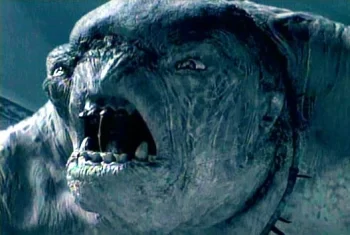 My easiest complaint is with filmmaking choices. First, are the moments of slow motion. Frodo getting stabbed and an uruk-hai running along a riverbank are the two moments that jump to mind most readily. They look cheap and terrible and stand out in a movie that lavished millions on looking good. Much worse is the fight and flight through Moria which becomes increasingly computer game-like as it proceeds. There is no architectural explanation that can possibly justify the staircase that collapses as our heroes are running down it. The battle in the book is much better choreographed and makes much more sense. Jackson’s camera work is skittery and nothing ever stays in a shot long enough to make much of an impression. The interaction between the characters and CGI troll looked fake twenty-plus years ago and only more so now. There are numerous other moments of interpretation I could argue about. Jackson always chose BIGGER and BOLDER, eschewing texture, subtlety, and atmosphere.
My easiest complaint is with filmmaking choices. First, are the moments of slow motion. Frodo getting stabbed and an uruk-hai running along a riverbank are the two moments that jump to mind most readily. They look cheap and terrible and stand out in a movie that lavished millions on looking good. Much worse is the fight and flight through Moria which becomes increasingly computer game-like as it proceeds. There is no architectural explanation that can possibly justify the staircase that collapses as our heroes are running down it. The battle in the book is much better choreographed and makes much more sense. Jackson’s camera work is skittery and nothing ever stays in a shot long enough to make much of an impression. The interaction between the characters and CGI troll looked fake twenty-plus years ago and only more so now. There are numerous other moments of interpretation I could argue about. Jackson always chose BIGGER and BOLDER, eschewing texture, subtlety, and atmosphere.
Tolkien’s Lord of the Rings isn’t devoid of humor. There’s Bilbo’s speech at his party and the discovery of the petrified trolls from The Hobbit. The thing is, there isn’t any slapstick. Not a bit. By which I mean especially pan-swinging, or dwarf-tossing. It’s awful and, like the slow motion, stands out in a movie that presents itself as a serious interpretation of a serious literary work.
My greater criticism is the film’s handling of the characters. Merry and Pippin are reduced to bad comic relief, instead of the clever conspirators who prove brave enough to maim and kill several orcs before Boromir is killed. Gandalf acts like a terrified fool in one moment and isn’t clever enough to solve the riddle to open the Gates of Moria himself. Boromir is more despicable seeming on the screen, instead of a man slowly being driven to madness by the Ring.
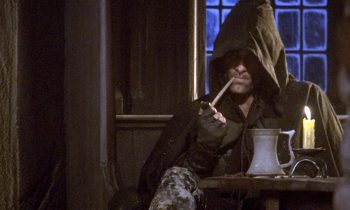 Most egregiously, Aragorn, born of an ancient line of kings, and raised to be a king, becomes a reluctant hero on the screen. We’re told he turned from the path of kingship long ago and later he says being king isn’t his goal. Aragorn is a man who has been a hero several times during his long life prior to the book, all for the purpose of opposing Sauron and restoring the kingship of a reunited kingdom. Finally, Elrond’s sworn he may only marry his daughter, Arwen, if he succeeds in his quest to become king.
Most egregiously, Aragorn, born of an ancient line of kings, and raised to be a king, becomes a reluctant hero on the screen. We’re told he turned from the path of kingship long ago and later he says being king isn’t his goal. Aragorn is a man who has been a hero several times during his long life prior to the book, all for the purpose of opposing Sauron and restoring the kingship of a reunited kingdom. Finally, Elrond’s sworn he may only marry his daughter, Arwen, if he succeeds in his quest to become king.
Instead of channeling the great heroes and chieftains of legend, Aragorn is reduced to, using one online site’s description, emo Aragorn. It feels like Jackson was incapable of believing someone could simply be portrayed as a hero, but needed to go on some sort of journey that almost forced him into choosing to be king.
There are loads of other things I don’t like about the movie. Most, though, are matters of taste, I suppose. Neither Viggo Mortensen nor Sean Bean are physically big enough or powerful enough for their roles. I don’t like many of the costumes, and I hate the portrayal of the hobbits as country bumpkins and Frodo is too young. The worst thing in the extended edition is the elf guard at Lothlorien’s five o’clock shadow.
I do like some things. Ian McKellen looks perfect. The Shire and the much of the wilderness countryside look like how I imagine they should. Galadriel taking on a terrifying visage when she imagines what she’d be with the One Ring is as exactly disturbing as it should be. Best of all, the death of Boromir, something that doesn’t come across as grandly tragic in the book as it should, is done brilliantly on the screen. That’s about it, though.
If this all seems a bit rambling, I’m sorry. Like last month, the spirit of Tolkien overpowered any original intentions I had. The result is this wandering around how The Fellowship of the Ring struck me on this tenth, or whatever it is, reading. I think I concentrated on those early chapters because excised from the movies, they are unknown to many who’ve never actually read the books. The book is much looser and messier than the movies and maybe that’s a reason I prefer it.
Fletcher Vredenburgh writes a column each first Sunday of the month at Black Gate, mostly about older books he hasn’t read before. He also posts at his own site, Stuff I Like when his muse hits him.
Roy Thomas and the Legacy of Conan the Barbarian
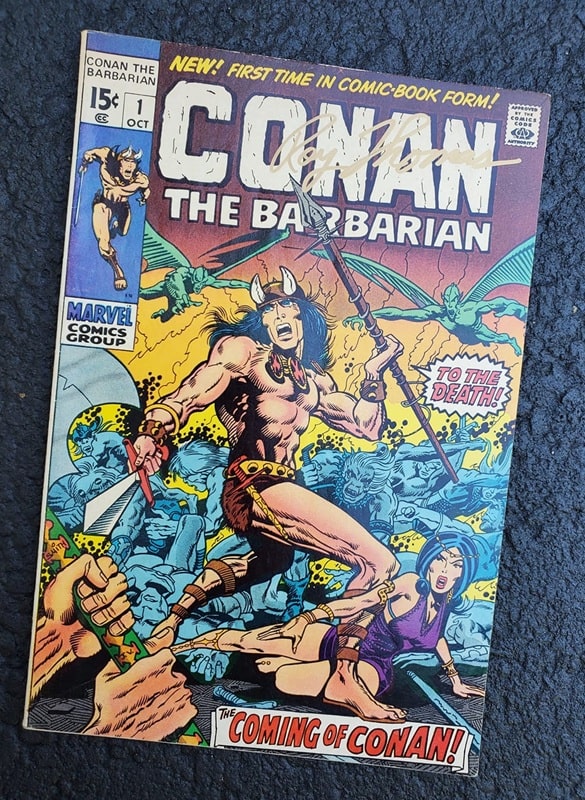 Conan The Barbarian #1 (Marvel Comics, October 1970). Art by Barry Windsor Smith
Conan The Barbarian #1 (Marvel Comics, October 1970). Art by Barry Windsor Smith
The package I received on July 6, 2020 brought me great joy! Roy Thomas is my favorite comic book writer. I correspond with him occasionally, and he is quite generous with his time, sharing his thoughts and memories. Very similar to how Gary Gygax did this, treating every fan with dignity and respect. A true gentleman.
I thanked Roy in my latest Hyperborea adventure book, The Sea-Wolf’s Daughter, because it included a character inspired by one of his creations. I sent him a copy of the book, and along with it my personal copy of Conan the Barbarian #1, to be signed by the author. Well, here it is! (He has an agency that normally handles this sort of thing, but he made an exception for me.) Excelsior!
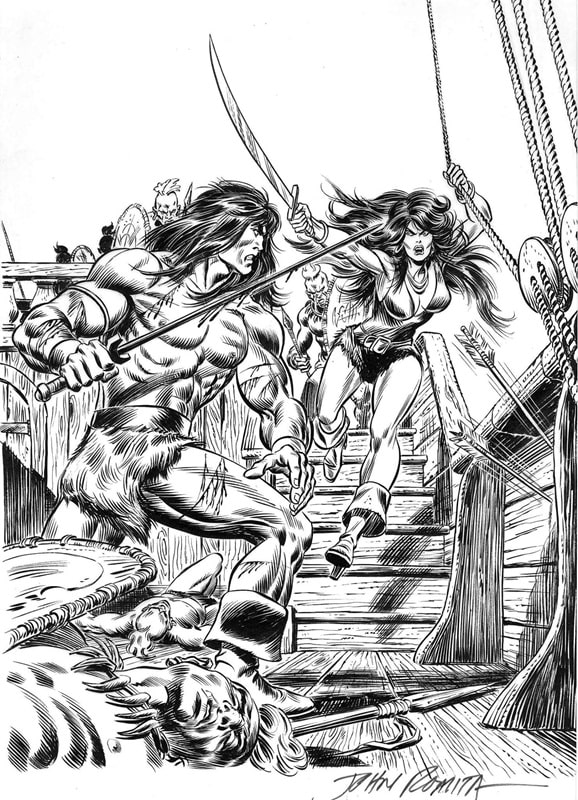 Cover art for Conan the Barbarian #58, by John Romita Sr., story by Roy Thomas (Marvel Comics, January 1976)
Cover art for Conan the Barbarian #58, by John Romita Sr., story by Roy Thomas (Marvel Comics, January 1976)
It is my humble opinion that of all the Conan pastiche writers, Roy Thomas is among the finest. But because he wrote in the comics industry, he’s often not afforded the same prestige as other Conan pastiche writers, such as L. Sprague de Camp, Lin Carter, Karl Edward Wagner, Robert Jordan, et al.
Thomas’ run starring Conan and Belit (the Queen of the Black Coast) started with this issue (#58) and concluded with the iconic issue #100. It is a treasure to read.
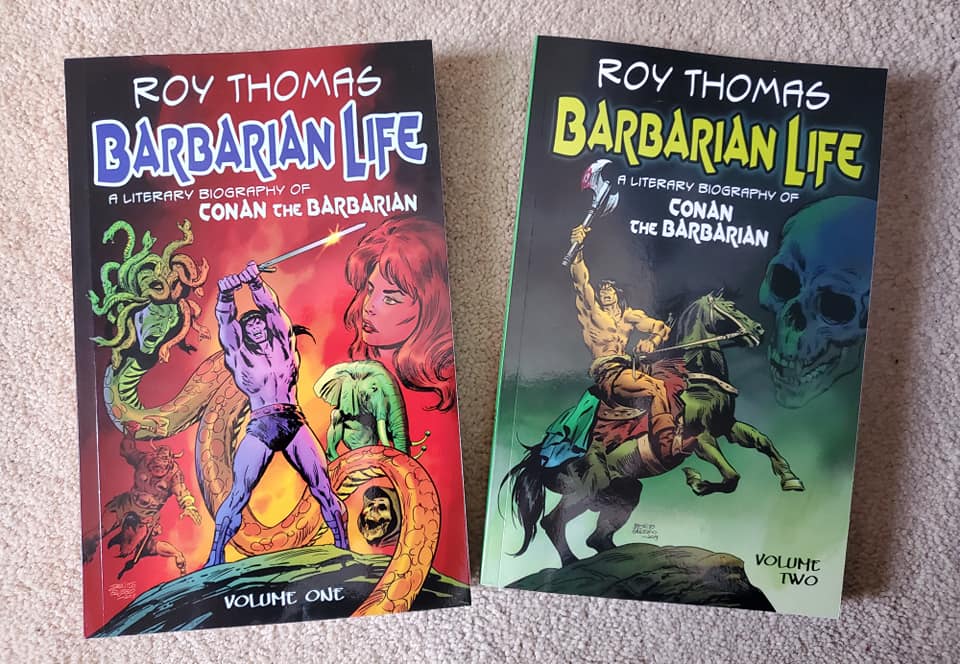 The first two volumes of Barbarian Life by Roy Thomas (Pulp Hero Press, December 7, 2018 and November 29, 2019)
The first two volumes of Barbarian Life by Roy Thomas (Pulp Hero Press, December 7, 2018 and November 29, 2019)
In the three volumes of Barbarian Life, Roy Thomas reflects on each of the first 100 issues of Conan the Barbarian, by Marvel Comics — which he wrote every issue of, from 1970 to 1979.
Roy is responsible for taking part in the creation of many Marvel and DC characters that have been featured in blockbuster films, but he will be the first to tell you that his favorite job was writing Conan the Barbarian, adapting and expanding on the works of Robert E. Howard and several other pastiche writers. What an incredible idea by Mr. Bob Mclain of Pulp Hero Press!
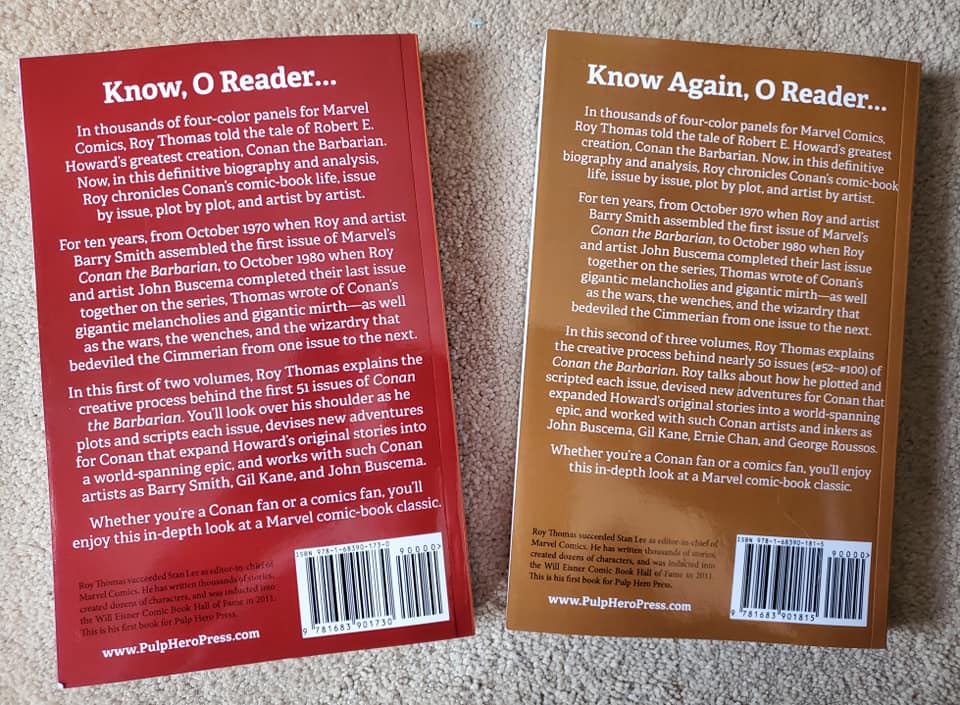 Back covers for Barbarian Life, volumes 1 and 2
Back covers for Barbarian Life, volumes 1 and 2
I can’t wait to dig into these two volumes; in fact, I have this crazy notion in me noggin about starting a blog in which I go through all 100 issues, reading the comic, followed by its respective chapter entry in the literary biography.
I’ve never blogged before, but I think this could be my motivation to give it a try in 2020. Would anyone be interested reading something like this?
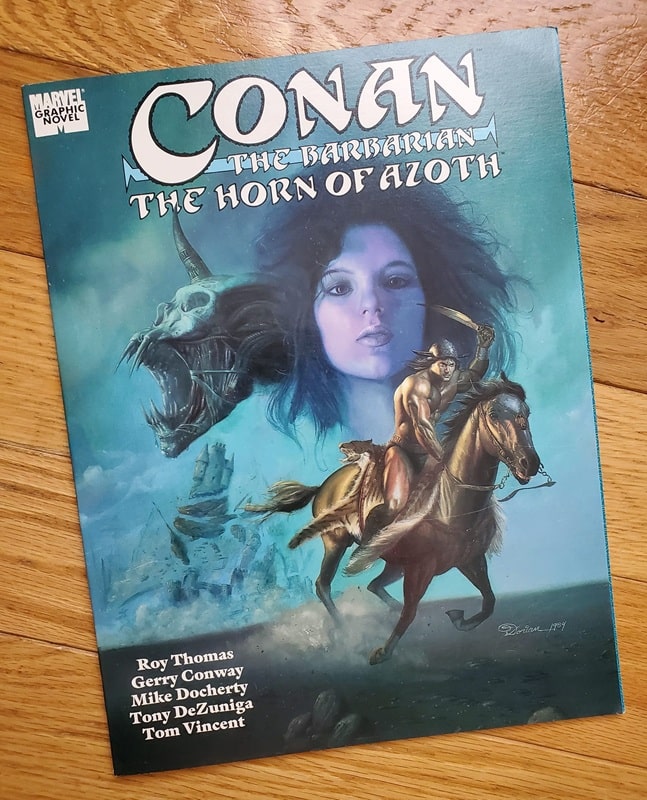 Conan: The Horn of Azoth, by Roy Thomas, Gerry Conway, Mike Docherty, Tony DeZungia, and Tom Vincent (Marvel Enterprises, January 1, 1990)
Conan: The Horn of Azoth, by Roy Thomas, Gerry Conway, Mike Docherty, Tony DeZungia, and Tom Vincent (Marvel Enterprises, January 1, 1990)
Above is Conan: The Horn of Azoth, aka Conan, King of Thieves, aka Conan the Destroyer.
Written by Roy Thomas and Gerry Conway, penciled by Mike Docherty, inked by Tony DeZuniga, and colored by Tom Vincent, this graphic novel, published in 1990 by Marvel Comics, has a fascinating publication history. For the complete history, definitely read the introduction by Thomas and Conway. What I am presenting is an abridged version of that story.
– It didn’t start off as a graphic novel; rather, it was the screenplay for the second Conan film, starring Arnold Schwarzenegger.
– In 1982, Universal producer Ed Pressman hired Thomas and Conway to write the script. Roy Thomas had previously worked as a consultant for the Conan the Barbarian.
– Roger Donaldson was to be the director.
– Barry Windsor-Smith was brought in to do concept art.
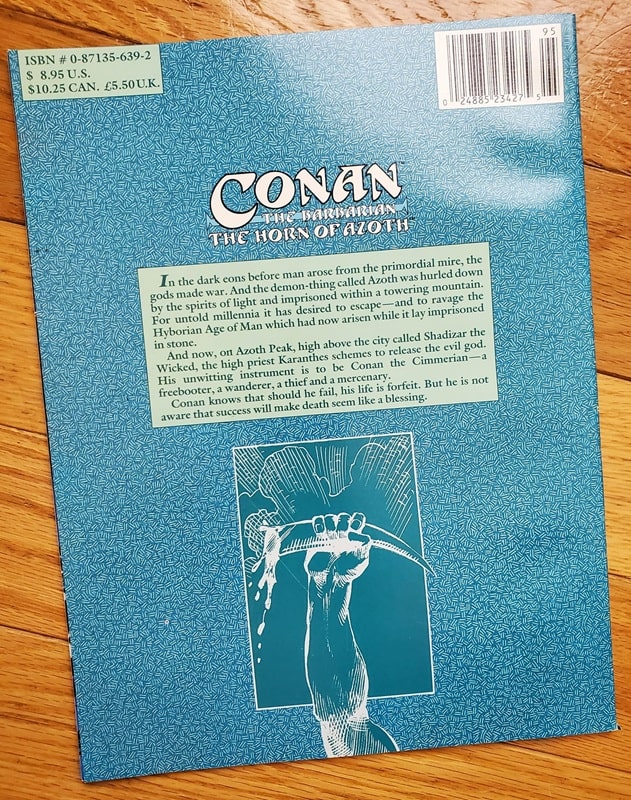 Back cover for Conan: The Horn of Azoth
Back cover for Conan: The Horn of Azoth
– Universal producer Pressman wanted it to be “lighter” (PG), so Thomas and Conway had to jettison some of their ideas. Result was their screenplay, Conan, King of Thieves.
– Pressman loved the screenplay, but sold his rights to Dino DeLaurentis.
– Dino was less familiar with REH and Conan, and he had his own ideas.
– The director, Donaldson, was removed. Dino wanted a lot of changes to the script. The storyline was continually adjusted.
– Dino hated leeches and rats and had them removed from the script. He wanted no stop-animation monster transformation, so the main monster had to be changed.
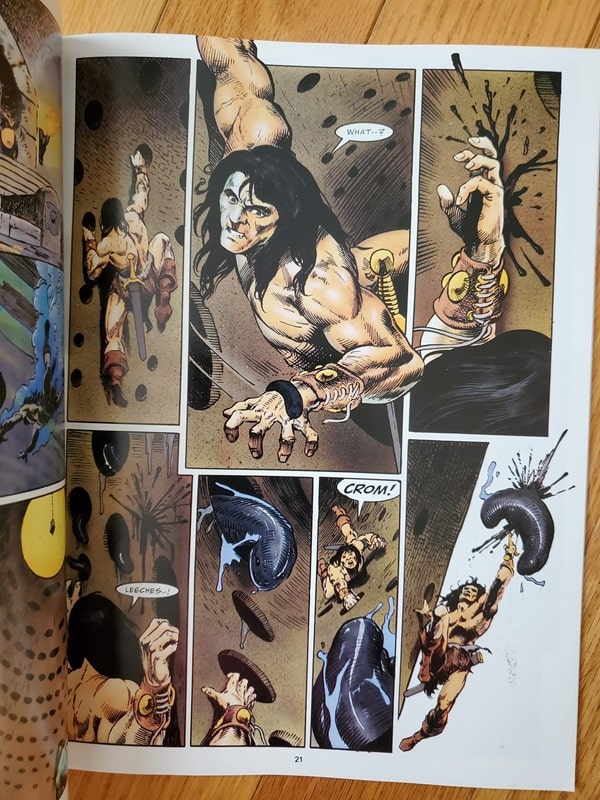
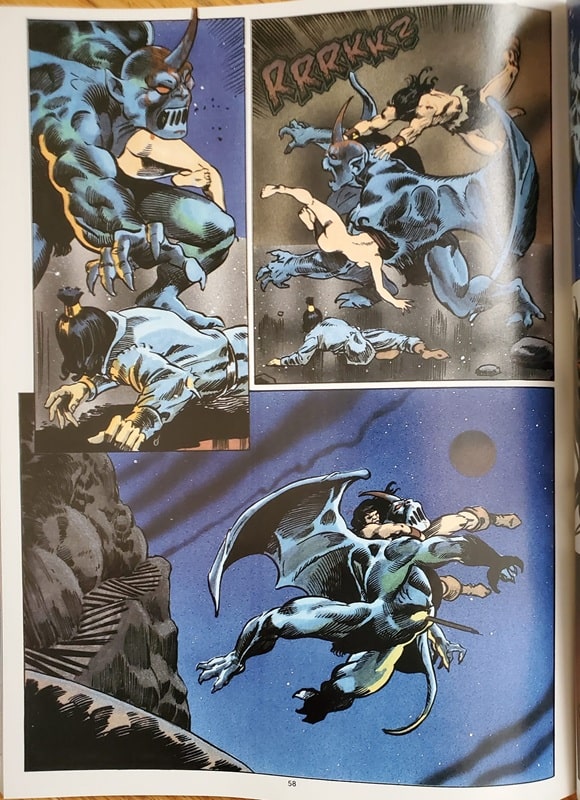
Interiors from The Horn of Azoth
– Richard Fleischer was hired as director. He came in with his own ideas and hired a new screenwriter to replace Thomas and Conway.
– Thomas and Conway had to fight for a screen credit in Conan the Destroyer. The Writers Guild decided that there were significant elements of the Thomas and Conway script that were retained, so they won.
– The original screenplay by Thomas and Conway was well-liked in the industry and led to further work for the two.
– Marvel editor Craig Anderson loved it, too, so they turned it from a 130-page screenplay to a 62-page graphic novel, published by Marvel.
And there you have it, Conan: The Horn of Azoth.
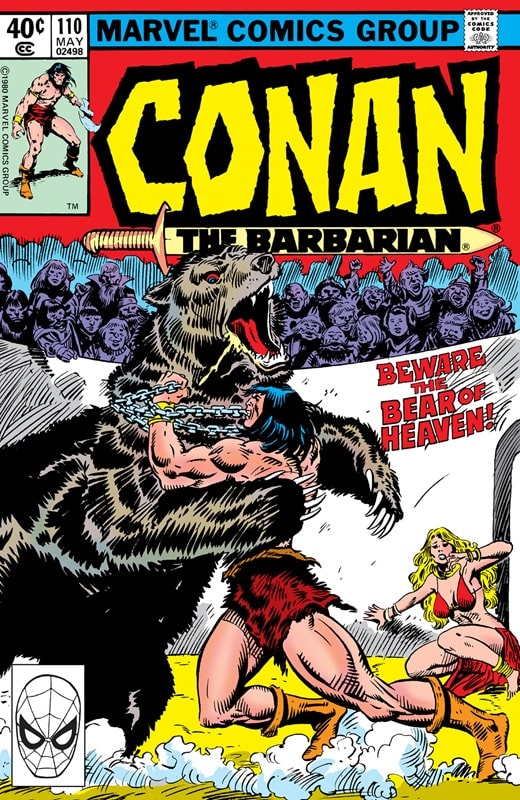 Conan the Barbarian #110, by Roy Thomas, John Buscema, and Al Milgrom (Marvel Comics, May 1980)
Conan the Barbarian #110, by Roy Thomas, John Buscema, and Al Milgrom (Marvel Comics, May 1980)
This is the first Conan the Barbarian comic that I ever read. Released in February of 1980 (with a cover date of May 1980), I would have been eight years old, soon to be nine.
I remember reading it over and over at my grandmother’s house, then redrawing it, too, making my own versions of Conan choking out a massive bear using a chain.
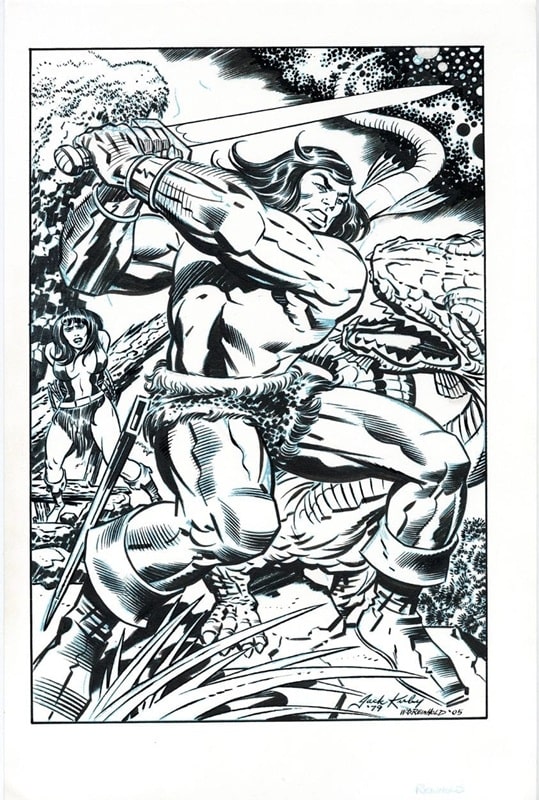 Conan by Jack Kirby
Conan by Jack Kirby
And here’s Conan the Barbarian, by Jack Kirby. Jack was not known for many Conan illustrations, but by Crom, this one is incredible.
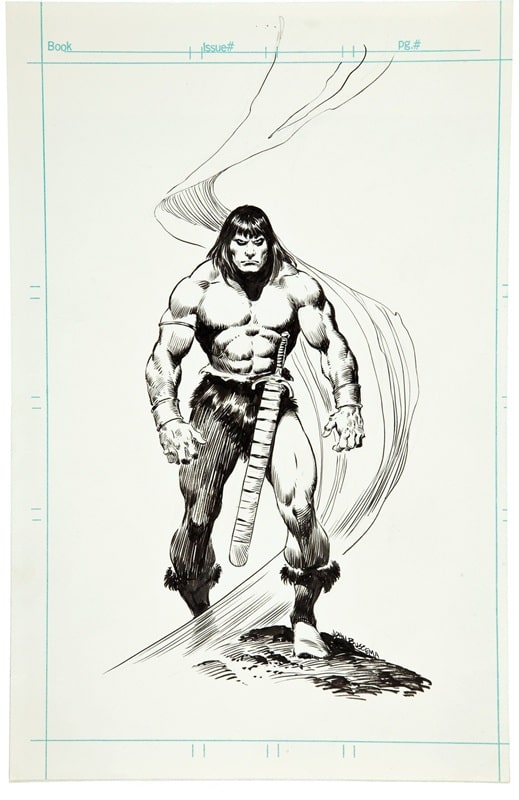 Conan by John Buscema
Conan by John Buscema
January 10, 2025 marked 23 years since the passing of the great John Buscema. His resume of artistic works is astonishing, to say the least, but for many of us (myself included), we will always remember him most for his Conan works (Conan the Barbarian, Savage Sword of Conan). When I read a Conan story (by REH or a pastiche author), and I picture Conan in my mind’s eye, I am seeing Big John’s rendition of the Cimmerian barbarian. Hail to John!
Jeffrey P. Talanian’s last article for Black Gate was The Intersection of Hobbies: Dungeons & Dragons, John Eric Holmes, and Tarzan. He is the creator and publisher of the Hyperborea sword-and-sorcery and weird science-fantasy RPG from North Wind Adventures. He was the co-author, with E. Gary Gygax, of the Castle Zagyg releases, including several Yggsburgh city supplements, Castle Zagyg: The East Mark Gazetteer, and Castle Zagyg: The Upper Works. Read Gabe Gybing’s interview with Jeffrey here, and follow his latest projects on Facebook and at www.hyperborea.tv.
Midnight Rambles: H.P. Lovecraft in Gotham by David J. Goodwin

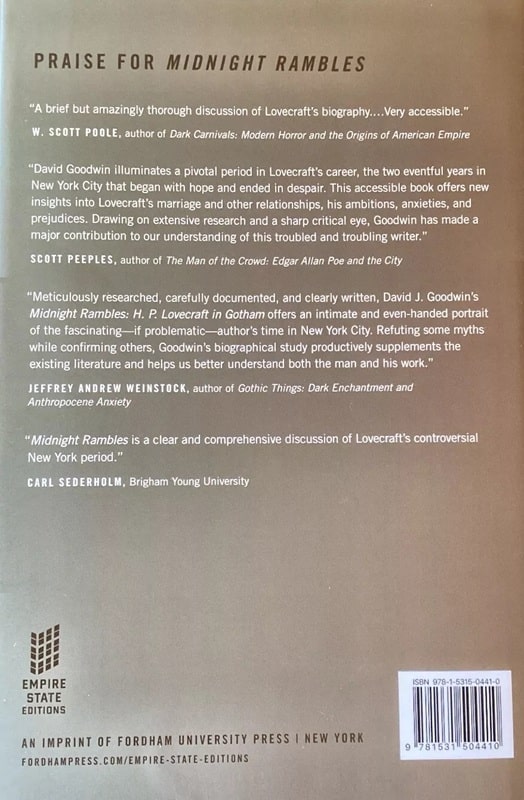
Midnight Rambles: H.P. Lovecraft in Gotham (Empire State Editions, November 7, 2023)
David J. Goodwin’s Midnight Rambles: H.P. Lovecraft in Gotham provides a narrow and deep slice of H. P. Lovecraft’s biography, detailing his personal and professional life during the few years he lived in New York City. Deeply researched and full of connections, Goodwin provides correction to some long-held Lovecraft biographical details and does not flinch from detailing Lovecraft’s innate hostility to non-WASP groups, ably describing it in the context of a deeply racist and anti-semitic society.
There are very few people who can claim to be expert on the life and work of H.P. Lovecraft, and Goodwin’s book puts him in range of that small number (such as S.T. Joshi). As he’s written and presented about Lovecraft more than half a dozen times, Goodwin seems poised to rise to stand among the critics named when the storied and controversial author rises in conversation, if he’s not there already. Learn more about Goodwin here.
Goodwin faces a difficult biographical subject in writer H.P. Lovecraft. Much material of signal importance during this time is unavailable. His spouse, Sonia Greene, destroyed some 400 of Lovecraft’s letters, largely from the period of interest for this text. Lovecraft’s aunts, demonstrably hostile to his marriage to Greene, discarded dozens of postcards when Lovecraft moved to New York through the simple expedient of giving away everything he had not specifically requested be sent to his new lodgings in the city. These details sample the rich trove of information about Lovecraft in Goodwin’s text.
Despite these holes in the biographical record, Goodwin’s ample research buttresses his assertions about the writer’s experiences in Gotham. The period constitutes a fertile time for Lovecraft, a locus that saw the invention of what would later be called the Cthulhu mythos. That it also saw the creation of the author’s least palatable, racist fiction represents an unavoidable truth. For each of the Lovecraft stories written during his residence in the city, Goodwin provides detailed research that helps illuminate the influences likely to have pressed upon the author. However, the biographer also includes historical demographic information to fully contextualize the lack of basis for any of Lovecraft’s many claims, a thread illustrating Lovecraft’s self-mythologizing nature.
The architecture of houses, the urban design of towns and cities was always of interest to Lovecraft, who, Goodwin explains, ambled extraordinary distances to view places and structures of interest. Readers familiar with John Crowley’s Little, Big may notice a reference to a real life builder important to New York that appears in that fictional text.
Lovecraft’s relationship with Sonia Greene merits several chapters and encapsulates their meeting, courtship, sudden marriage, and ultimate divorce that neatly marks the end of Lovecraft’s time in the city. Goodwin works wonders with the limited material available on this window to the past and readers familiar with Lovecraft biographies of broader scope will find material of interest in these pages. It is here Goodwin provides the price of admission for this text. Owing to an absence of a signed decree of divorce, past biographers have stated the author failed to sign those papers, meaning Greene’s subsequent marriage in California was bigamous.
Goodwin effectively implodes this “never signed” myth with solid evidence to the contrary, noting in addition that the loss of legal documentation was not uncommon in the 1920s. This conclusion is an exception among many assertions buttressed with the language of guesswork. Of all the guesses in Midnight Rambles, none struck this reviewer as unlikely or a reach. The biographer confines himself to likely scenarios, allowing for the many connections to form a compelling web to wrap these Lovecraft years for readers.
Readers interested in Lovecraft will find Midnight Rambles required reading. In this readable and at the same time admirably academic work (the two do not always meet amicably) even casual readers of Lovecraft may find information of interest. While Lovecraft expressed vehement racist and anti-semitic views, he married a Jew. While holding typical for the era dislike for homosexuals, one of his New York City walking buddies and long time correspondent was gay. Understanding this author, who some say serves as the pennant-waver for American horror fiction in sequence after Edgar Allan Poe, is made easier by Goodwin’s work. I recommend it to Lovecraft enthusiasts and any who find interest in the literary history of Gotham, our style and fashion capital.
Edward Carmien’s last article for Black Gate was When Your First Language is Role-Playing Games. His short stories “Before the Wind” and “Knives Under the Spring Moon” appeared in the print version on Black Gate in 2007 and 2008. He maintains a daily blog on writing at edwardcarmien.wordpress.com
Goth Chick News: Throwback Thursday – When Mickey Rourke Met Lucifer
 Angel Heart (Tri-Star Pictures, March 6, 1987)
Angel Heart (Tri-Star Pictures, March 6, 1987)
This is how my brain works sometimes.
This week Deadline reported that Robert De Niro will be starring in an upcoming crime drama for Netflix called The Whisper Man based on a novel by the same name. That made me think that when I last saw De Niro, the dude looked pretty old, and that starring in a multi-installment series for Netflix would be pretty taxing. That led me to IMDB to find out how old he really is (De Niro is 81), which resulted in going down the rabbit hole of his incredible career, which led me to Angel Heart (1987).
I had all but forgotten about this film, but the minute I read the name all this controversial stuff about it started resurfacing in my mind. Honestly, I couldn’t recall if Angel Heart was really all that controversial, or if I remembered it wrong and naturally this resulted in a lost afternoon reading everything about it I could get my hands on.
So, here we are and yes, the movie was steeped in controversy.
 Mickey Rourke and Lisa Bonet in Angel Heart
Mickey Rourke and Lisa Bonet in Angel Heart
Directed by Alan Parker (Midnight Express) and starring the pre-cosmetic surgery hotness that was a young Mickey Rourke, Robert De Niro, and Lisa Bonet (one of those adorable Cosby Show kids), Angel Heart blended the genres of psychological thriller, neo-noir, and horror. Set in 1955 New Orleans, it tells the story of small-time private investigator Harry Angel (Rourke) who is hired by a man who calls himself Louis Cypher (De Niro) to track down a singer named Johnny Favorite.
The investigation takes Angel into the backwaters of the Louisiana bayou where he meets the luscious young Epiphany Proudfoot (Bonet), who also happens to be a voodoo priestess. Suddenly, the trail Angel is following becomes soaked in blood and gruesome murder. So, who is trying to keep Angel from finding his quarry?
To kick off the reasons Angel Heart became a cult classic, after it pretty much bombed at the box office, was that at the time Bonet was best known for her role as Denise Huxtable on The Cosby Show, a wholesome family sitcom. Bonet’s Angel Heart performance included a graphic sex scene and nudity, which led to backlash for her career and to her public image.
Though it didn’t exactly ruin her in Hollywood, Angel Heart made it challenging for Bonet to find roles that matched her previous success. Producers and casting agents often pigeonhole actresses based on public perception, and Bonet’s decision to take on such a provocative role led to her being seen as “too edgy” for mainstream projects (for another example, seee Elizabeth Berkley [Saved by the Bell] and her movie Showgirl [1995]).
While we’re on the topic of sex scenes, the most infamous Angel Heart controversy involved the raw sex scene between Rourke and Bonet. This scene, which featured nudity, blood, and disturbing imagery, pushed boundaries for its time, not the least of which was because of the revelation of an incestuous relationship between Rourke’s and Bonet’s characters. This plot twist, coupled with the explicitness of the scene, sparked outrage and made the film even more polarizing.
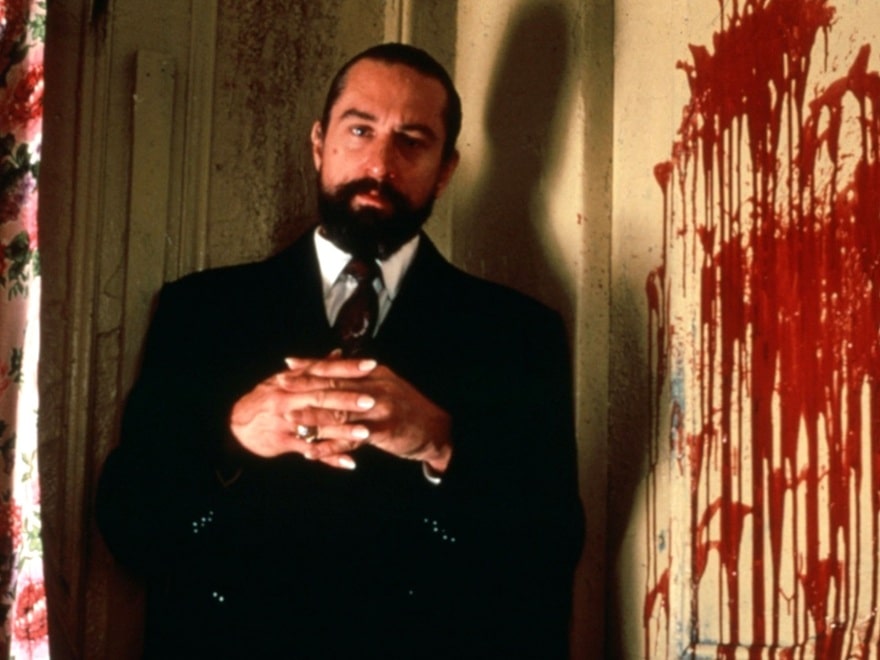 Robert De Niro as Louis Cyphre
Robert De Niro as Louis Cyphre
The film’s depiction of voodoo practices, combined with De Niro’s portrayal of Louis Cyphre (an alias for Lucifer if that hasn’t jumped out at you yet), upset religious groups to no end. De Niro’s performance, though praised by audiences for its eerie subtlety, drew vocal criticism for allegedly glamorizing the devil. Critics accused Angel Heart of promoting occultism and blasphemy, while others argued that the film perpetuated stereotypes about voodoo and Haitian culture, painting them as sinister or evil.
Then there was the violence. Angel Heart is graphically violent, with several brutal and unsettling death scenes, including one involving a character’s heart being ripped out and another being boiled alive in a large vat of jambalaya. The overall dark tones and the depiction of psychological torment left many viewers disturbed, especially as Harry Angel’s true identity and fate are revealed.
The Motion Picture Association of America (MPAA) initially gave the film an X rating. Alan Parker had to cut approximately 10 seconds of footage from Bonet and Rourke’s nude romp to secure an R rating, though many still found the final version shocking. Ironically all the goriest scenes remained intact. You’d never imagine De Niro eating a hard-boiled egg could be so unnerving.
 Mickey Rourke then and now
Mickey Rourke then and now
Yes, I immediately had to give Angel Heart a rewatch – it’s pretty much streaming everywhere. Frankly, I’ve always liked it in the same way I’ve always liked The Ninth Gate (1999) with Johnny Depp. Just suspend your disbelief and go there, provided you can get around the distraction of how the actors have changed (not just aged) in the years since.
A Masterful Three Novella Original Anthology: The New Atlantis, edited by Robert Silverberg

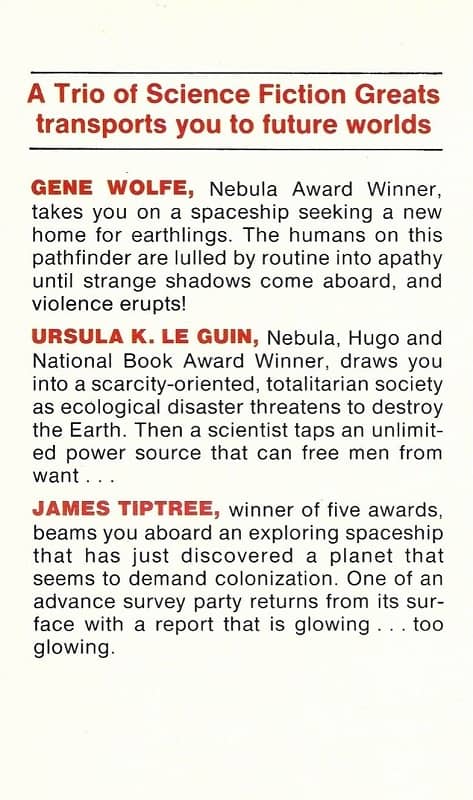
The New Atlantis (Warner Books paperback reprint, 1978). Cover by Lou Feck
My latest look at a book from the 1970s treats a major anthology from 1975. The New Atlantis and Other Novellas collects three long stories: “Silhouette,” by Gene Wolfe; “The New Atlantis,” by Ursula K. Le Guin, and “A Momentary Taste of Being,” by James Tiptree, Jr. The project received plenty of notice at awards time – the book as a whole was fifth in the Locus Poll for Best Anthology, “A Momentary Taste of Being” and “Silhouette” were 7th and 9th, respectively, in the Locus Poll for Best Novella, while “The New Atlantis” won the Locus Poll for Best Novelette, and received a Hugo nomination in that category, and both it and the Tiptree also got Nebula nominations.
Let’s look at the individual stories first.
“Silhouette” by Gene WolfeGene Wolfe was a remarkable writer at all lengths — he produced brilliant short-shorts, short stories, novelettes, novellas, novels, series of novels, even a series of series of novels. “Silhouette,” at about 20,000 words, is one of his novellas — and it may be that the novella was his ideal length.
[Click the images for masterful versions.]
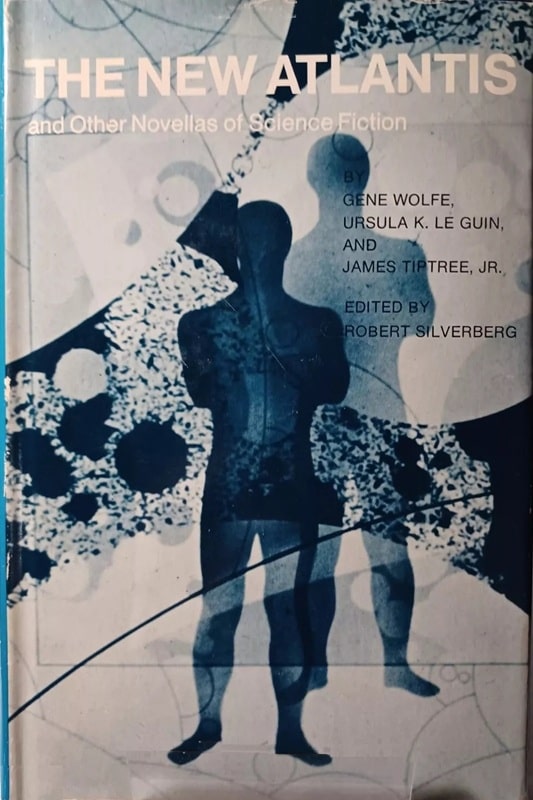 The New Atlantis hardcover edition (Hawthorn Books/Science Fiction Book Club, 1990). Cover by Jorge Hernandez
The New Atlantis hardcover edition (Hawthorn Books/Science Fiction Book Club, 1990). Cover by Jorge Hernandez
At any rate he wrote some 15 novellas, ranging from “The Fifth Head of Cerberus” in 1972, to “Memorare” in 2007; and of these at least “The Fifth Head of Cerberus,” “The Death of Dr. Island,” “Tracking Song,” “The Eyeflash Miracles,” “Seven American Nights,” and “The Ziggurat” rank among the great novellas in SF history. I don’t rank “Silhouette” quite with those stories, but it is a powerful and original piece.
A starship has reached a planet called Neuerrdraht, and the crew are considering whether it is suitable for human habitation. The viewpoint character is Johann, one of the officers, who is skeptical about the prospect of colonization. The ship is deteriorating, however, and the Captain is insistent. There are other factions, including a group that worships the ship’s computer… We get a flavor of life on the ship — a certain grunginess, oppressiveness, with features such as women (except for the Captain) being required to sleep with officers whenever available. Johann has dreams of walking on the surface of the planet, and he is visited by a — shadow? his shadow? something from the planet? A silhouette, at any rate!
The story continues in a disturbing fashion, as the atmosphere on the ship becomes darker. There’s a sense that the ship’s decay mirrors the decay on Earth, from which they had escaped. Johann finds himself confronting the computer-worshippers, and a group that seems intent on mutiny, and people ready to hurt him if he won’t cooperate. With the ambiguous help of the shadow being, he gets through all this, and then comes the actual mutiny, with chaotic and unexpected results.
This is a very good story, but as I said not quite Wolfe at his best. It lacks the truly mysterious aspect that I love most in Wolfe’s work. As I suggest above, I think the best way to read it is to see conditions on the ship as a sort of metaphor — a reflection, even a silhouette — of conditions on the Earth they left. The ship is full of class divisions, and sexual divisions: it’s a particularly oppressive place for women, it seems. And there is no reason to expect colonizing Neuerrdraht will solve anything.
“The New Atlantis” by Ursula K. Le GuinThis is the shortest of these stories, at perhaps 10,000 words. It is set in a ruined near future (to 1975) US, in which climate change has caused sea levels to rise and some parts of the coast are submerged. The country is ruled by a sort of corporatist tyranny, which to my eyes had both right-wing and left-wing elements. The narrator lives in Portland, and her husband has just returned from a prison camp — but they have to be careful, as in this future marriage is illegal. She is a musician, and her husband is a mathematician. And there are rumors of new continents emerging from the ocean.
The narrative alternates passages in the narrator’s POV, with passages from the POV of a mysterious underwater being. The narrator tells of ordinary life in this dismal future: practices her music in the bathroom to frustrate the bug they discovered there, and her husband has friends over, talking dangerously about politics and also about science — in particular, a discovery they have made of a very cheap and portable energy source. The corporatist rulers have a monopoly on energy, and there isn’t enough available to most people. Free energy will be wonderful but destabilizing to the government. . Meanwhile, the sea level keeps rising, and her husband’s risks are clearly threatening their life together. All along the underwater being is telling of what it witnesses, and it’s more or less clear that this is an entity on the rising continent.
The conclusion is mournful, ultimately. There is a sense — ambiguous perhaps — that humanity has irretrievably messed up the planet, and that the “New Atlantis,” which might have been a new sanctuary perhaps? 0r might represent a purified world? — will either be empty or available for humanity’s successors. (But really that’s my speculation purely.)
It’s obvious that aspects of this story seem prescient now, though the story certainly isn’t (and wasn’t trying to be) an accurate prediction of our times. It’s more of an impressionistic, and somewhat despairing, depiction of a decay Le Guin foresaw. And it’s beautifully written.
“A Momentary Taste of Being” by James Tiptree, Jr.This story is by far the longest story here, at some 37,000 words, occupying well over half the book. The setup is curiously similar to that of Wolfe’s “Silhouette”: a starship, the Centaur, has come from a ravaged Earth hoping to find a suitable planet to colonize. As the ship’s name suggests, the solar system being investigated is Alpha Centauri, and as the action opens, Dr. Lory Kaye is in quarantine, having just returned from an expedition to a promising planet. She returned alone, leaving the fellow members of the expedition on the planet, which seems to be a wonderful place, in her telling. She has also brought back a sample of alien life, a large plant-like being. Her ship, and she herself, are quarantined. The story is told from the POV of her brother, Dr. Aaron Kaye, the chief medical officer.
Lory’s tale is received suspiciously by some of the officers. There is minimal actual data retrieved from the planet. There are some hints of what seems to have been violence, or at least disagreements between the various planetary explorers. And there seem to be strange effects on everyone who gets anywhere near the alien plant. But everyone is exhausted by their long mission (10 years) and there is a sense that this is the last chance for the people of Earth. Aaron himself is one of the more skeptical about the planet’s prospects, as is their alcoholic captain. But others desperately want to immediately colonize the planet and send a signal to Earth for others to follow. One man tells Aaron of his plans to set himself up as a sort of petty ruler, complete with an harem (that would include Aaron’s lover Solange.) Aaron, too, is torn by his loyalty to his sister, with whom he had an extended incestuous relationship through their teens.
The story is a rather a slow burn — with a very extended telling of the final day or so of Lory’s quarantine, and of the plans to study the alien plant she brought back; as well as some flashback to Aaron and Lory’s past, and depictions of Aaron’s interactions with other crew members, including a horribly injured man named Tighe, as well as Captain Yellaston, whose alcohol is supplied by Aaron; and the various other officers with their motivations, and descriptions of the somewhat unstable mental state of just about everyone.
But it all culminates in a really powerful final scene, as the nature of the alien plant creature is revealed, and Tiptree’s metaphor for what is really going on becomes clear. It’s a very Tiptree-like ending, and, like so many of her stories, it’s fundamentally about sex and death. Part of me wishes it was somewhat shorter, but perhaps the drawn out beginning is necessary to set up the conclusion. It’s not Tiptree’s greatest story, but it’s one of her most characteristic, I think, and it’s really despairingly effective. Tiptree’s vision, it seems to me, never exactly sunny, became darker and darker throughout the ’70s, culminating in 1980 with “Slow Music,” often called her last great story.
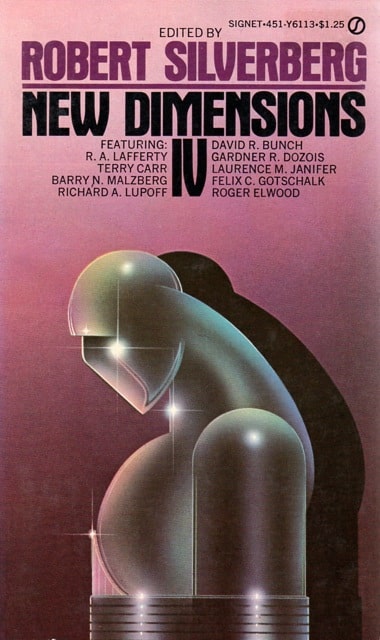

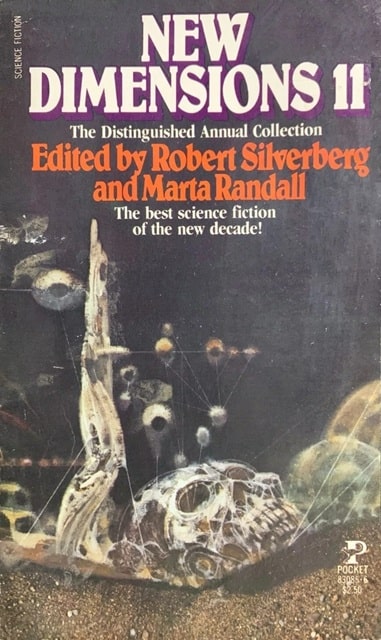
Three volumes of Robert Silverberg’s New Dimensions: IV (Signet, October 1974),
5 (Perennial Library, September 1976), and 11 (edited with Marta Randall,
Pocket Books, July 1980). Cover art: unknown, Joe Harris, Richard Powers
This anthology highlights an aspect of Silverberg’s career for which he perhaps hasn’t gotten the credit he deserves: his influence on SF as an editor and anthologist. And it is possible that the single best original anthology Robert Silverberg produced was this one — The New Atlantis. The three stories are by three of the greatest SF writers of all time, each at the absolute height of their powers. (And, as Silverberg notes in his introduction, all three of these writers came to SF fairly late.)
Silverberg’s editorial contributions go well beyond this book. His original anthology series New Dimensions is remarkable as well, featuring a great many of the best stories of its time. The massive original anthology Epoch (co-edited by Roger Elwood) was far better than its Elwood-stained reputation suggests. He produced many more original anthologies (see sidebar below).
He was also a prolific anthologist of older stories, most notably The Science Fiction Hall of Fame, Volume I, and a wonderful set of 7 books called Alpha. He published quite a few more short anthologies of older SF, and some later doorstops, both original (as with the Legends books, and Far Horizons, plus three books following on the late Terry Carr’s Universe series that he co-edited with his wife Karen Haber), and also reprint books, particularly two Arbor House collections of Great Short Stories and Great Short Novels.
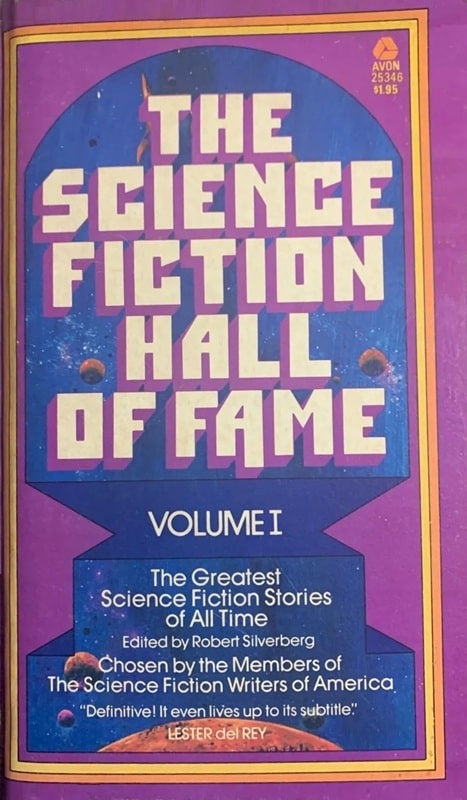
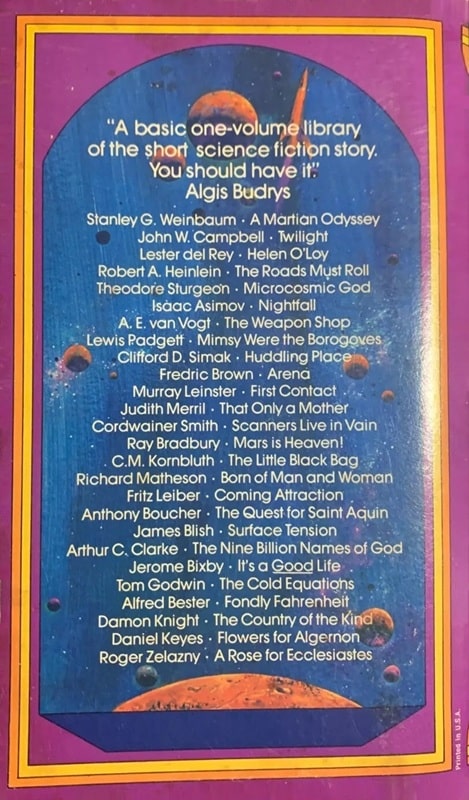
The Science Fiction Hall of Fame, Volume I, edited by Robert Silverberg (Avon, July 1971).
In the decade from 1969 to 1979, Robert Silverberg edited 11 anthologies of original novellas. (One book had four stories.) At the same time Silverberg was producing his original anthology series New Dimensions, and his reprint series Alpha. And that’s not to mention his own fiction — despite a retirement during this period he published some 15 novels and dozens of short stories.
Relatively few examples in the three novella format come from other editors. Silverberg’s primary rival (as I perceive it), Terry Carr, did just one “three novella” book, though a very good one, An Exaltation of Stars. The super prolific Roger Elwood published three, Futurelove, A World Named Cleopatra (with Poul Anderson), and In the Wake of Man. That last book, which had stories by R. A. Lafferty, and Walter F. Moudy, is one of Elwood’s very best, particularly as it features one of Gene Wolfe’s greatest novellas, “Tracking Song.”
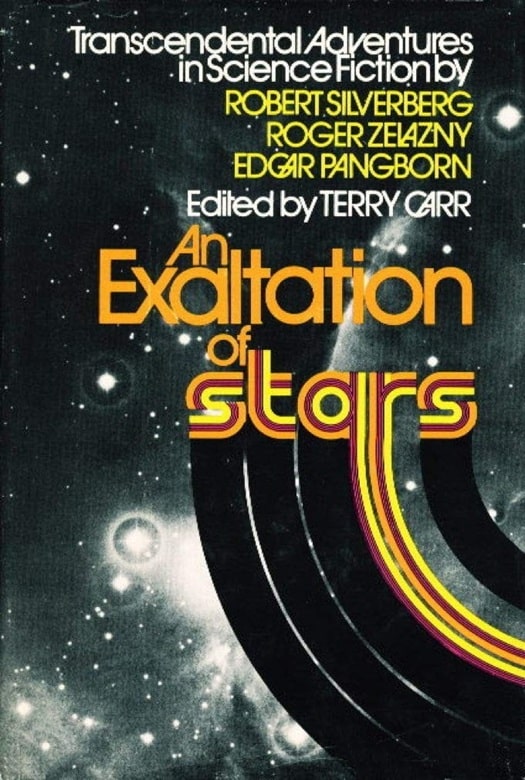

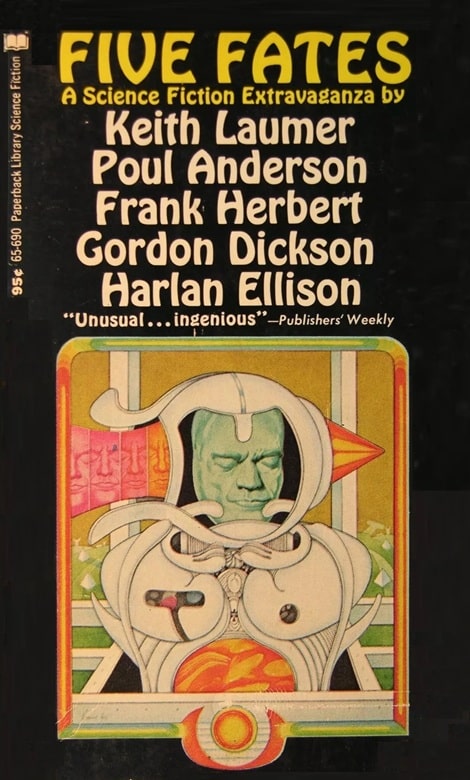
Other anthologies in a novella format: An Exaltation of Stars, edited by Terry Carr (Simon &
Schuster, June 1973), In the Wake of Man, edited by Roger Elwood (Bobbs-Merrill Company,
August 1975), and Five Fates, edited by Keith Laumer (Paperback Library, September 1971).
Cover art by Adelson & Eichinger, Nick Aristovulos, Lorraine Fox
The Anderson collaboration has four stories, all set on the title world, a creation of Anderson’s. (In this sense it mildly resembles the Twayne Triplets of the 1950s, which collected three novellas on the same subject, based on an introductory essay. Several of those books were planned, but in the end only two appeared, Witches Three and The Petrified Planet.) One other anthology of interest is a 1970 book put together by Keith Laumer, Five Fates, in which five writers continued a brief introduction by Laumer, in which a man goes to a Euthanasia center and begins to die — each writer then extrapolates what may happen to this man after (?) death.
Here are the eleven “novella” books Silverberg did.

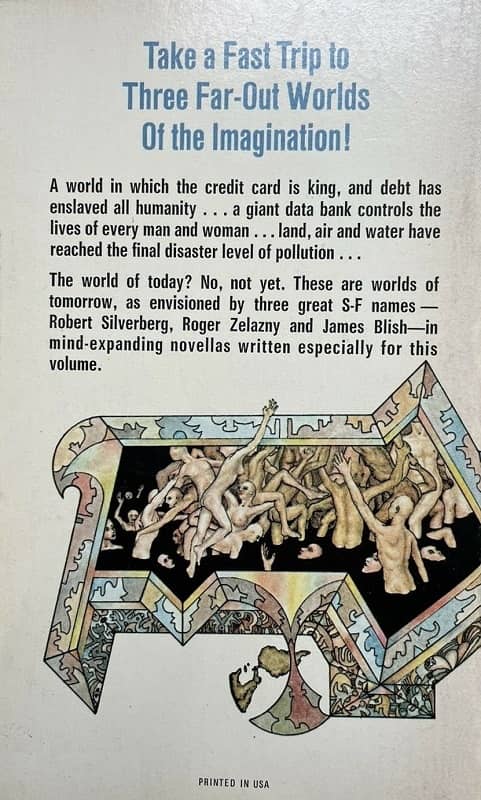
Three for Tomorrow (Dell, 1970). Cover uncredited
How It Was When the Past Went Away • novella by Robert Silverberg
The Eve of RUMOKO • novella by Roger Zelazny
We All Die Naked • novelette by James Blish
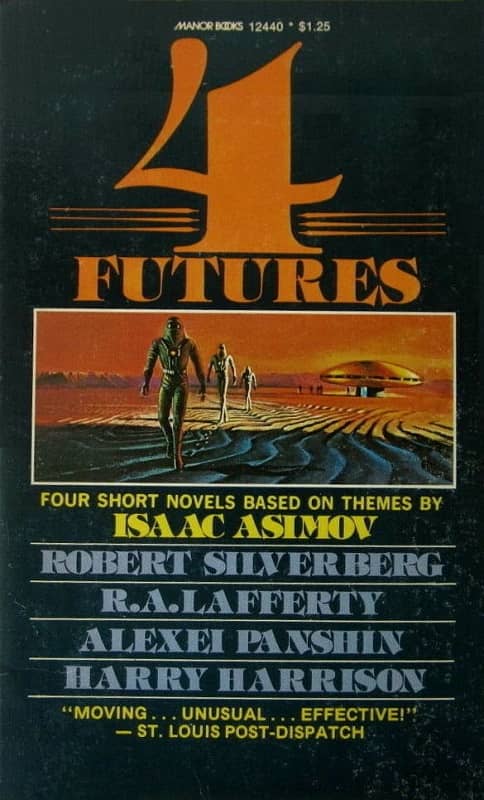
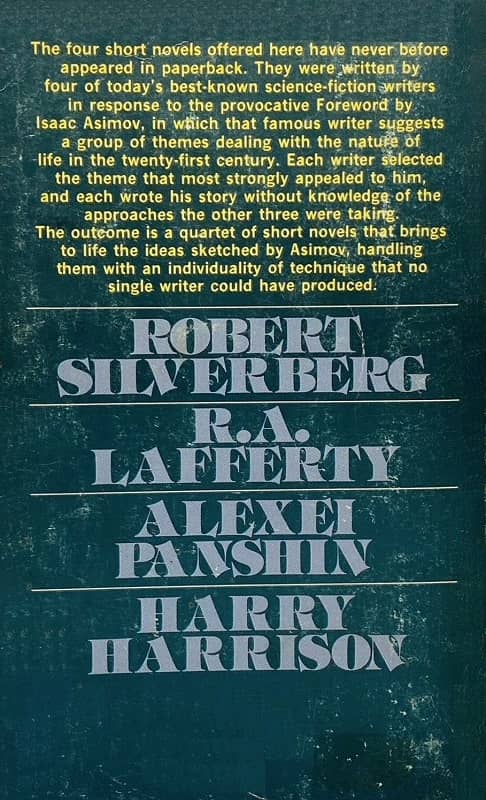
4 Futures (Manor Books, 1976 ). Cover by Bruce Pennington
Ishmael Into the Barrens • novelette by R. A. Lafferty
Brave Newer World • novelette by Harry Harrison
How Can We Sink When We Can Fly? • novelette by Alexei Panshin
Going • novella by Robert Silverberg
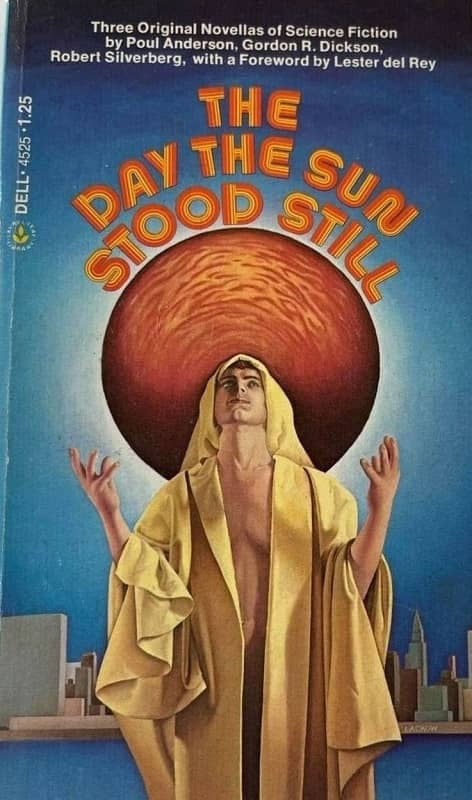
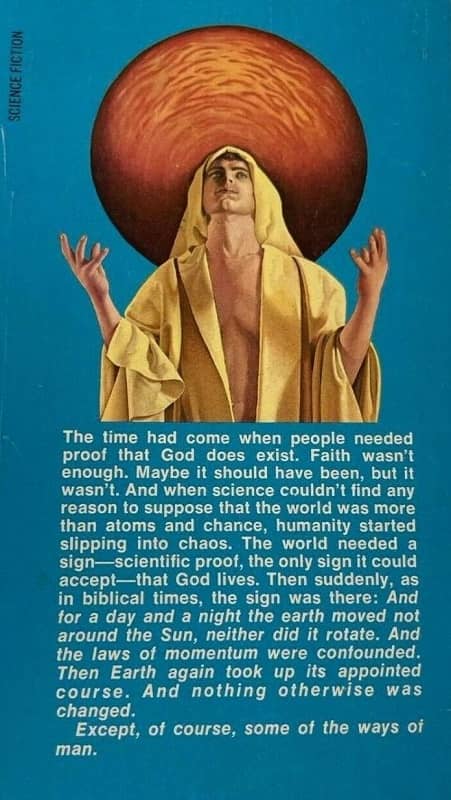
The Day the Sun Stood Still (Dell, 1975). Cover by Andy Lackow
Thomas the Proclaimer • novella by Robert Silverberg
A Chapter of Revelation • novella by Poul Anderson
Things Which Are Caesar’s • novella by Gordon R. Dickson

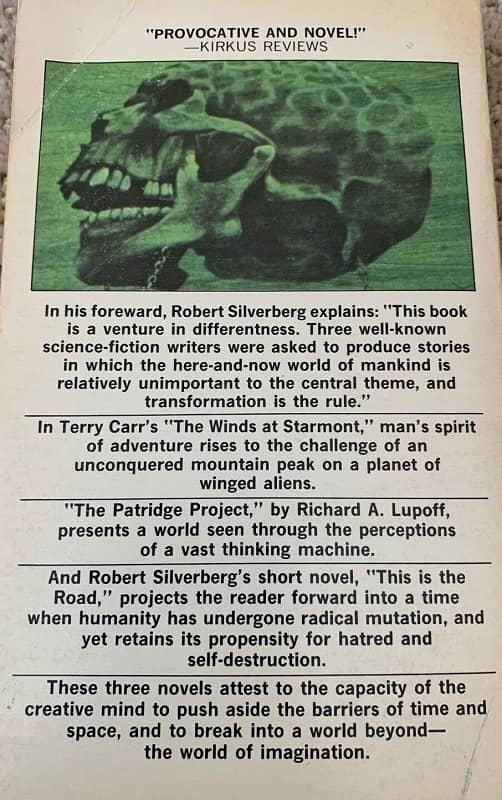
No Mind of Man (Manor Books, 1973). Cover uncredited
The Winds at Starmont • novella by Terry Carr
The Partridge Project • novella by Richard A. Lupoff
This Is the Road • novella by Robert Silverberg
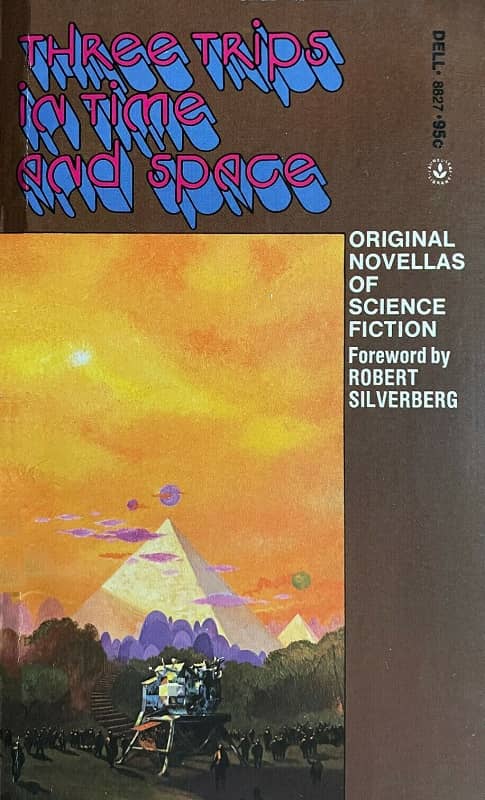
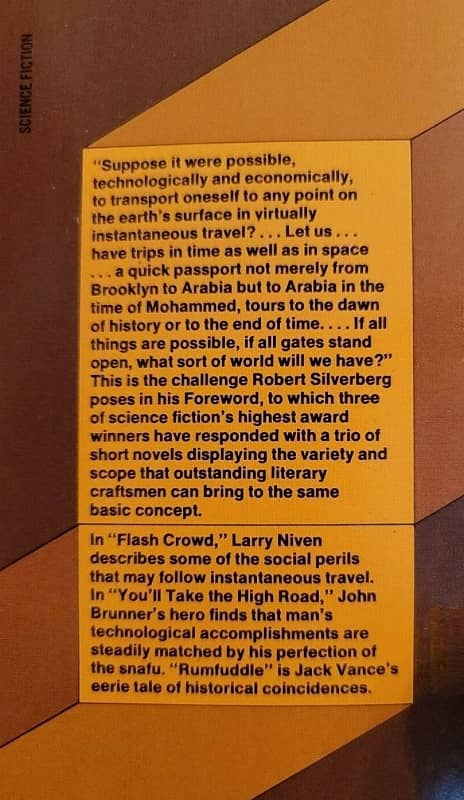
Three Trips in Time and Space (Dell, 1974). Cover by Paul Lehr
Flash Crowd • novella by Larry Niven
You’ll Take the High Road • novella by John Brunner
Rumfuddle • novella by Jack Vance
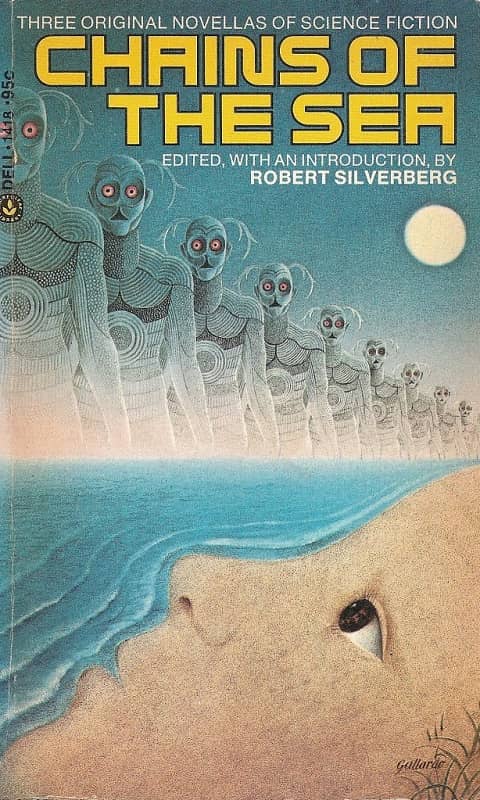
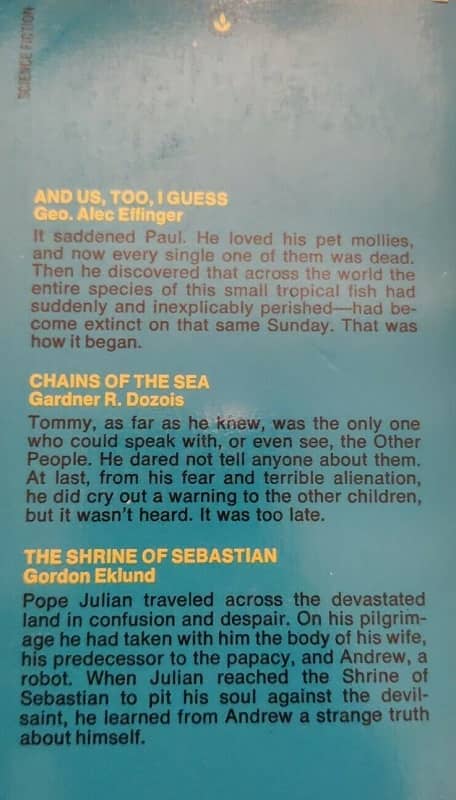
Chains of the Sea (Dell, 1974). Cover by Gervasio Gallardo
And Us, Too, I Guess • novella by George Alec Effinger
Chains of the Sea • novella by Gardner Dozois
The Shrine of Sebastian • novella by Gordon Eklund
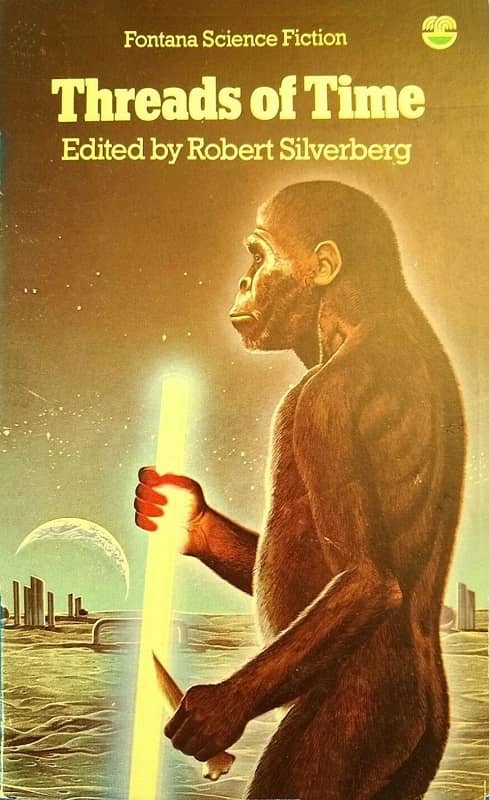
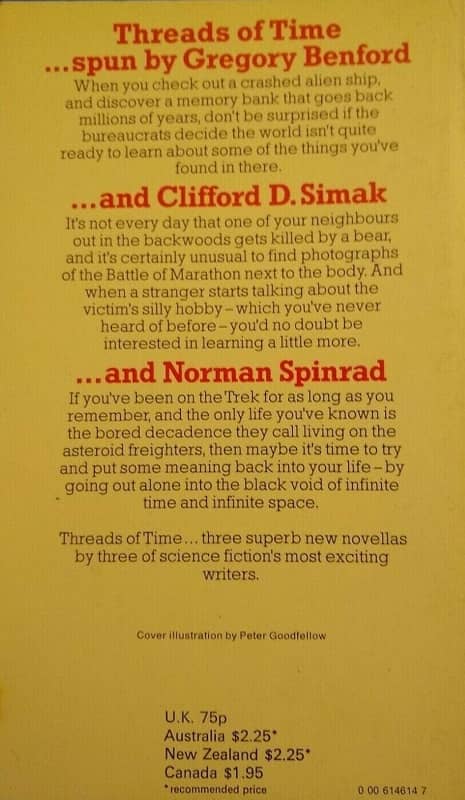
Threads of Time (Fontana, 1977). Cover by Peter Goodfellow
Threads of Time • novella by Gregory Benford
The Marathon Photograph • novella by Clifford D. Simak
Riding the Torch • novella by Norman Spinrad


The New Atlantis (Warner Books, 1978). Cover by Lou Feck
Silhouette • novella by Gene Wolfe
The New Atlantis • novelette by Ursula K. Le Guin
A Momentary Taste of Being • novella by James Tiptree, Jr.
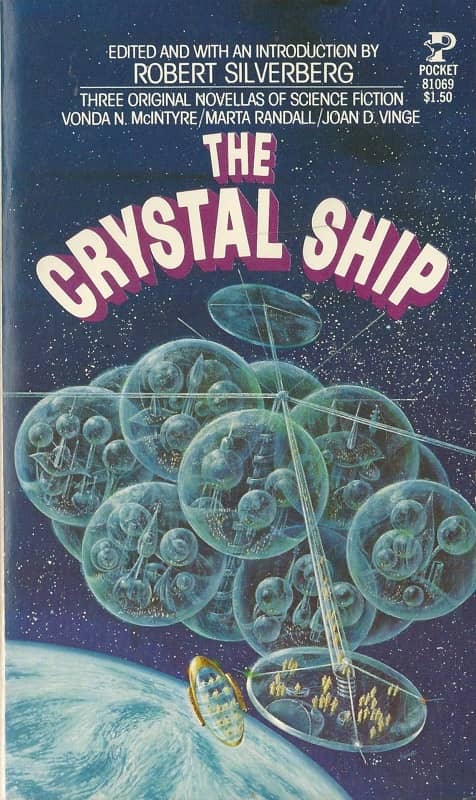
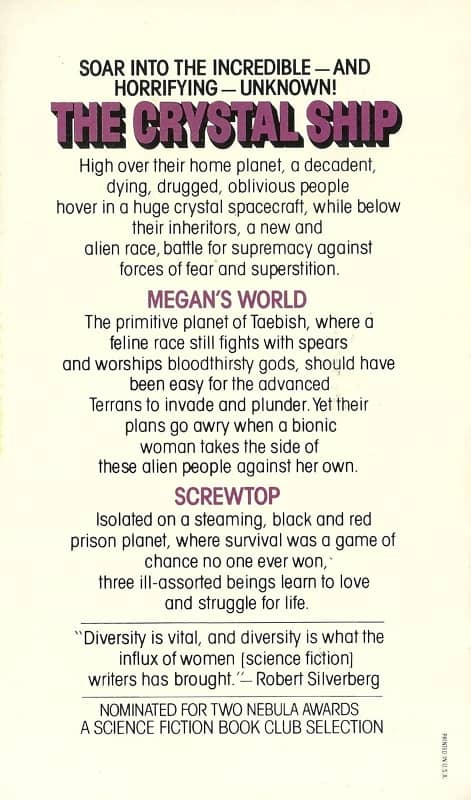
The Crystal Ship (Pocket Books, 1977). Cover byNorman Adams
The Crystal Ship • novella by Joan D. Vinge
Megan’s World • novella by Marta Randall
Screwtop • novella by Vonda N. McIntyre
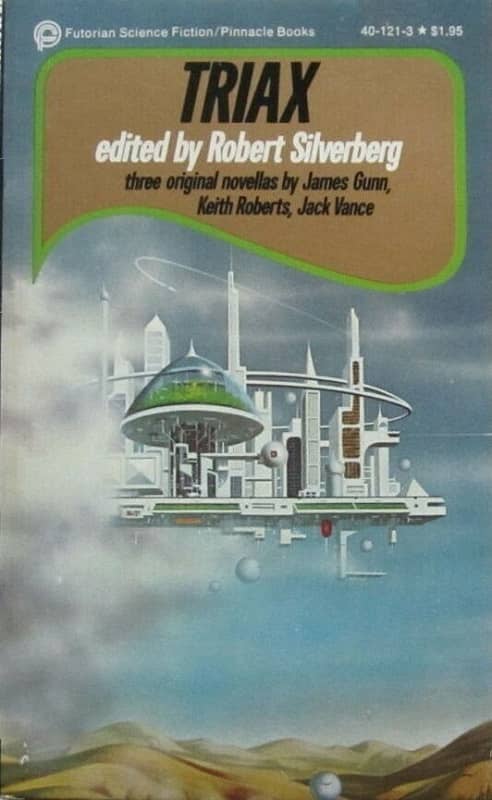
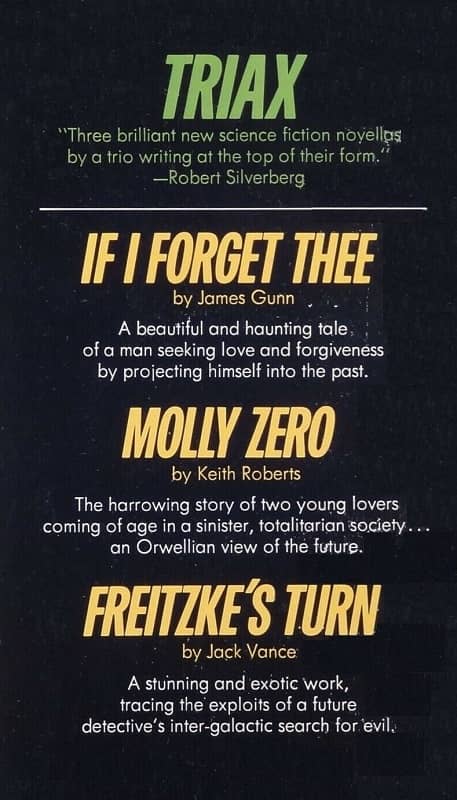
Triax (Pinnacle, 1977). Covers by Randy Weidner
Molly Zero • novella by Keith Roberts
If I Forget Thee • novella by James E. Gunn
Freitzke’s Turn • novella by Jack Vance
The Edge of Space hardcover edition (Elsevier/Nelson Books, 1979). Wraparound cover by Freff
The Edge of Space (1979)The King’s Dogs • novella by Phyllis Gotlieb
In the Blood • novella by Glenn Chang
Acts of Love • novella by Mark J. McGarry
Rich Horton’s last article for us was an obituary for Barry N. Malzberg. His website is Strange at Ecbatan. Rich has written over 200 articles for Black Gate, see them all here.
What a Croc, Part II
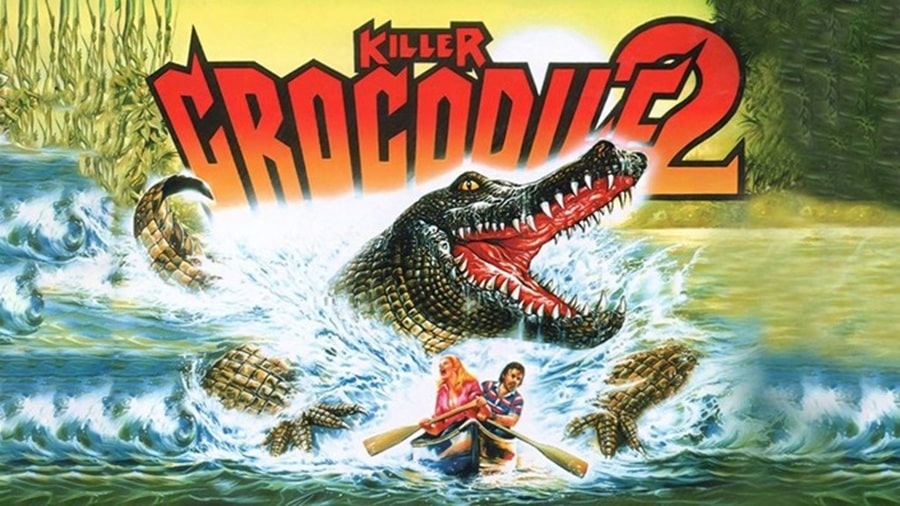 Killer Crocodile 2 (Fulvia Film, 1990)
Killer Crocodile 2 (Fulvia Film, 1990)
My next watch-a-thon is a favourite genre: crocs and gators. Unfortunately, this means the pickings are a bit slim, as I’ve already seen most of them, but I’ve managed to dig up 15 so far (supplemented with a Gila Monster and a couple of Komodos), and I’m sure the intended list of 20 will materialize as streaming services start suggesting titles.
Killer Crocodile 2 (1990) TubiCroc or gator? Crocodile. Again.
Real or faker? A hilarious puppet. The same one.
Any good? A direct follow on from the first story, this time the offspring of the first puppet is doing the chewing. Nefarious types are still dumping toxic waste, thrill seekers are still inexplicably wakeboarding in the world’s muddiest river, and ladies are still getting their kit off for a leaden leading man. Actually, the sexy pillow talk is a highlight. “Don’t you know that fear and near death situations stimulate and heighten a man’s reproductive organs?” Phwoar, steady on, love, you had me at ‘Don’t’.
[Click the images for gator-sized versions.]
The first film featured an unsettling attack on a small boy, but this one ups the ante by having a whole canoe-load of kids get eaten while a nun prays for salvation. Glorious hokum.
6/10
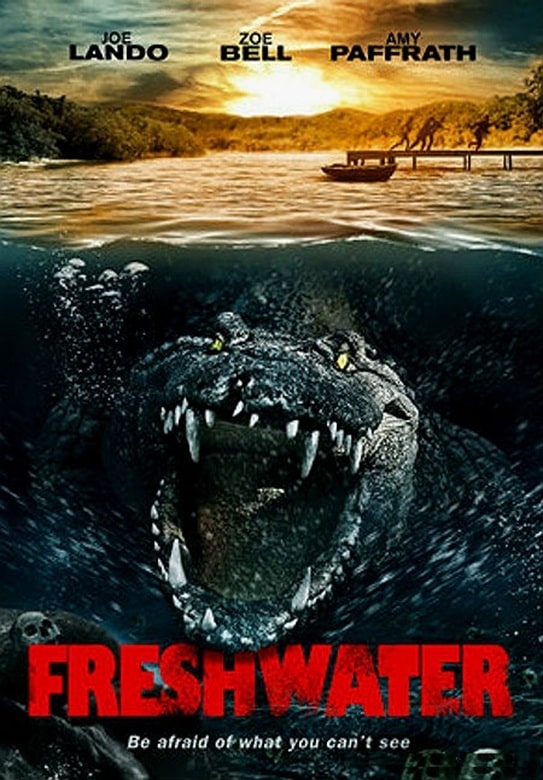
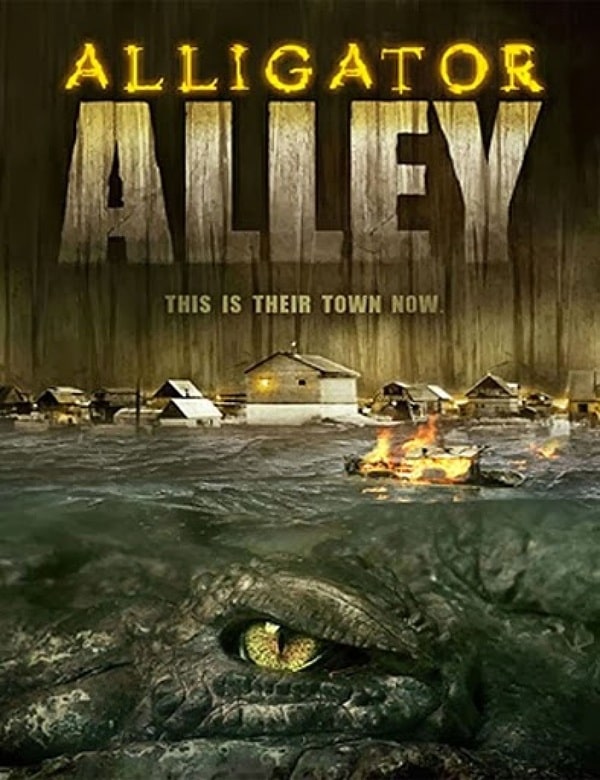
Freshwater (MultiVisionnaire, February 26, 2016) and Alligator Alley (Active Entertainment, 2013)
Croc or gator? Gator, possibly.
Real or faker? Let’s just say, when we do see a gator, it’s rubbish.
Any good? I’m torn, and not in a good way. There’s an awful lot wrong with this one, the script, the directing, the editing, the score (dear God, that score), most of the acting, the effects, and yet it tries something different (no spoilers, but it’s not what I was expecting) and I applaud the ballsy ending.
However, when the intended humor falls flat but your audience laughs at everything else, that ain’t good. Makes for a good drinking game if you are counting poor decisions (the first being to watch this optimistically).
5/10
Alligator Alley (2013) YouTubeCroc or gator? Gators!
Real or faker? Reasonably dodgy CG.
Any good? Also known as Ragin Cajun Redneck Gators, you know exactly what to expect going into this SyFy slice of grilled ham, and yet it upends those expectations with a hearty fart in the face. Toxic moonshine mutates gators into dart firing rascals whose bites turn folks into more gators (I kid you not). It’s all set against the backdrop of a family feud down south, and is as ludicrous as you might imagine.
It’s rubbish, but it’s daft rubbish, which is about as good as it gets these days, so I’m not hating it.
6/10
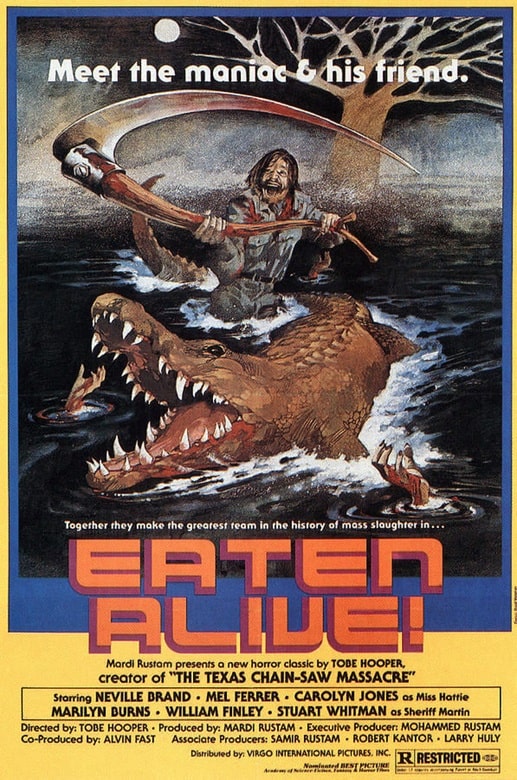
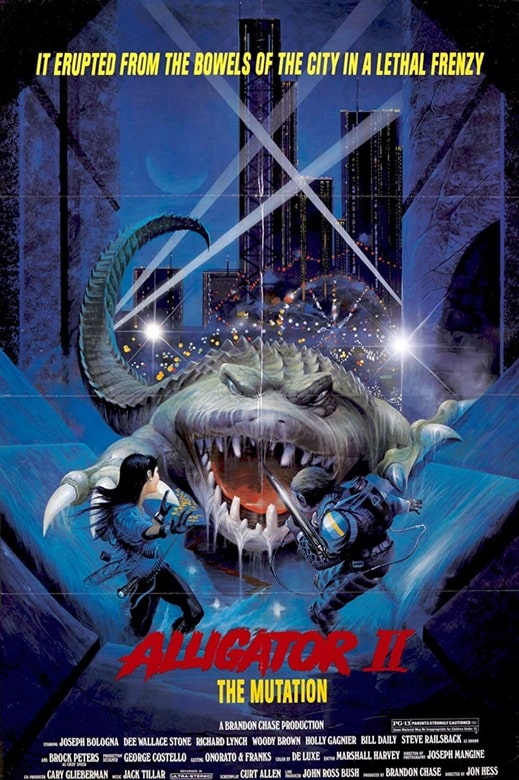
Eaten Alive (Mars Productions, October 18, 1976) and Alligator II: The Mutation (New Line Cinema, June 5, 1991)
Croc or gator? Nile Croc!
Real or faker? Cute papier mache monster.
Any good? Some good has come out of this ill-considered project, for I have finally watched the missing Tobe Hooper film in my life — a film banned in the UK until 1998 as part of Mary Whitehouse’s Video Nasty apocalypse. Though tame by today’s standards, the film does come with a warning for modern audiences as besides a bit of gore, it contains racial slurs and attempted rape.
This is Robert Englund’s first film role, and his big screen intro is “My name’s Buck, and I’m here to fuck.” Funny to think that he was roomies with Mark Hamill at the time, who was busy on his own little film.
The entire film is shot on a soundstage, and although the grimy motel is impressive enough, the exterior shots have an unearthly quality to them, surreal, dreamlike, bathed in red neon and resembling the last days. It’s atmospheric as all heck, with killer sound design, but it might be an uncomfortable watch for some (women are only present to get undressed). Neville Brand as the Norman Bates-ish ‘Judd’ is excellent, and the croc itself gets to do some fun chomping.
8/10
Alligator 2: The Mutation (1991) YouTubeCroc or gator? Alligator.
Real or faker? Stock footage and a rubbish puppet.
Any good? 11 years after the excellent and enjoyable first movie, someone decided to remake it, but make it boring. This film is missing two key ingredients, Robert Forster and a decent alligator.
Richard Lynch, Steve Railsback and Dee Wallace are welcome additions, but even they can’t save this dull ordeal. The story is the same as the first — a sewer alligator grows big and mean due to toxic waste, a corrupt businessman throws a party, rinse, repeat. However, where the first film kept its tongue in its cheek and actually showed us a big ol’ alligator, this one relegates its rubbish effects to the dark of the sewers, ensuring we see nothing for most of the film. Dull.
4/10
 The Alligator People (20th Century Fox, July 22, 1959)
The Alligator People (1959) Disney+
The Alligator People (20th Century Fox, July 22, 1959)
The Alligator People (1959) Disney+
Croc or gator? Alligator people!
Real or faker? Real gators and some great makeup.
Any good? One of those classics that somehow passed me by — I suspect the hokey still used in every book didn’t inspire much confidence in me — but I was horribly mistaken. Far from being the B-movie cheesefest I was expecting, it was surprisingly compelling, with a decent plot, lovely writing (the narration is poetic) and makeup by none other than Ben Nye and Dick Smith!
Lon Chaney is creepy as all heck, Beverly Garland is lovely, and the whole affair drips atmosphere and dangly moss. There’s a bit of abuse aimed at some (real) gators, so animal lovers beware, but I ended up both enthralled and charmed and I’m very happy to finally tuck this one away.
8/10
Previous Murkey Movie surveys from Neil Baker include:
What a Croc, Part I
Prehistrionics
Jumping the Shark
Alien Overlords
Biggus Footus
I Like Big Bugs and I Cannot Lie
The Weird, Weird West
Warrior Women Watch-a-thon
Neil Baker’s last article for us was What a Croc, Part I. Neil spends his days watching dodgy movies, most of them terrible, in the hope that you might be inspired to watch them too. He is often asked why he doesn’t watch ‘proper’ films, and he honestly doesn’t have a good answer. He is an author, illustrator, outdoor educator and owner of April Moon Books (AprilMoonBooks.com).
Looking Back at RTS – and Myth: The Fallen Lords
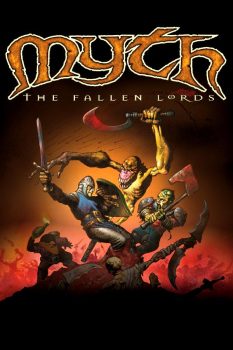 So….one of the rabbit holes I periodically jump down is Total War: Warhammer II. That’s easily my favorite in the Total War series (I played a boatload of TW: I as well. You can use units from I, in II, in some campaigns, which increases the utility of the first game. I appreciate that.
So….one of the rabbit holes I periodically jump down is Total War: Warhammer II. That’s easily my favorite in the Total War series (I played a boatload of TW: I as well. You can use units from I, in II, in some campaigns, which increases the utility of the first game. I appreciate that.
I struggle with the first 15-or-so turns, and frequently abandon a new game, pick another faction, and try again. I like playing different factions, so that’s fine. Also, I often plateau around 70-75 turns, and start a new game as well.
I reinstalled TW: I and II last month and have been playing again. It’s been fun. After a half-dozen false starts, I’m having one of my most successful games leading a chivalry-based, Middle Ages-type faction (WH is a fantasy world, with elves, orcs, beastmen, etc). And I realized I was applying the principles that George Washington advised America about in his famous Farewell Address. Being a Constitutional Convention of 1787 wonk, I’m reasonably familiar with Washington, who presided over the Convention.
However, as I type this right now, it is obvious that such a post is definitely not gonna be ready for tomorrow morning (which would be when this one went live – Monday the 3rd.
And let met tell you, there are multiple elements of Washington’s Address that apply today. Including about people in the country undermining it by pitting one group against another. And that applies to quite a few groups/people…
So instead, we’re talking about a few Real Time Strategy (RTS) games I’ve played over the years. The basic definition of RTS is games that don’t move forward incrementally in turns, but move along in ‘real time.’
The old Warcraft: Orcs and Humans was the first one I really got into, way back in the mid-nineties, which was the birth era of RTS. I never played World of Warcraft, but I ate up the first two Warcraft games (Starcraft followed, and was also immensely popular, but I never tried that one).
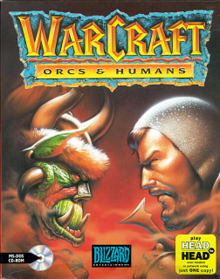 I think I played Command and Conquer for a very short time, but I don’t really remember that. It was kind of a high point of that style of RTS.
I think I played Command and Conquer for a very short time, but I don’t really remember that. It was kind of a high point of that style of RTS.
Age of Empires came along a few years later, and I played the heck out of that, as well as Age of Empires II. Both got rehabs and updates, and AoE II is totally playable. A buddy of mine is still addicted to the new version. AoE II is a classic which is still growing.
A few years ago, my son and I played a LOT of Star Wars: Empire at War, which came out in 2006. It swapped out resource gathering with a point-of-control system. It is a ton of fun.
For a Tolkien fan, Battle for Middle Earth I was fantastic. I didn’t play II, which I’ve heard was even better. It is possible to find an updated version of II that runs on modern Windows, but I haven’t managed to make that happen. Might really dial in on it sometime, and try. I was REALLY good for Tolkien fans.
There was a decent-enough D&D knock-off version, Dragonshard, in 2005. It mixed in a bit more RPG elements. I played it some, but Battle for Middle Earth was definitely superior.
Sid Meier is possibly the greatest game-creator of all time, with Civilization one of the most influential and popular games ever. His first game after leaving MicroProse was Sid Meier’s Gettysburg!, and it is a terrific Civil War game. You need to be totally immersed in it, but it’s a great Civil War game. Sid Meier’s Antietam! was similar.
And Railroad Tycoon was the standard railroad sim for a long time. 2018’s Railway Empire was a blast, and I have played that a fair amount.
I think it’s definitely cool that RTS is not limited to combat games (there are RTS World War games as well – I’ve only dabbled in those). Tropico, and Sim City, are two examples of RTS-type city-building games. I played a LOT of the first Tropico – that’s a fun game.
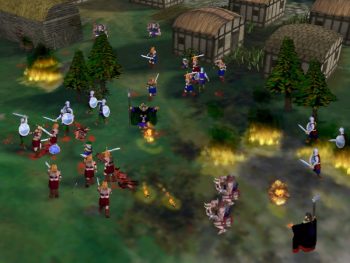 The only game that rivals TW:WH II for me, came out WAAAY back in 1997. Man, how can that be almost 30 years ago? I feel really old. But Bungie’s Myth: The Fallen Lords, was a terrific achievement. Story and game-play: just the EXPERIENCE.
The only game that rivals TW:WH II for me, came out WAAAY back in 1997. Man, how can that be almost 30 years ago? I feel really old. But Bungie’s Myth: The Fallen Lords, was a terrific achievement. Story and game-play: just the EXPERIENCE.
The land has fallen under almost total control of the forces of light (The Fallen Lords), led by Balor. The Light is led by powerful sorcerers, and you control an elite army unit called The Legion. You need to overcome The Fallen Lords. The developers cited Mel Gibson’s Braveheart, and Glen Cook’s fantastic The Black Company (you surely read my interview with him, here), as inspirations.
It is actually an RTT (Real Time Tactical) game. No resource gathering, no settlement growing. You don’t develop skill trees and build up unit strength. You start each scenario with your force fully ready to go.
It was essentially a unit-based combat game (NOT turn-based). But playing it still felt like a combat-based RTS, back then. Terrain and weather impacted things, which was neat at the time. You controlled units (usually in groups) to win battles. And no game I ever played had friendly fire as such a part of it. Those dwarven Molotov cocktails could take out your own forces.
Project Magma has converted the game to operate on current Windows systems. If I could focus in on it, I would probably go through the multiple steps and play this again. But TW: WH I, and II, are already installed, ready to play, and twenty years newer. Still, Myth Lords is one I’m tempted to try.
There was a sequel, and a prequel. But that original game is a masterpiece.

Bob Byrne’s ‘A (Black) Gat in the Hand’ made its Black Gate debut in 2018 and has returned every summer since.
His ‘The Public Life of Sherlock Holmes’ column ran every Monday morning at Black Gate from March, 2014 through March, 2017. And he irregularly posts on Rex Stout’s gargantuan detective in ‘Nero Wolfe’s Brownstone.’ He is a member of the Praed Street Irregulars, founded www.SolarPons.com (the only website dedicated to the ‘Sherlock Holmes of Praed Street’).
He organized Black Gate’s award-nominated ‘Discovering Robert E. Howard’ series, as well as the award-winning ‘Hither Came Conan’ series. Which is now part of THE Definitive guide to Conan. He also organized 2023’s ‘Talking Tolkien.’
He has contributed stories to The MX Book of New Sherlock Holmes Stories — Parts III, IV, V, VI, XXI, and XXXIII.
He has written introductions for Steeger Books, and appeared in several magazines, including Black Mask, Sherlock Holmes Mystery Magazine, The Strand Magazine, and Sherlock Magazine.
The Fiction of Edgar Rice Burroughs, Part II: Tarzan and The Land That Time Forgot
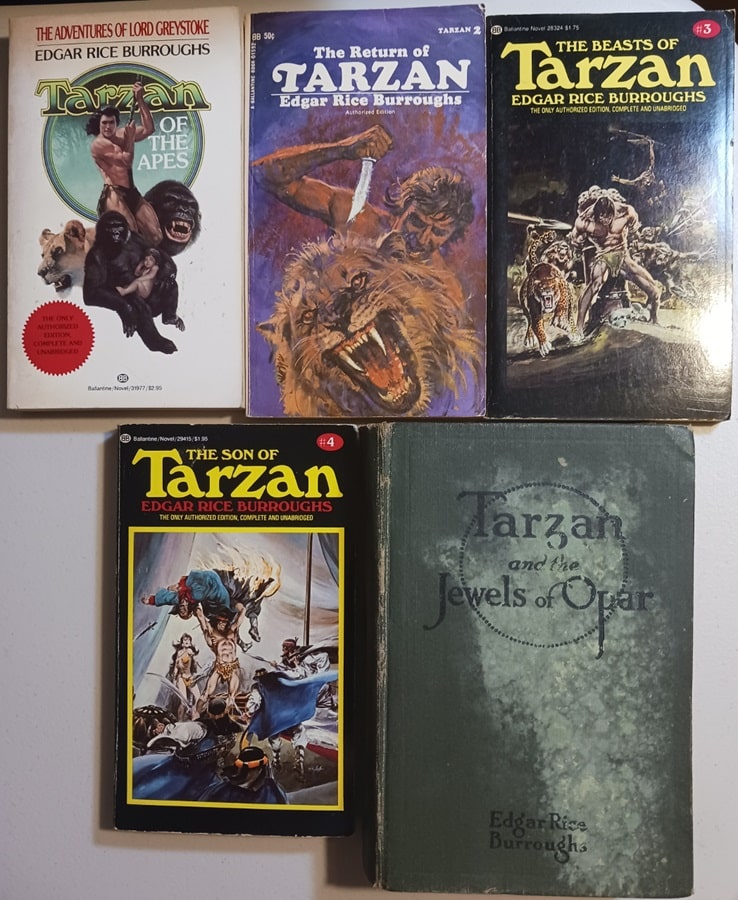 Tarzan novels #1 – #5 : Tarzan of the Apes, The Return of Tarzan, The Beasts of Tarzan, and The Son of Tarzan (Ballantine Books, December 1983, April 1969, April 1975, April 1975), and Tarzan and the Jewels of Opar (A.L. Burt, 1919). Covers by Charles Ren, Bob Abbett, Neal Adams, and Neal Adams.
Tarzan novels #1 – #5 : Tarzan of the Apes, The Return of Tarzan, The Beasts of Tarzan, and The Son of Tarzan (Ballantine Books, December 1983, April 1969, April 1975, April 1975), and Tarzan and the Jewels of Opar (A.L. Burt, 1919). Covers by Charles Ren, Bob Abbett, Neal Adams, and Neal Adams.
Any discussion of Sword & Planet fiction needs to start with Edgar Rice Burroughs and his book A Princess of Mars. I discussed that series extensively — and also his other S&P series, the Carson of Venus books, and his Moon Maid trilogy, which is partially S&P — in Part I of this series.
But, of course, ERB wrote many other books that have no connection to S&P fiction. They are still very good stories, though, entertaining and worth discussing. I thought I’d cover some in my next series of posts.
Most readers I know discovered ERB through the character of Tarzan. The first ERB I read was A Princess of Mars, but the second one was Tarzan Lord of the Jungle. The book was an old hardback, with no dust cover. The cover was generally brown with the title embossed on it. I found it among my sister’s books. She was the only other big reader in my family. I don’t know how she came upon it. I still remember some fifty+ years later the opening scene, with Tarzan dozing on the back of Tantor the elephant. And before long Tarzan finds a lost civilization of crusaders in deepest Africa. And there was swashbuckling.
[Click the images for Tarzan-sized versions.]
 Tarzan #6 – #11: Jungle Tales of Tarzan, Tarzan the Untamed, Tarzan the Terrible, Tarzan and the Golden Lion, Tarzan and the Ant Men, and Tarzan, Lord of the Jungle (Ballantine Books, 1975-1976, and 1969). Covers by Neal Adams, Boris Vallejo, and Bob Abbett.
Tarzan #6 – #11: Jungle Tales of Tarzan, Tarzan the Untamed, Tarzan the Terrible, Tarzan and the Golden Lion, Tarzan and the Ant Men, and Tarzan, Lord of the Jungle (Ballantine Books, 1975-1976, and 1969). Covers by Neal Adams, Boris Vallejo, and Bob Abbett.
I’ve always liked best the Tarzan tales where he discovers a lost race. There were a lot of them in Africa, apparently. That copy of the book fell apart and I eventually replaced it with a paperback. When I started buying the Tarzan books I couldn’t afford to get them all at once, and I also picked up ones here and there from used bookstores or book sales. Most of the ones I found were from the Ballantine editions, many with great Boris Vallejo covers, which became my “mind’s eye” image of Tarzan.
Above I show the first 11 books in my collection. All but Jewels of Opar are from Ballantine, published between 1963 and 1973 it looks like. Covers are varied.
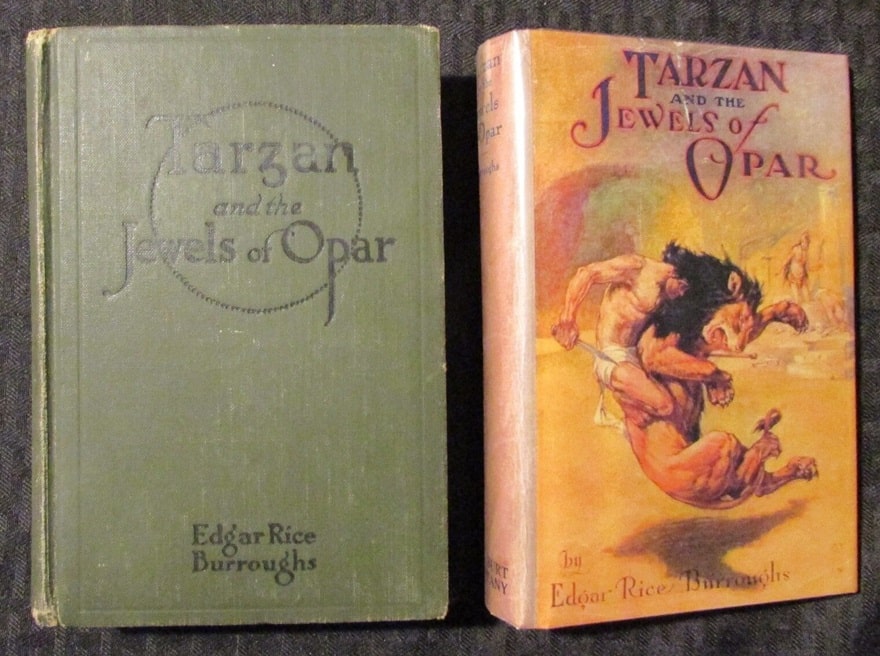 Tarzan and the Jewels of Opar (A.L. Burt Company, 1919). Cover by J. Allen St. John
Tarzan and the Jewels of Opar (A.L. Burt Company, 1919). Cover by J. Allen St. John
Here’s the list of cover artists.
Tarzan of the Apes; Charles Ren
The Return of Tarzan; Robert Abbett
Beasts of, Son of, Jungle Tales of; Neal Adams
Untamed, Terrible, Golden Lion, Ant Men; Boris Vallejo
Lord of the Jungle; Robert Abbett
My copy of Tarzan and the Jewels of Opar was published in 1919 by A. L. Burt Company. It lacks a dust cover, but above is a picture I took off the internet of what it apparently looked like. The beautiful cover is by J. Allen St. John (1872 – 1957), who was an incredible artist.
 The 24 Tarzan novels and collections published in sequence in paperback by Ballantine Books, 1975 – 1977. Covers by Neal Adams and Boris Vallejo
The 24 Tarzan novels and collections published in sequence in paperback by Ballantine Books, 1975 – 1977. Covers by Neal Adams and Boris Vallejo
Burroughs wrote 26 books about Tarzan, but typically only 24 are counted as part of the main sequence. The two odd numbers out are The Tarzan Twins, which I have, and Tarzan and the Tarzan Twins with Jad-Bal-Ja The Golden Lion, which I’ve never seen. These are novellas written for young readers. They were published separately but were collected together at one point, although I can’t find a copy of that publication.
The copy of The Tarzan Twins that I have is from Wildside Press with a cover by Douglas Grant. It’s the only ERB book I don’t like and doesn’t even seem like ERB to me. ERB’s work was already accessible to young readers. Most people I know read them pretty young, so for him to “try” to write down to kids just didn’t work — at least to me.
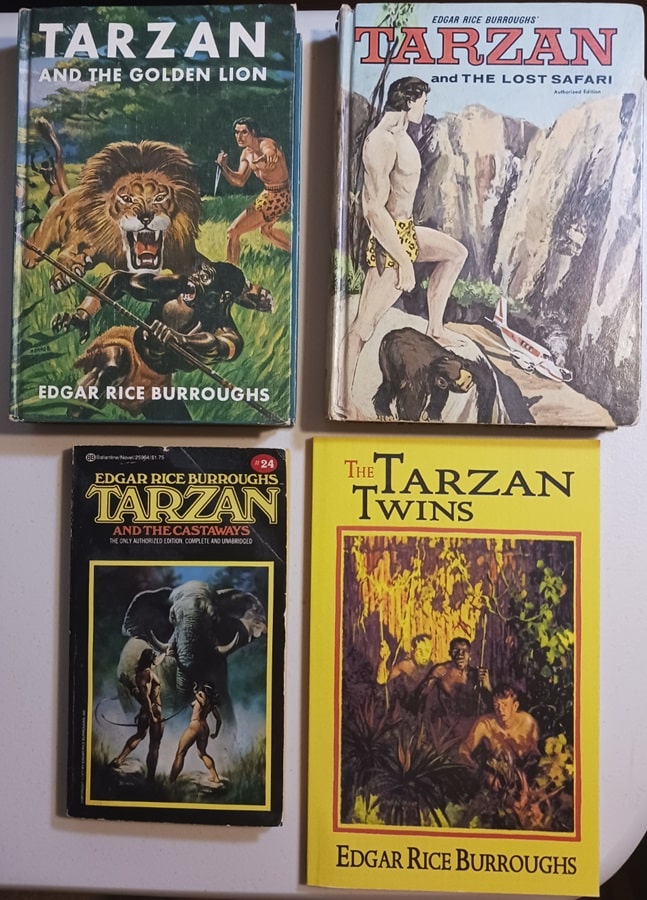 Tarzan and the Golden Lion (Grosset & Dunlap, 1949), Tarzan and the Lost Safari (Whitman Publishing, January 1, 1966, author unknown), Tarzan and the Castaways (Ballantine, September 1977), and The Tarzan Twins (Wildside Press, September 14, 2005). Covers by C. Edmund Monroe, Jr., Tony Sgroi, Boris Vallejo, and Douglas Grant.
Tarzan and the Golden Lion (Grosset & Dunlap, 1949), Tarzan and the Lost Safari (Whitman Publishing, January 1, 1966, author unknown), Tarzan and the Castaways (Ballantine, September 1977), and The Tarzan Twins (Wildside Press, September 14, 2005). Covers by C. Edmund Monroe, Jr., Tony Sgroi, Boris Vallejo, and Douglas Grant.
Overall, the Tarzan series is certainly not my favorite among ERB’s work anyway. They’re actually fairly low on my list of ERB favorites, although — don’t get me wrong — still very good. A ranking of my favorite series would be John Carter, Moon Maid, Carson of Venus, Land that Time Forgot, and Pellucidar, with Tarzan coming after that. Some of my favorite standalones would be The Outlaw of Torn, The Mad King, and I Am A Barbarian.
The Tarzan tales were almost certainly influenced by Rudyard Kipling’s jungle book tales of Mowgli, the wild boy of the forest — which in turn was influenced by some true reports from the mid-1800s of children in India being raised by wolves. ERB may have been directly aware of those same tales as well, and likely knew of the “Wild Boy of Aveyron,” who, around 1800, was found living in the wilds in France. The French feral child was named Victor by one of his “rescuers.” Unlike Tarzan, he never really learned to speak, although he apparently understood some language.
 Tarzan #12 – #17: Tarzan and the Lost Empire and Tarzan at the Earth’s Core (Ace Books, November 1962 and March 1963), and Tarzan the Invincible, Tarzan Triumphant, Tarzan and the City of Gold, and Tarzan and the Lion Man (Ballantine Books, November 1975). Covers by Frank Frazetta and Neal Adams.
Tarzan #12 – #17: Tarzan and the Lost Empire and Tarzan at the Earth’s Core (Ace Books, November 1962 and March 1963), and Tarzan the Invincible, Tarzan Triumphant, Tarzan and the City of Gold, and Tarzan and the Lion Man (Ballantine Books, November 1975). Covers by Frank Frazetta and Neal Adams.
Above and below are the remaining Tarzan book pictures from my collection. The Ace copy of Lost Empire with the Frazetta cover that looks like it was inspired by Roy Krenkel Jr’s work is a real prize. I also have an Ace copy of Tarzan at the Earth’s Core, which also ties into ERB’s Pellucidar series, with a wonderful Frazetta cover.
The rest of my regular series are all Ballantine, with the following cover artists.
Invincible, Triumphant, City of Gold, Lion Man, Leopard Men; Neal Adams
Quest, Forbidden City, Magnificent, Foreign Legion, Madman, Castaways; Boris Vallejo
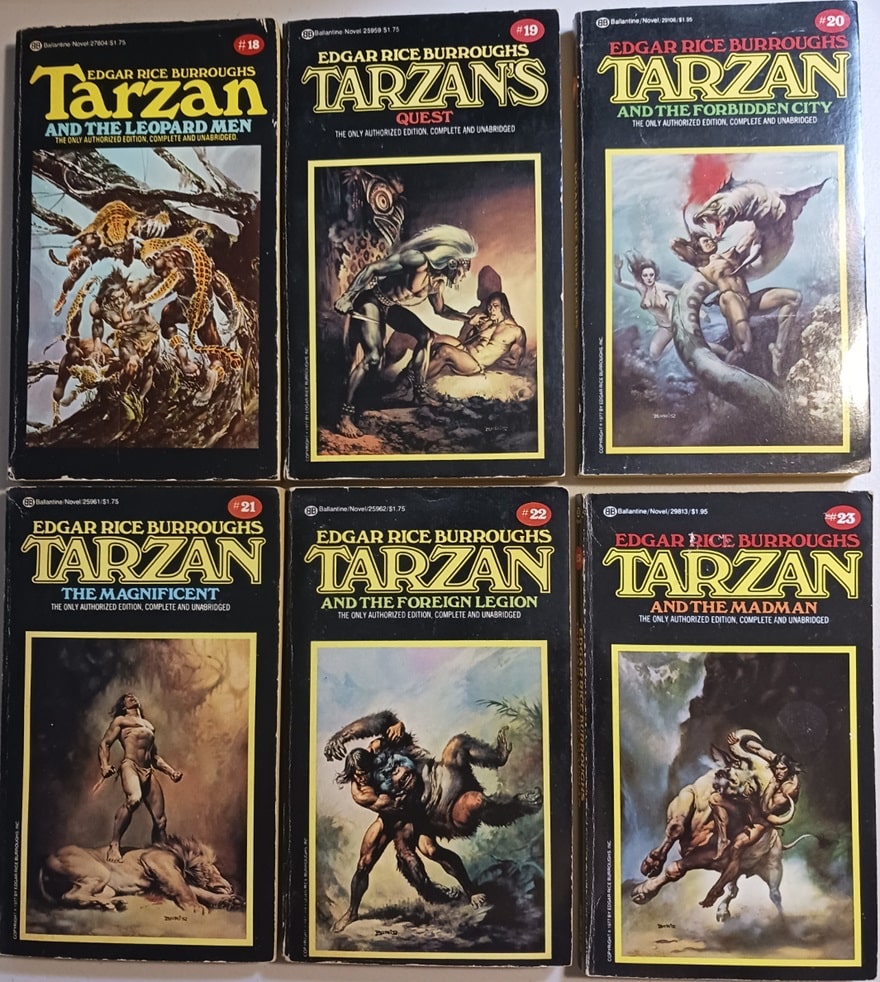 Tarzan #18 – #23: Tarzan and the Leopard Men ((Ballantine Books, November 1975, cover by Neal Adams), and Tarzan’s Quest, Tarzan and the Forbidden City, Tarzan the Magnificent, Tarzan and the Foreign Legion, and Tarzan and the Madman (Ballantine Books, September 1977, covers by Boris Vallejo).
Tarzan #18 – #23: Tarzan and the Leopard Men ((Ballantine Books, November 1975, cover by Neal Adams), and Tarzan’s Quest, Tarzan and the Forbidden City, Tarzan the Magnificent, Tarzan and the Foreign Legion, and Tarzan and the Madman (Ballantine Books, September 1977, covers by Boris Vallejo).
My second copy of Tarzan and the Golden Lion is from Grosset & Dunlap and clearly looks targeted toward younger readers with that cover (see above) — which is pretty cringeworthy for moderns. Not sure when it was published or who the cover artist might be.
Tarzan and the Lost Safari is adapted from the Tarzan movie of that same name. It was published by Whitman and doesn’t list an author, although I’ve seen Frank Castle’s name attached to it. I’ve seen this book for sale as by “Edgar Rice Burroughs.” It’s not. It’s closer to the movie Tarzan than to ERB’s creation. I didn’t find it very entertaining.
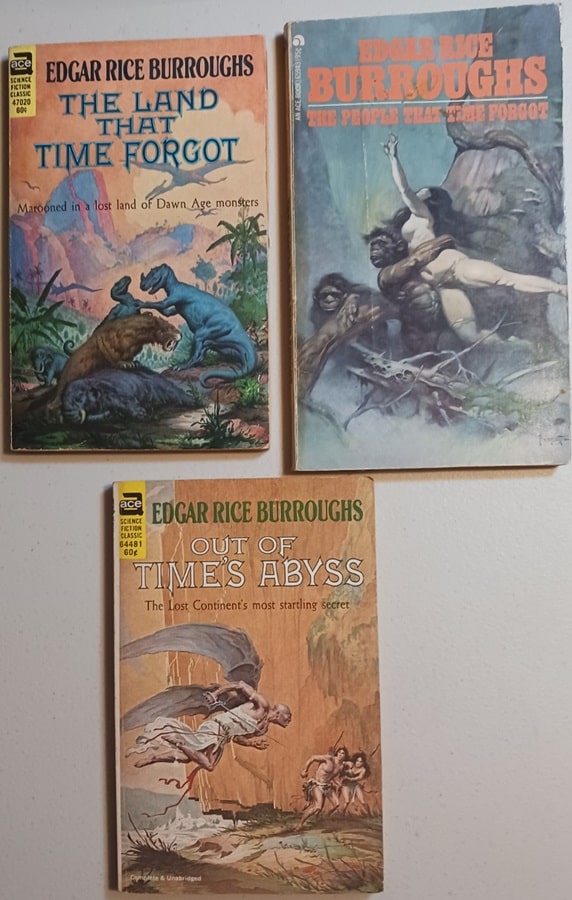 Three novels of The Lost Continent by Edgar Rice Burroughs: The Land That Time Forgot, The People That Time Forgot, and Out of Time’s Abyss (Ace Books, 1963, January 1973, and October 1963). Covers by Roy Krenkel, Jr, Frank Frazetta, and Roy Krenkel, Jr.
Three novels of The Lost Continent by Edgar Rice Burroughs: The Land That Time Forgot, The People That Time Forgot, and Out of Time’s Abyss (Ace Books, 1963, January 1973, and October 1963). Covers by Roy Krenkel, Jr, Frank Frazetta, and Roy Krenkel, Jr.
I personally don’t believe that ERB has been well served by the film and TV industries. I may be in the minority here but I find the early Tarzan movies to be virtually unwatchable. They seem to have very little to do with ERB’s characterization of Tarzan. The first Tarzan movie I actually liked was Greystoke: The Legend of Tarzan, starring Christopher Lambert. It still wasn’t the Tarzan I knew from the books but they made an effort to capture some of the character’s origins. I also liked most of the 2016 Legend of Tarzan, with Alexander Skarsgard, who I believe captured the essence of the character better than any previous Tarzan.
I generally liked the John Carter of Mars film, although they made changes that weren’t needed, but my favorite ERB adaptations are definitely a couple of B-movies starring Doug McClure. I’m talking about The People that Time Forgot, and The Land that Time Forgot. I’ve given these — especially the first one — frequent rewatches. Although the special effects are pretty awful by modern standards, the spirit of ERB’s stories shine through, the mystery and the exotic.
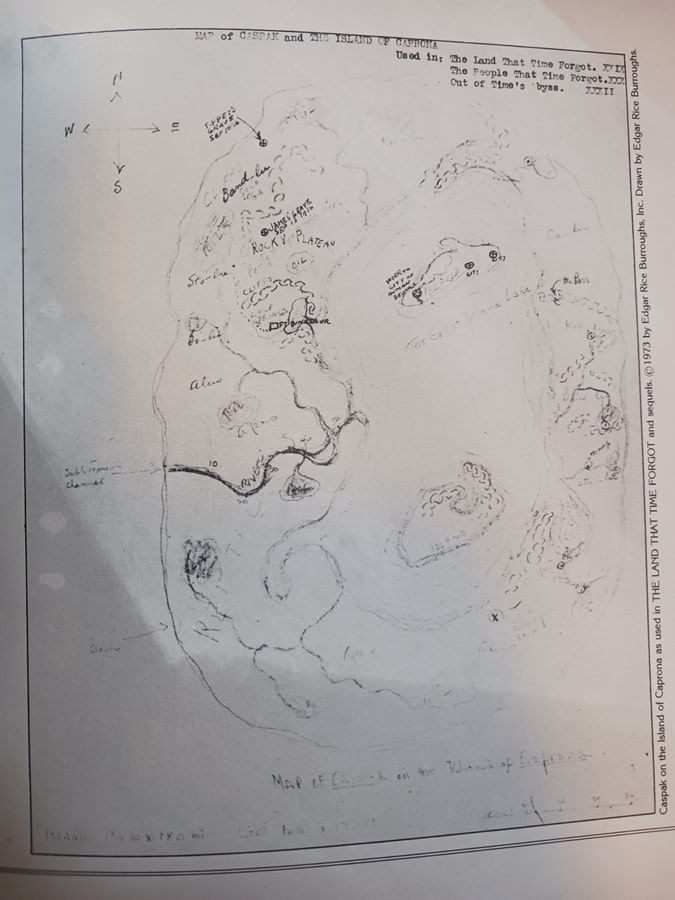 A map of Caprona, the Land that Time Forgot, from An Atlas of Fantasy by J. B. Post (Ballantine Books, 1979)
A map of Caprona, the Land that Time Forgot, from An Atlas of Fantasy by J. B. Post (Ballantine Books, 1979)
Of course, I loved the trilogy that spawned these movies — The Land that Time Forgot, The People that Time Forgot, and Out of Time’s Abyss. I thought Doug McClure did a good job with the character of Bowen Tyler, who becomes the first American to set foot on Caprona, a lost world near Antarctica where time seems to have stopped and dinosaurs still survive. There’s also a deep mystery about how things “evolve” on Caprona, though I won’t give it away.
Above are the three copies I have, all from Ace. Frazetta did the cover for The People while the other two are by Roy Krenkel, Jr. I’m also including a map of Caprona featured in An Atlas of Fantasy.
More on Burroughs next time.
Charles Gramlich administers The Swords & Planet League group on Facebook, where this post first appeared. His last article for Black Gate was The Fiction of Edgar Rice Burroughs, Part I: Sword and Planet.
The Intersection of Hobbies: Dungeons & Dragons, John Eric Holmes, and Tarzan
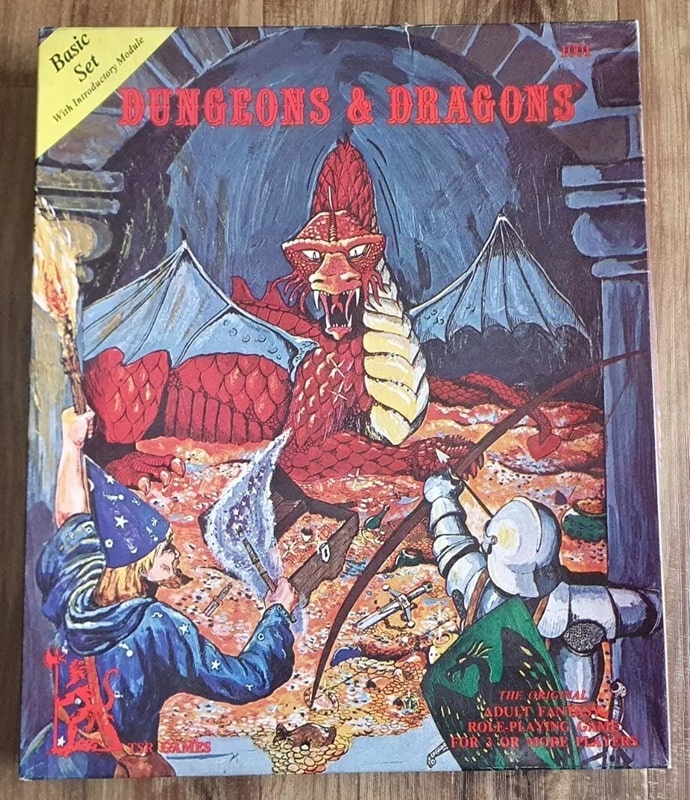 Dungeons & Dragons Basic Set by John Eric Holmes, based on Dungeons & Dragons by Gary Gygax and Dave Arneson (TSR Games, 1977). Cover by David Sutherland
Dungeons & Dragons Basic Set by John Eric Holmes, based on Dungeons & Dragons by Gary Gygax and Dave Arneson (TSR Games, 1977). Cover by David Sutherland
There are many intersections between my favorite hobby (which is also my line of work) and my favorite fiction. One of these intersections is represented by Dr. John Eric Holmes and the fiction of Edgar Rice Burroughs.
When I was a youth, the first Dungeons & Dragons set that I owned was edited by Dr. Holmes. That “basic” set served as the foundation to my understanding of all things D&D. Now, this was in 1981, when I was in the fifth grade. This was also the year in which I was devouring Tarzan novels, written by Edgar Rice Burroughs. My keen interest in Tarzan was fueled by the CBS Saturday morning cartoon, Tarzan, Lord of the Jungle.
[Click the images for Tarzan-sized versions.]
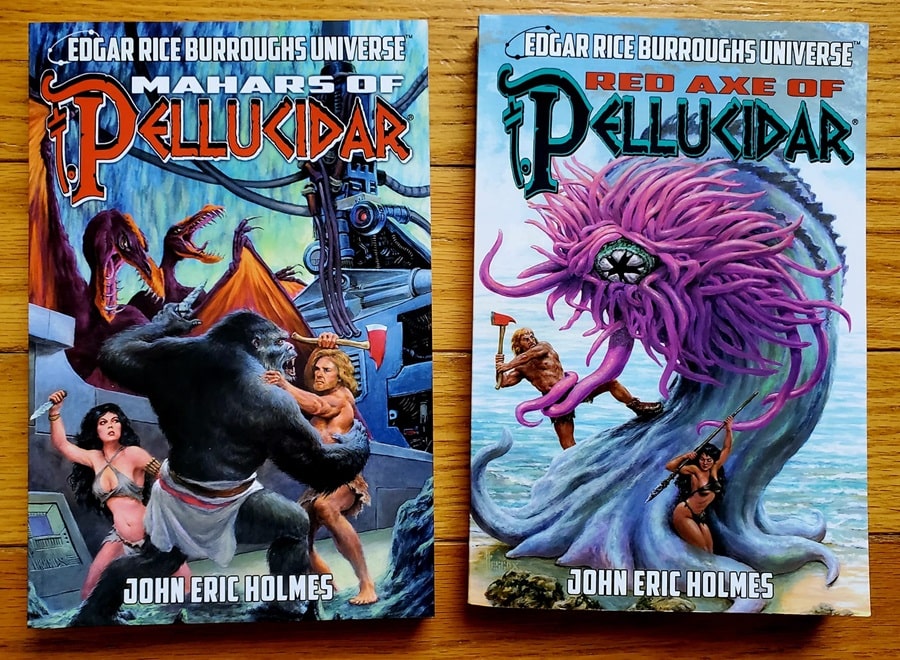 Pellucidar novels by John Eric Holmes: Mahars of Pellucidar and Red Axe of Pellucidar (Edgar Rice Burroughs, Inc., September 6, 2022). Covers by Richard Hescox
Pellucidar novels by John Eric Holmes: Mahars of Pellucidar and Red Axe of Pellucidar (Edgar Rice Burroughs, Inc., September 6, 2022). Covers by Richard Hescox
As I got older, I delved into other works by Burroughs, such as the Barsoom, Amtor, and Pellucidar stories. It wasn’t until recent years that I learned that Dr. Holmes had written two Pellucidar novels himself, the first of which was published in his lifetime, the other which was not: Mahars of Pellucidar and Red Axe of Pellucidar.
I am looking forward to reading these two books soon, probably spaced between my Zelazny readings. It’s nice to see that each of these books includes a foreword by Chris Holmes, one of Dr. Holmes’ children, whom I have had the pleasure to speak with several times at North Texas RPG Con.
 The complete Tarzan novels and collections by Edgar Rice Burroughs, published in paperback by Ballantine Books, 1975 – 1977. Covers by Neal Adams and Boris Vallejo
The complete Tarzan novels and collections by Edgar Rice Burroughs, published in paperback by Ballantine Books, 1975 – 1977. Covers by Neal Adams and Boris Vallejo
When I was young, my first exposure to Tarzan, created by Edgar Rice Burroughs, was the 1966 Tarzan TV series, starring Ron Ely. This was followed by the 1976–1980 animated series, Tarzan, Lord of the Jungle, which really captured my imagination.
I can still hear my brother Bob doing his “Bolmangani” voice from that cartoon. (The Bolmangani were evil gorilla-men that Tarzan often faced.) The show was excellent, and I particularly enjoyed the opening narration:
The jungle: Here I was born; and here my parents died when I was but an infant. I would have soon perished, too, had I not been found by a kindly she-ape named Kala, who adopted me as her own and taught me the ways of the wild. I learned quickly, and grew stronger each day, and now I share the friendship and trust of all jungle animals. The jungle is filled with beauty, and danger; and lost cities filled with good, and evil. This is my domain, and I protect those who come here; for I am Tarzan, Lord of the Jungle!
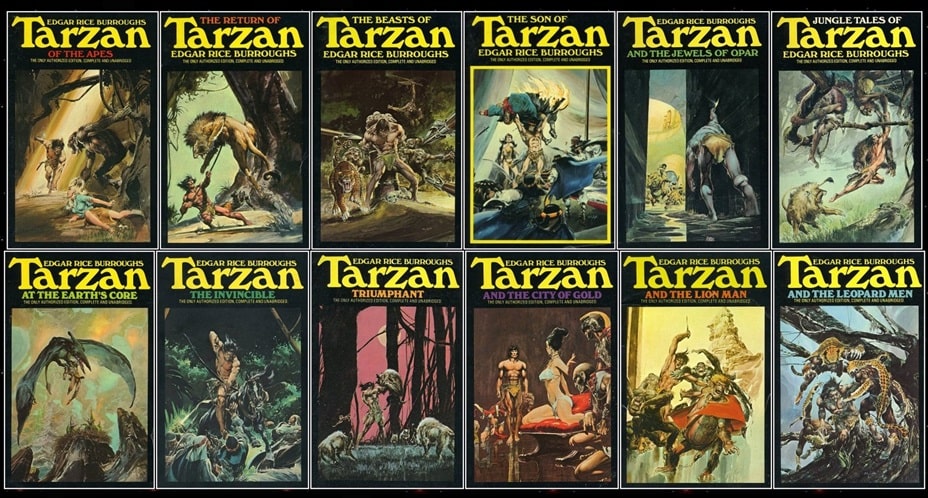 The twelve Neal Adams covers for the Ballantine Tarzan.
The twelve Neal Adams covers for the Ballantine Tarzan.
It was some time around 1981 that I began reading the actual ERB Tarzan books. I was completely enthralled within a few pages. The writing style of ERB was something like I’d never encountered before.
Pictured below is the cover art for the first Tarzan novel that I read, Tarzan of the Apes, published in 1977 by Ballantine Books. It was painted by Neal Adams, whose art was superb. In fact, I am of the opinion that Neal did the finest rendition of Batman to this day.
 Cover art for Tarzan of the Apes by Neal Adams
Cover art for Tarzan of the Apes by Neal Adams
Anyway, the Neal Adams art is what drew me to purchase the first Tarzan book at my local Walden Books. It led me to a lifelong fascination with the incredibly imaginative works of Edgar Rice Burroughs.
In fact, I can open any ERB book to any random page, start reading, and find myself sucked into a world of wonder.
Jeffrey P. Talanian’s last article for Black Gate was Savage Sword of Conan is Back. He is the creator and publisher of the Hyperborea sword-and-sorcery and weird science-fantasy RPG from North Wind Adventures. He was the co-author, with E. Gary Gygax, of the Castle Zagyg releases, including several Yggsburgh city supplements, Castle Zagyg: The East Mark Gazetteer, and Castle Zagyg: The Upper Works. Read Gabe Gybing’s interview with Jeffrey here, and follow his latest projects on Facebook and at www.hyperborea.tv.
Spies, Cowboys, Anarchists, O My: Polostan by Neal Stephenson
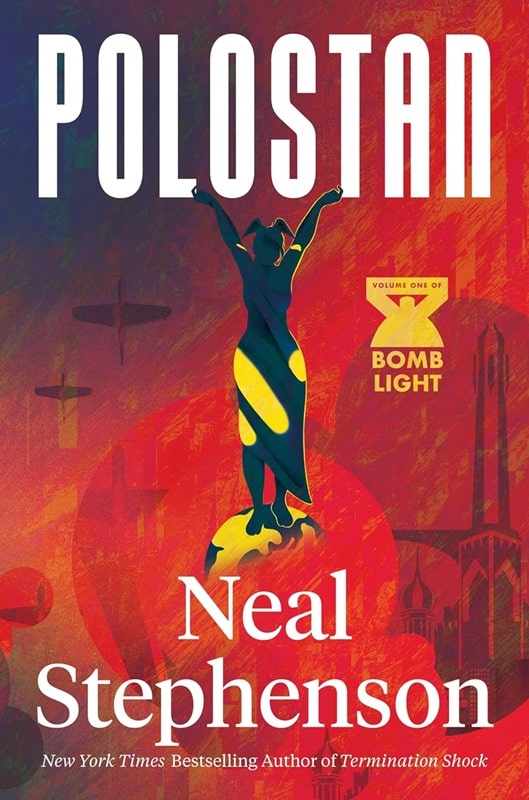
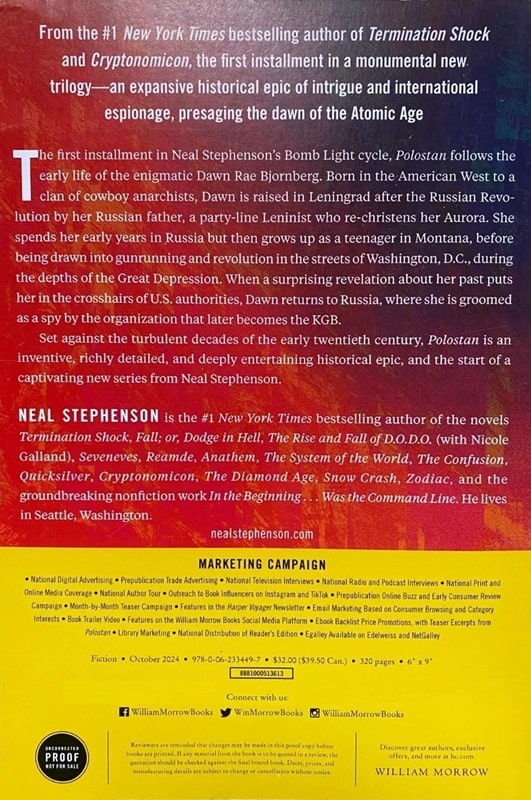
Polostan (William Morrow, October 15, 2024). Cover art uncredited
If, like me, you are a Neal Stephenson fan, you know he has a tendency to get deep into the descriptive weeds. I sometimes imagine his editor suggesting, “Neal, do we really need all this detail?” And then Neal grouchily responds, “If I didn’t think the story needed it, I wouldn’t have written it.”
Case in point from his latest novel, Polostan, a depiction of the 1933 Chicago World’s Fair Century of Progress exhibition where the protagonist, Dawn Rae Bjornberg, also known as Aurora Maximovna Artemyeva, works shilling for a shoe salesman:
She went to the fair early and stayed late, for the work was easy and there were plenty of diversions — that being the point of a fair. Her perambulations soon made her as conversant with the place as if it were an old city…As they were meant to, [the exhibits] drew visitors: 600 Norge salesmen on the B&O from Philly; 176 newsboys on the New York Central from Buffalo; 60 Episcopal bishops; 180 Civilian Conservation Corps workers en route to turpentine camps in the southeast; 100 Minnesota National Guard troops. Paramount Studios executives from Hollywood, Lions from St. Louis, Shriners from Fort Smith…
It goes on like this for quite a while. Do we really need to know that “Five hundred employees of the National Carbon Coated Paper Company of Sturgis, Michigan, arrived on the same train as 270 members of the Jewish Socialist Verband from New York City.” Probably not; it doesn’t further the plot, though it does provide a sort of Proustian vibe.
It’s also a metafictional joke Stephenson tells on himself. After Dawn/Aurora relates her life history to her Soviet inquisitor (which forms a kind of framework to a plethora of narratives, more about that in a second), he remarks, “You’ve been cooperative, if somewhat rambling. But that’s in the nature of your story — you really have been all over the place.”
“All over the place” is also how I’d describe this novel. But in a good way.
Born in 1916, a pivotal time in history when revolution was in the air, Dawn/Aurora’s childhood is split between Montana with her American radical mother and the Soviet Union with her Communist father (hence the American and Russian alter egos). Which makes her an ideal candidate for espionage against one of those countries. But which one is the question.
With an upbringing that includes acquiring equestrian skills, running guns and a fascination with Bonnie and Clyde as well as the Red Woman’s Death Battalion, the attention of then Major George Patton during an encampment of “Bonus Army” protesting World War I veterans in Washington, D.C., an abortion that makes her incapable of further pregnancy (and a matter-of-factly stated no-strings enticement to a prospective lover), and as a captive of con-artist evangelists as well as Soviet secret police OGPU led by the brutal Lavrentiy Beria. She is also witness to a deadly ballon ride by Soviet aeronauts named Elektron and Proton. We’ve already mentioned the Chicago World’s Fair.
But all of that is prologue and epilogue to Dawn’s chance meeting with “Dick,” a boy who impregnates her while on top of an early X-ray machine. Dick is probably Richard Feynman, who assisted in the development of the atomic bomb, but who here is a horny teenager happy to explain to Dawn current thinking in physics about possibly splitting the atom. Which makes her all the more a person of interest to Beria, who Stalin later appoints to head the Soviet atomic program. And which is why this is the first in a planned trilogy called Bomb Light.
Oh, and if you’re curious about what Polostan is supposed to mean, it is coined by British journalist Crisp-Upjohn, whom Aurora is tasked by the the OGPU to compromise, while playing against her during of an exhibition match with the Soviet women’s polo team.
So there is a lot here to unpack. But that Stephenson pulls off in a highly entertaining and brisk way. Because that is what Neal Stephenson does.
What there isn’t is a lot of is pages. While Stephenson is noted for producing doorstops, even for individual books in a series (The Baroque Cycle, for example, adds up to some 3,000 pages across three volumes), Polostan is a mere 303 pages. You might wonder why the author just didn’t produce one big book, other than that genre publishing suffers from a multi-volume series fixation. According to the author, the intent is to focus on a different character in each installment. “As far as the series format is concerned, we made a decision last year to bring it out one normal-sized book at a time, and to configure it in such a way that each volume will focus on one of the main characters. “
Also, Stephenson hasn’t finished writing it. So, there is that.
We wait with bated breath.
David Soyka is one of the founding bloggers at Black Gate. He’s written over 200 articles for us since 2008. His most recent was a review of Playground by Richard Powers.
Goth Chick News: Gushing Over Nosferatu
This is a true story.
Like most young people, the first couple of cars I drove were crap. However, I eventually got to the point in my career when I was able to purchase my first car for love. It was not only a gorgeous little black sports model with a stick shift, a rocking stereo system, and all the bells and whistles, but I also tagged it with my dream “vanity” license plate – NOS4AH2
Aside from indicating I had (and have) the taste in cars of a sixteen-year-old boy, and that my idea of what’s “cool” might be far closer to “geeky” than I care to think about, it shows I have had a long love of the original movie vampire.
When I first told you about Robert Egger’s film Nosferatu in July 2024, the first trailer had just dropped. Not much was known about it other than in the context of its historical 1922 predecessor which was a literal rip off of Dracula, and that Eggar’s movie was a remake.
Eggers’s journey to creating his adaptation of Nosferatu was a culmination of lifelong passion, meticulous research, and a series of professional developments. His fascination with the original 1922 film by F.W. Murnau began in his youth, inspiring him to adapt the story for the stage during high school. This early endeavor ignited his interest in filmmaking and set the foundation for his future projects. Over the years, he dedicated significant time to developing the script, ensuring a deep understanding of vampire lore and the historical context of the original film.
Eggers’s previous works, including The Witch (2015) and The Lighthouse (2019), showcased his talent for crafting atmospheric period pieces, further preparing him for the complex task of reimagining Count Orlok. By 2022, with a refined vision and increased industry clout, Eggers began work in earnest on Nosferatu. He assembled a cast including Bill Skarsgård as the Count, Lily-Rose Depp as Ellen, and Nicholas Hoult as Thomas Hutter.
Skarsgård getting his Orlok on
It was with Christmas giddiness that I went straight to the theater on December 25th to see Nosferatu at the first showing on its opening day. What I saw was cinematic gold worthy of the term “classic horror.” Instead of buckets of blood and cheap jump scares, Eggers served up an atmospheric story that built an ever-mounting dread. Using camera filters that blocked warm colors, the scenes he filmed give the feel of black and white darkness where long shadows hang. Eggers’s dedication to authenticity was evident in his meticulous attention to detail, from set designs inspired by 19th-century landscapes to sourcing period-specific materials for costumes.
Unlike the practical effects in the werewolf films I recently told you about, Egger used practical effects successfully and to the extreme. Word on the Hollywood grapevine is that 5000 live rats were employed to run through the sets and crawl on the actors. While the exact number of actual wolves employed has not been publicly specified, there were at least a dozen. Hoult recounted a particularly intense scene where his character, Thomas Hutter, is pursued by these wolves. He described the experience noting that the wolves were held back on leashes, barking with “death in their eyes.” During one take, Hoult slipped and narrowly escaped through a window as the wolves were released after him.
Though Willem Dafoe as the VanHelsing character, Prof. Albin Eberhart von Franz caught some critic shrapnel for playing himself more than the character, I thought the performances were incredible. Lily-Rose Depp had me mesmerized, one minute the innocent young wife and the next a wonton, demon-possessed bride of the vampire. She made me wonder if dear old dad is proud, or dying of envy.
Skarsgård as Count Orlok however, really brought the magic. Having lost a significant amount of weight and, refusing to have his voice digitally modulated, Skarsgård worked with the Icelandic opera singer Ásgerður Júníusdóttir to lower his vocal range, incorporating Mongolian throat singing into his lines. He also spent up to six hours a day having prosthetic makeup applied to embody a vampiric vision that was truly unique to this film. Skarsgård likened his experience to “conjuring pure evil,” which I truly felt every time he took the screen.
Yes, Eggars really used live rats…
As of last weekend, Nosferatu has made $167M against a $50M production budget, making it a box office success by Hollywood terms. The film is also streaming now, while still appearing in theaters and as of January 24th, a “director’s cut” is available. You know I snagged that and the best thing about it is more screen time for Skarsgård.
Nosferatu has also been nominated for four Oscars: Best Cinematography, Best Make-Up & Hair, Best Costume Design, Best Production Design. I think it will take at least two of these.
So, after a long dry spell I have the opportunity to actually gush over a horror movie and Nosferatu will go down as one of my personal favs.

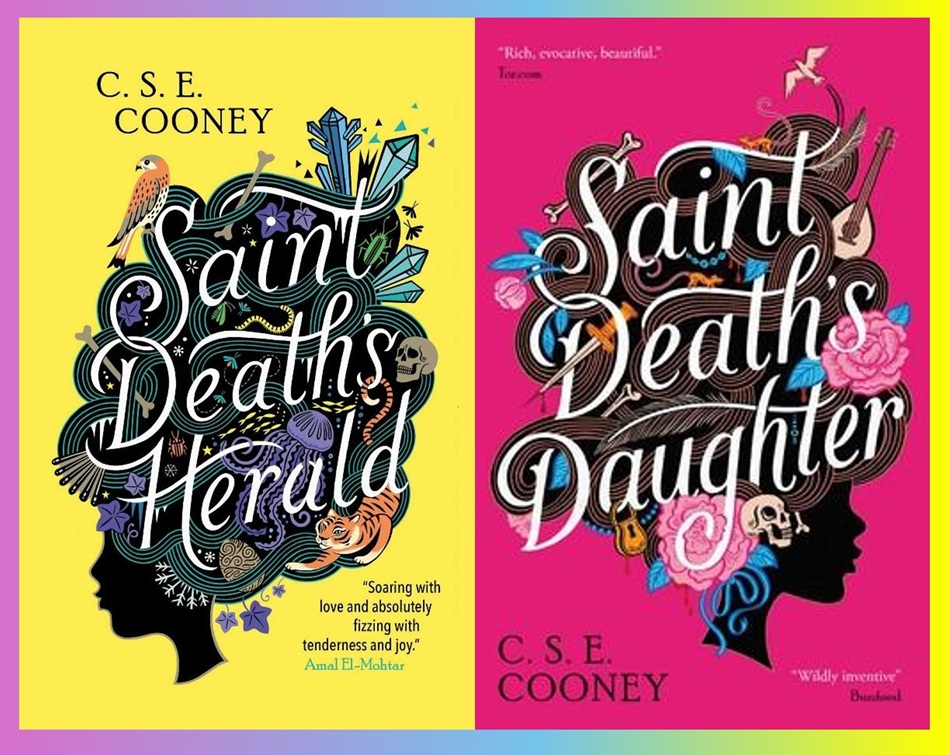
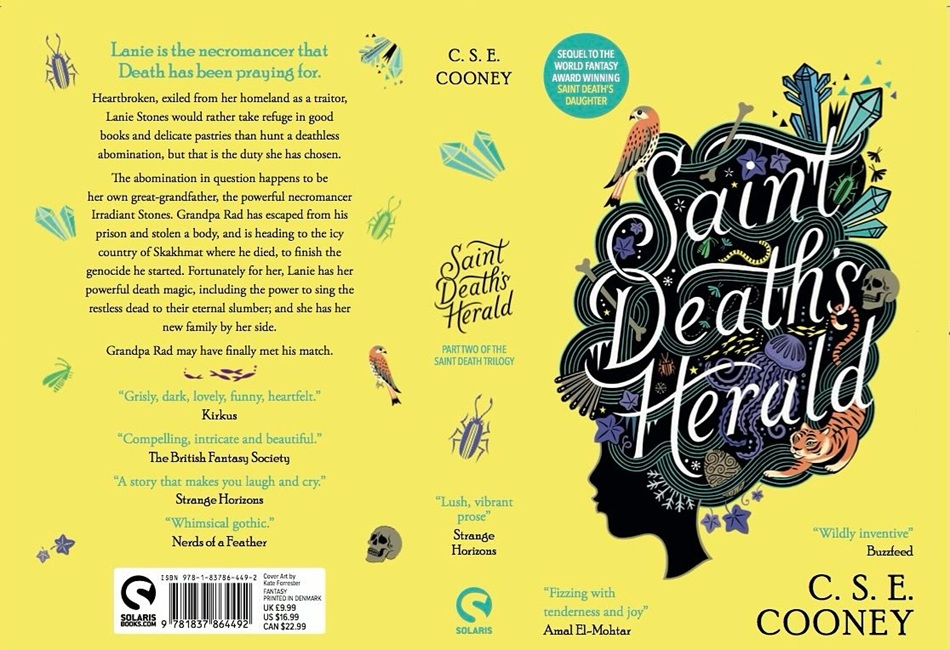
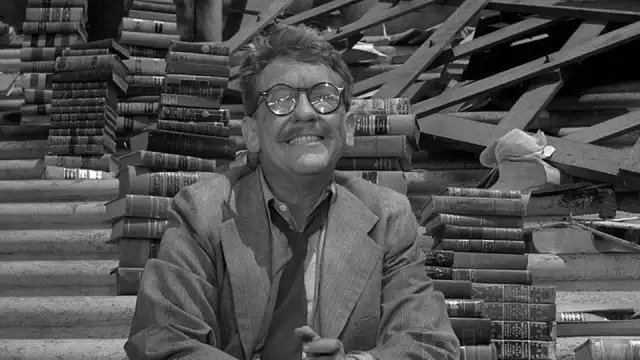
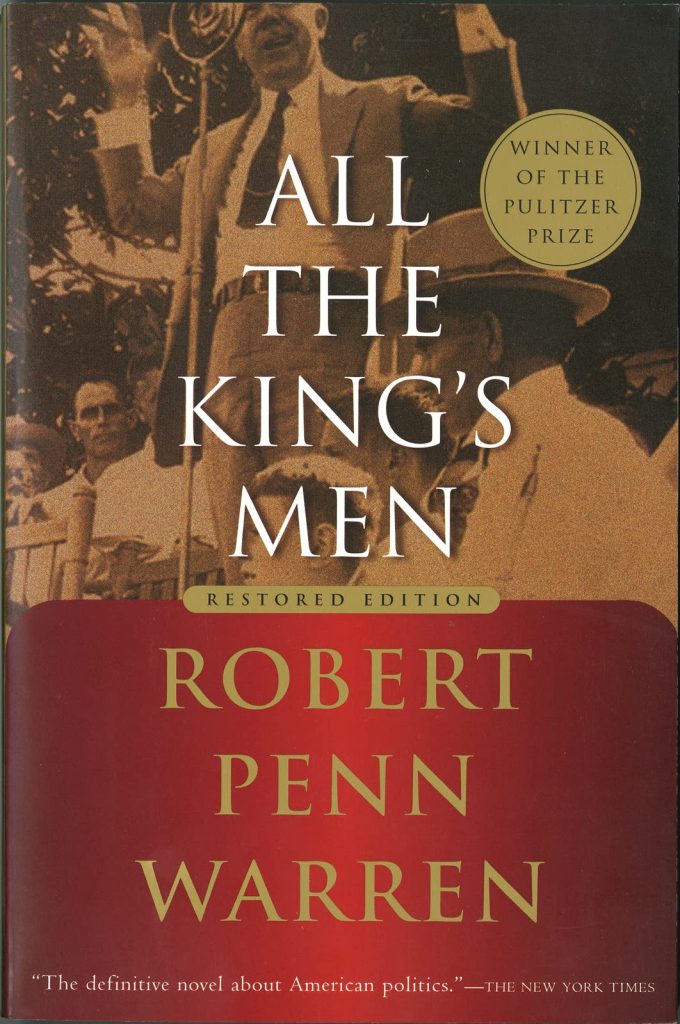

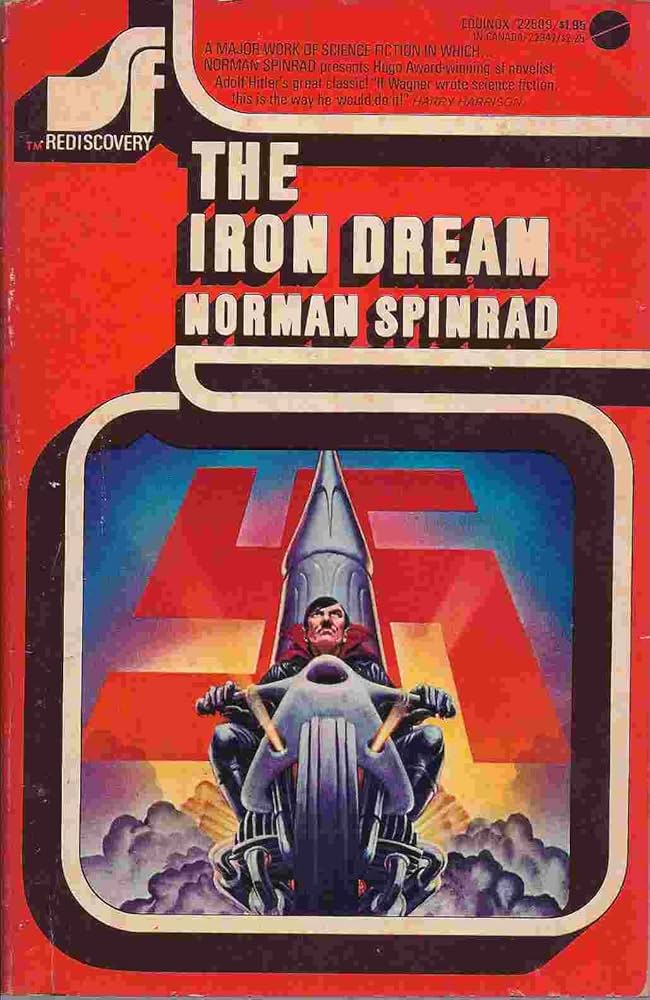

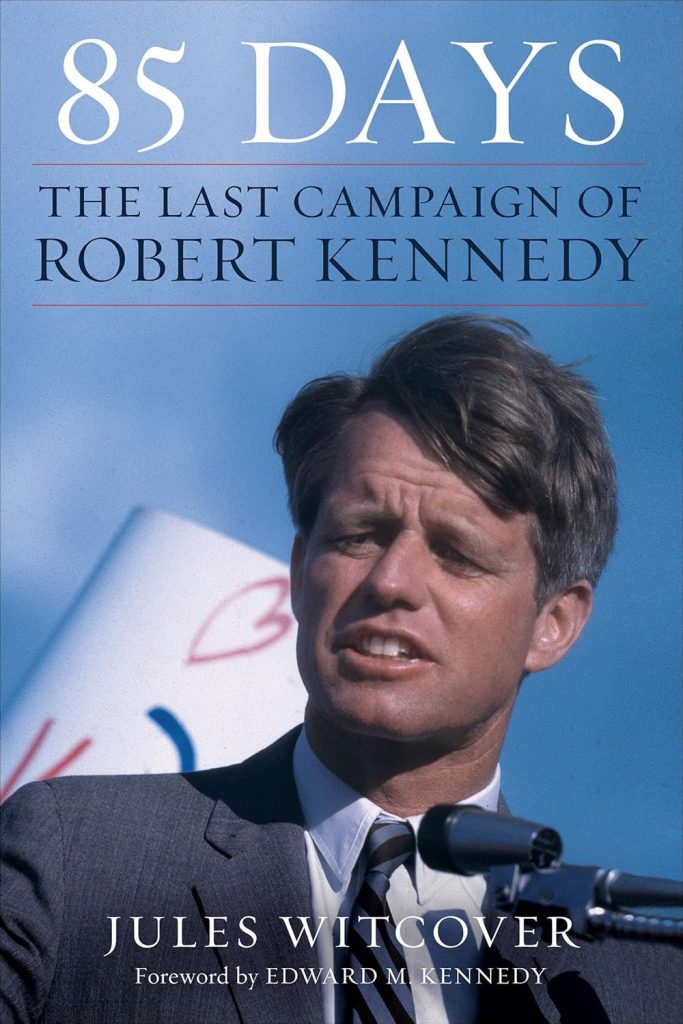
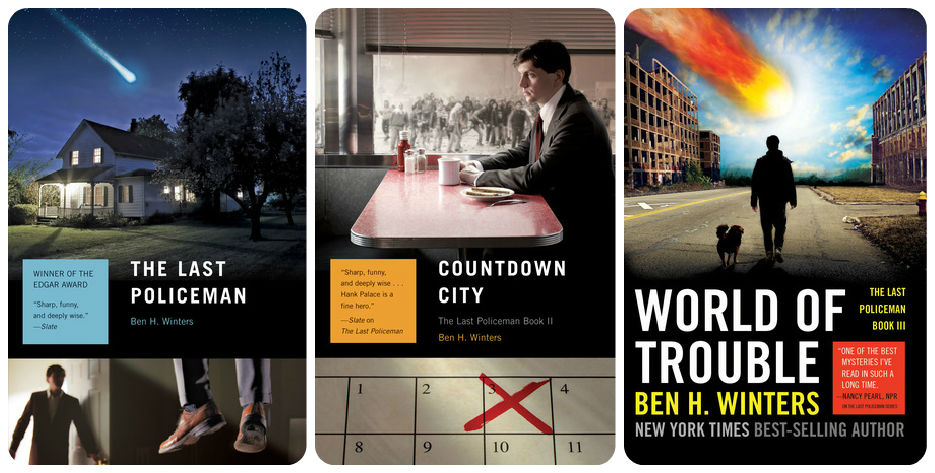
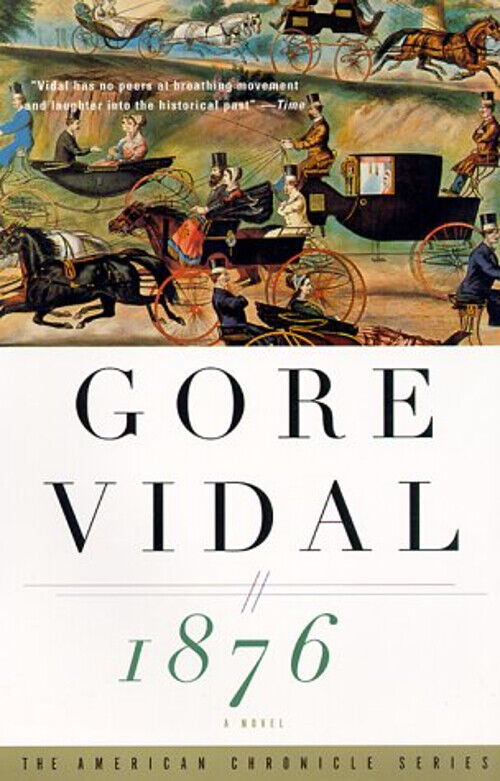
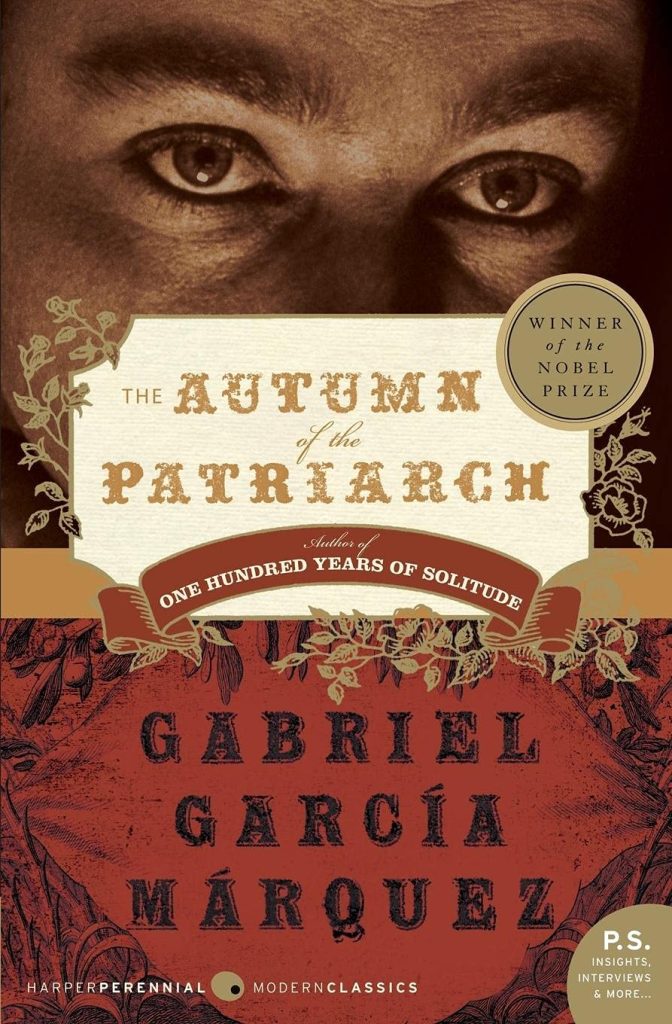
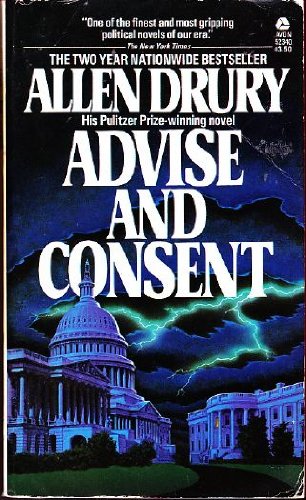
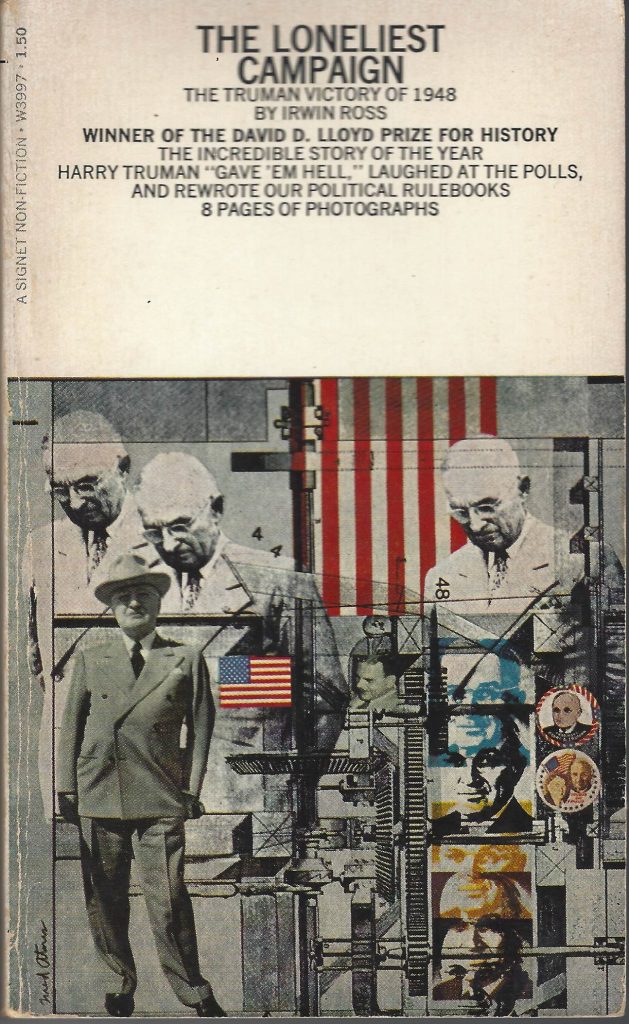
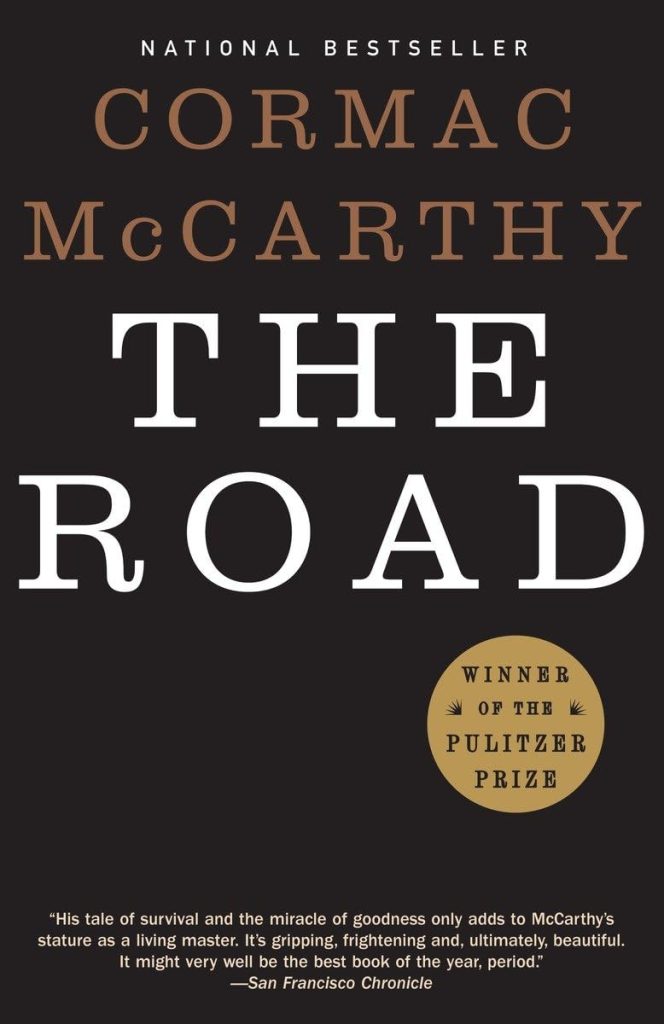
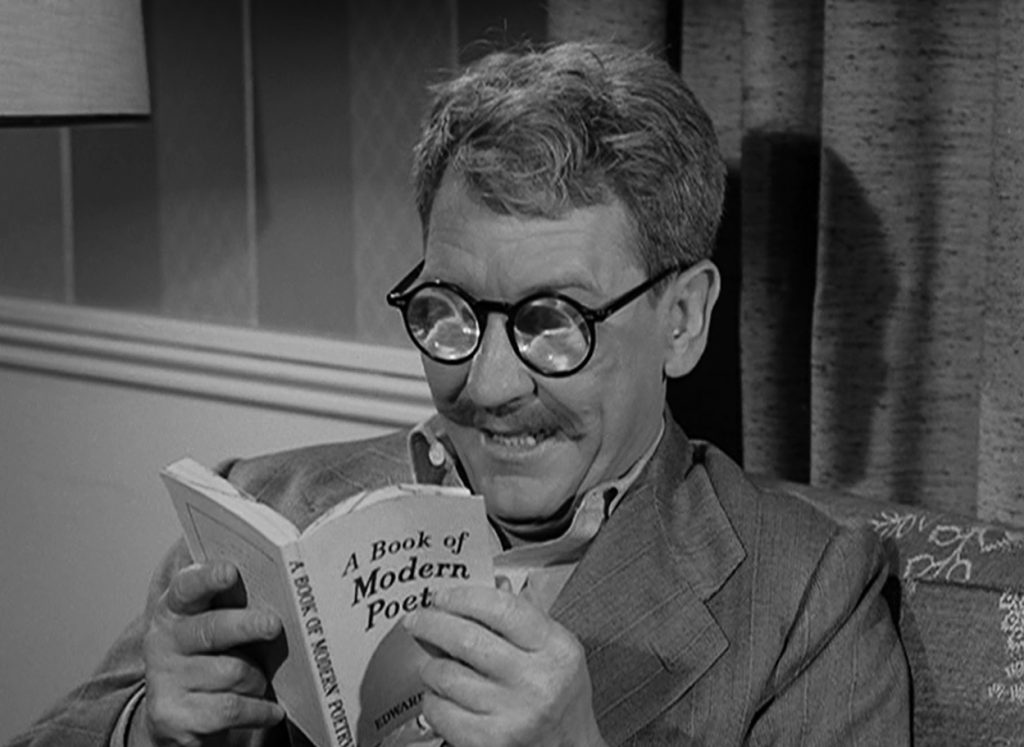

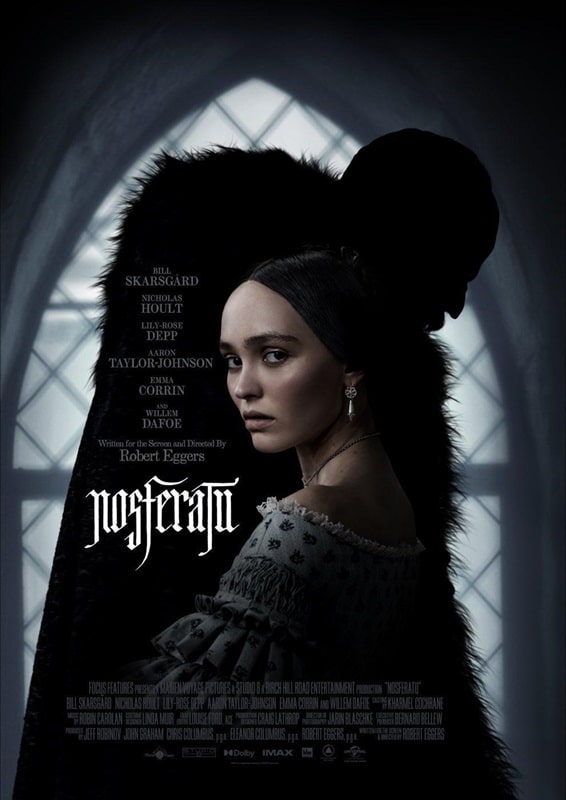
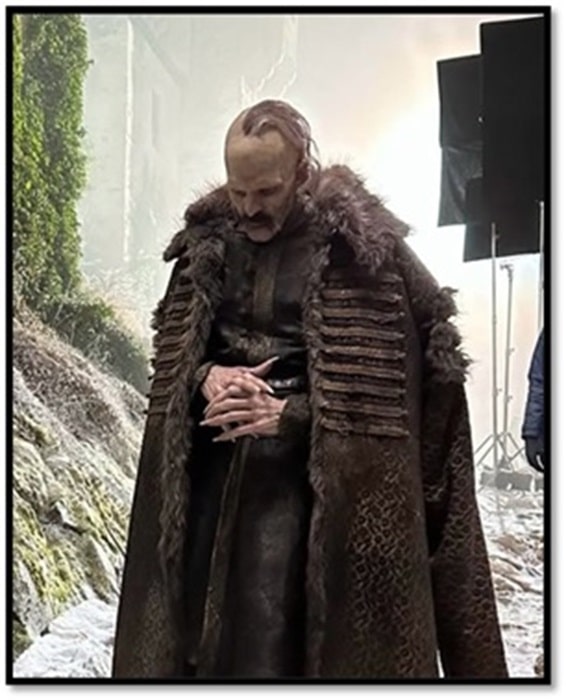


Recent comments